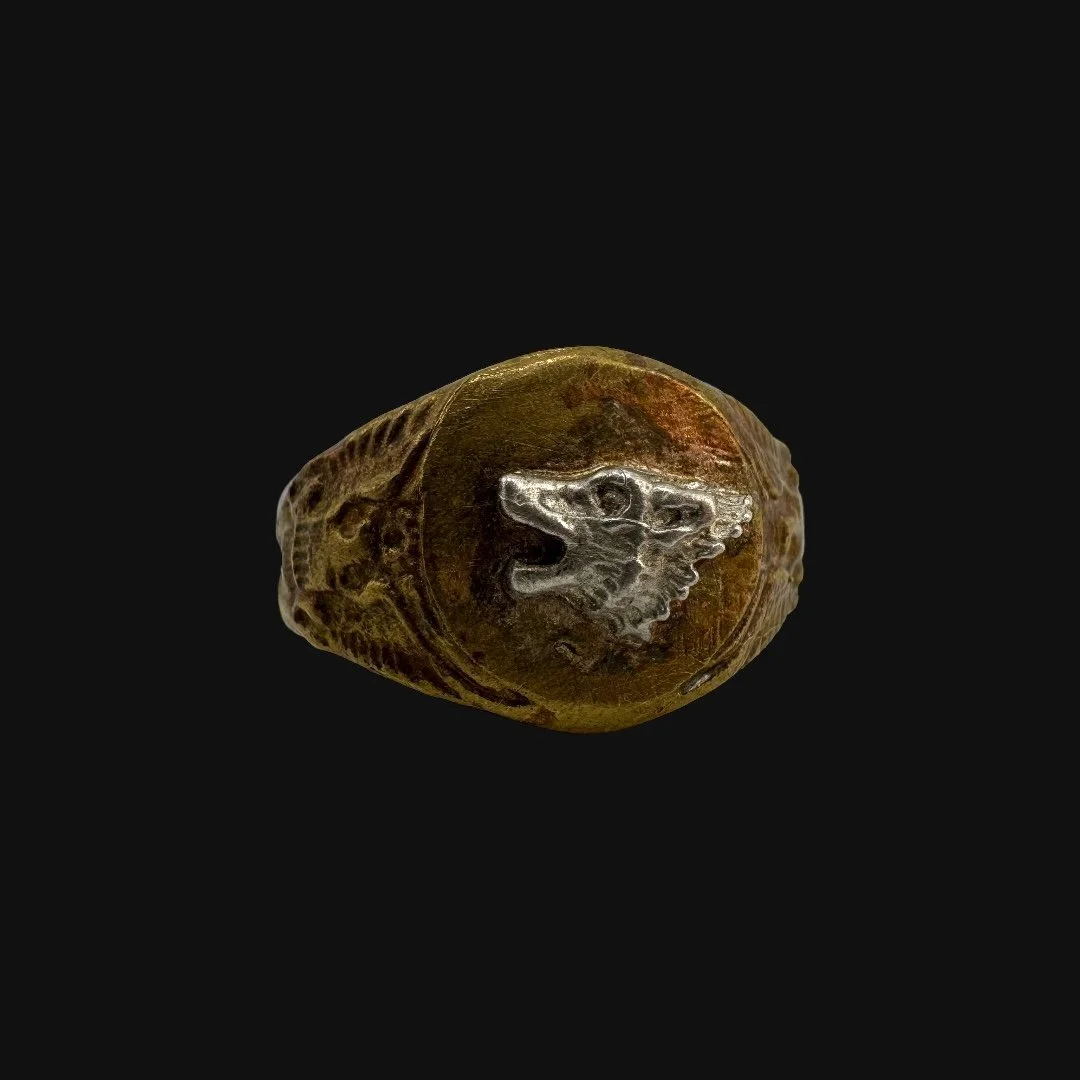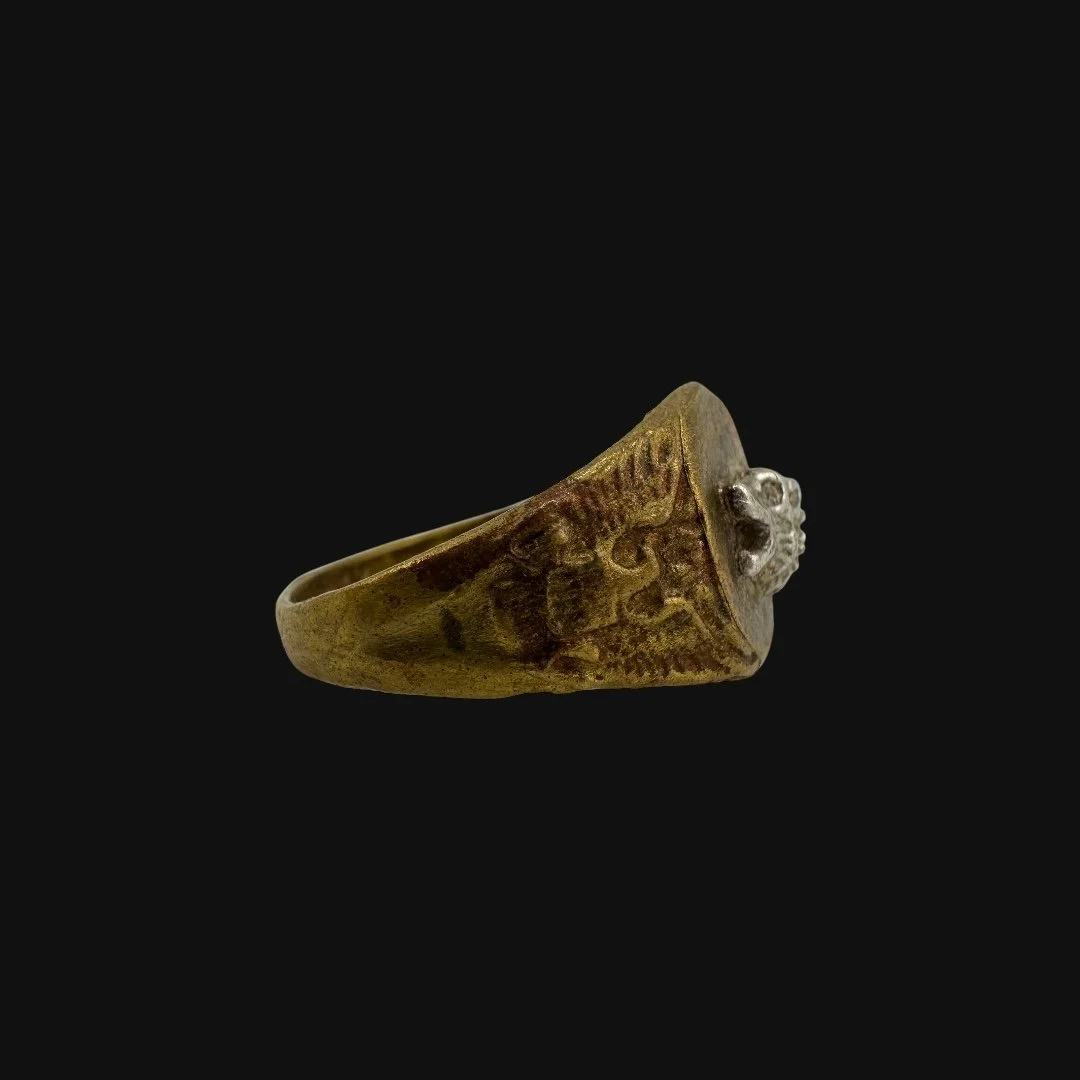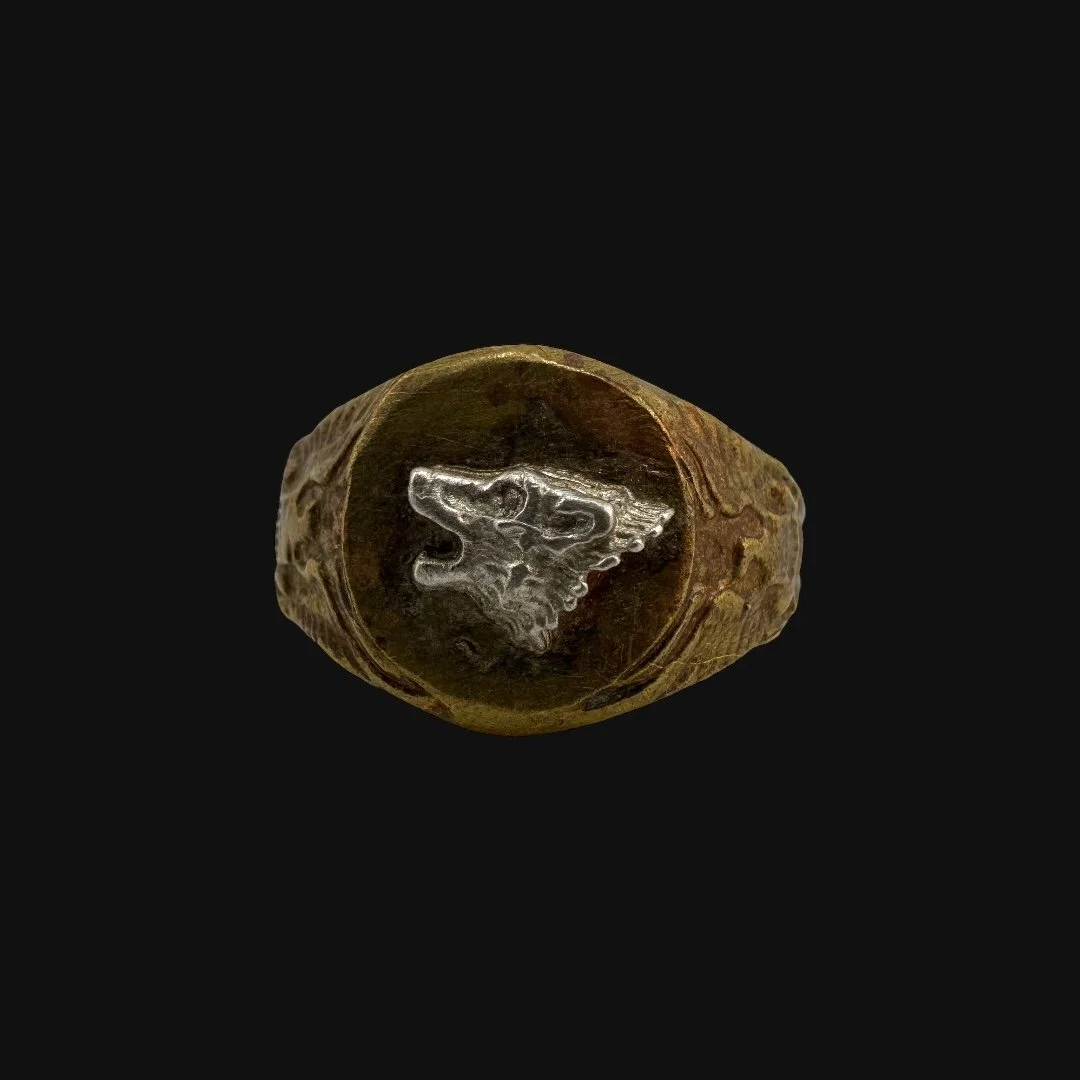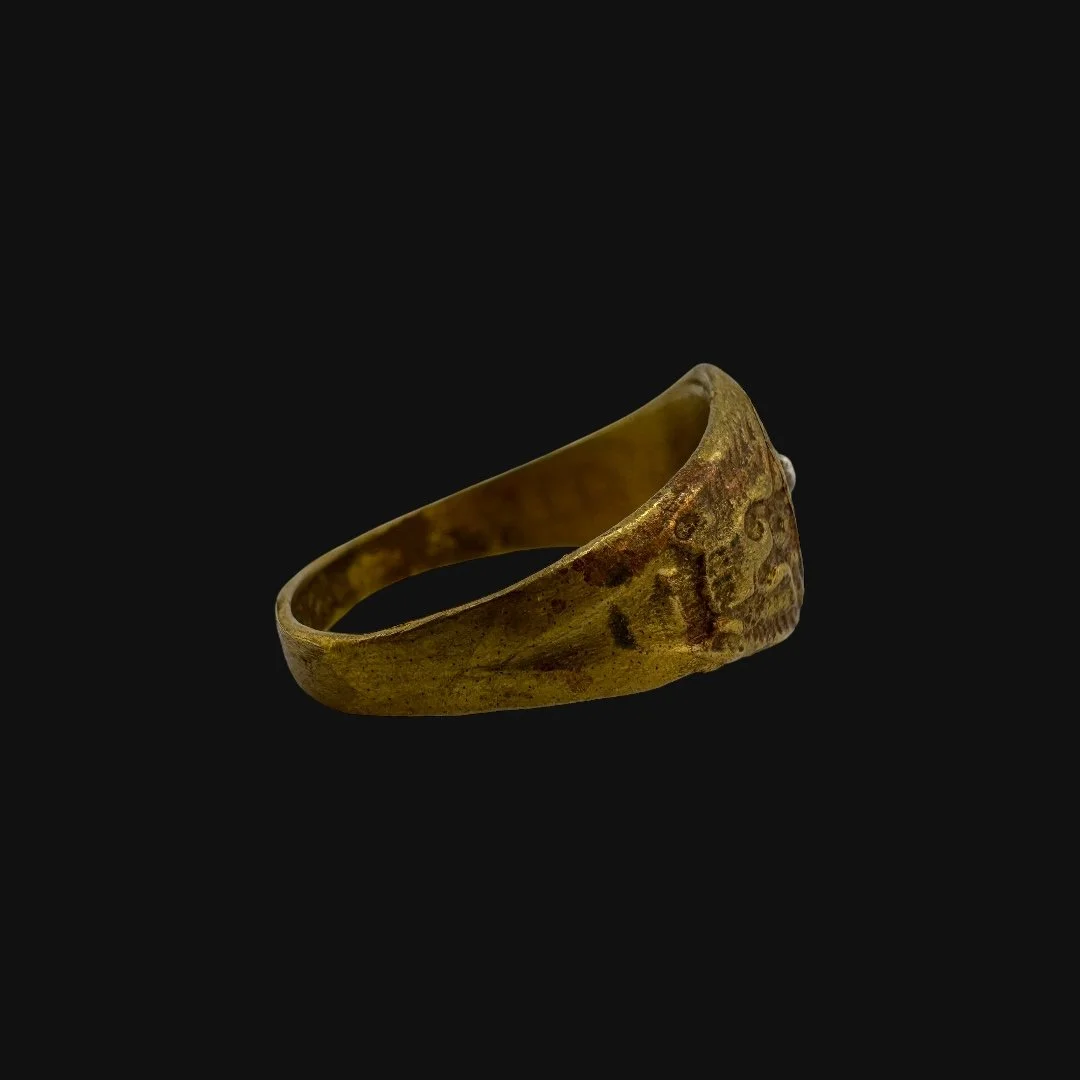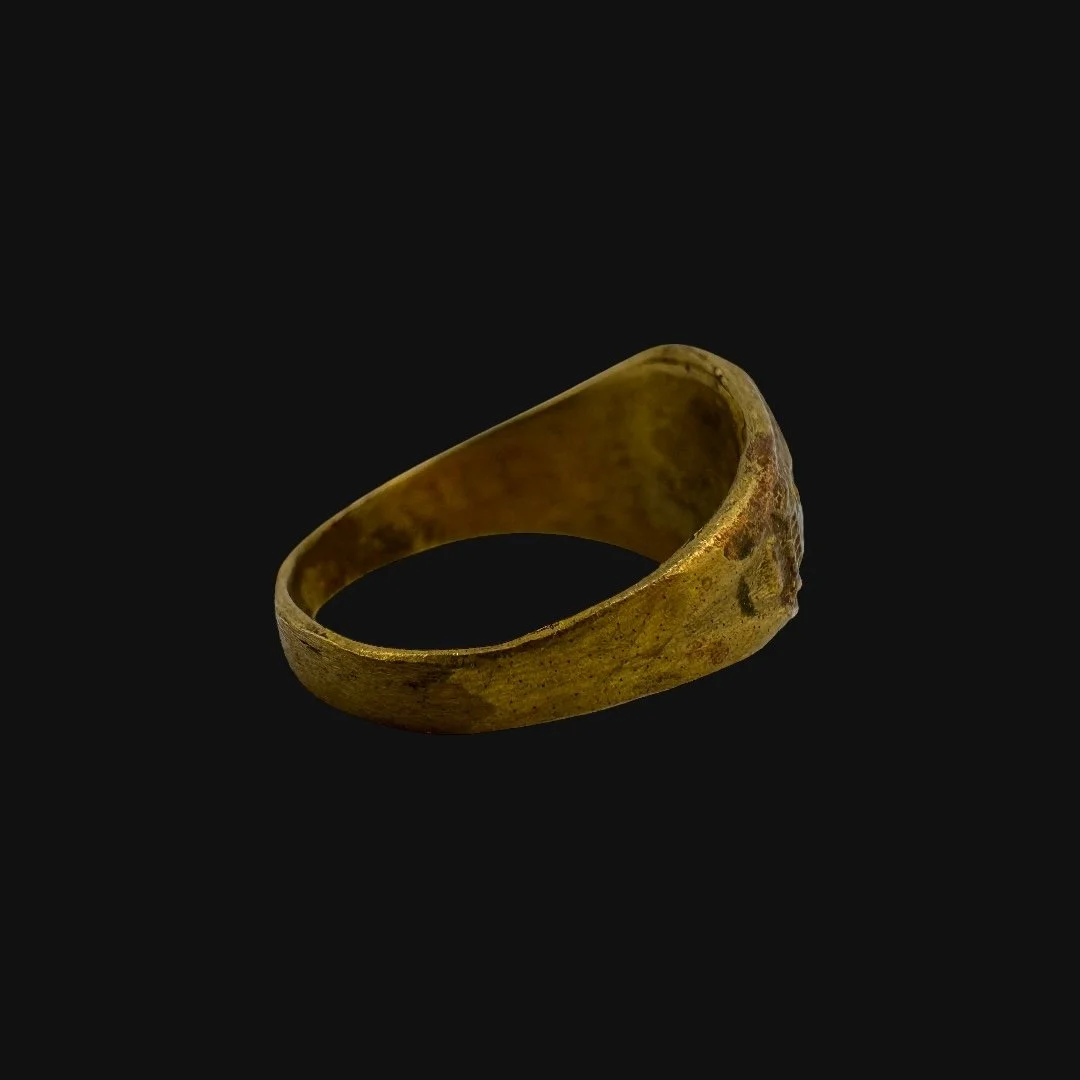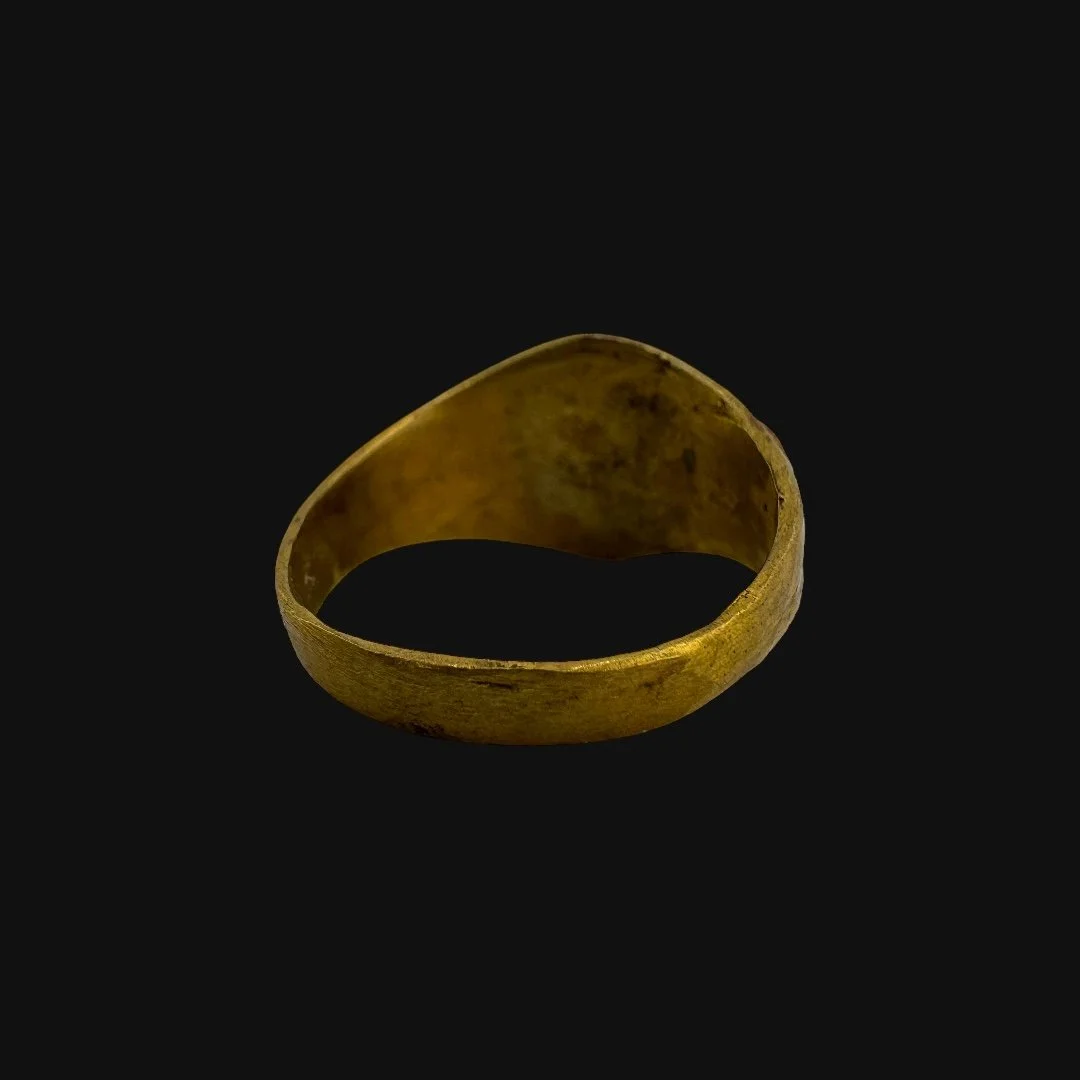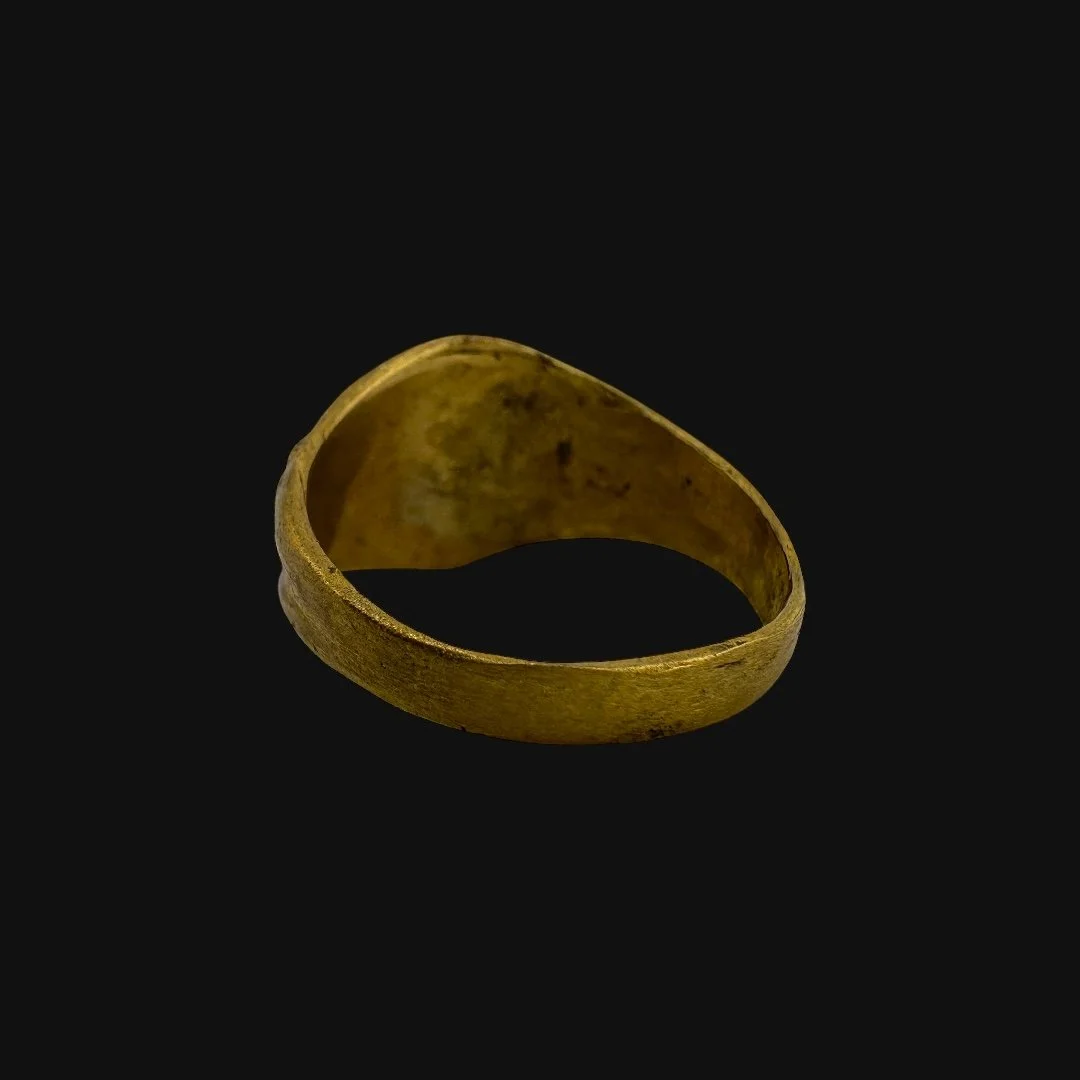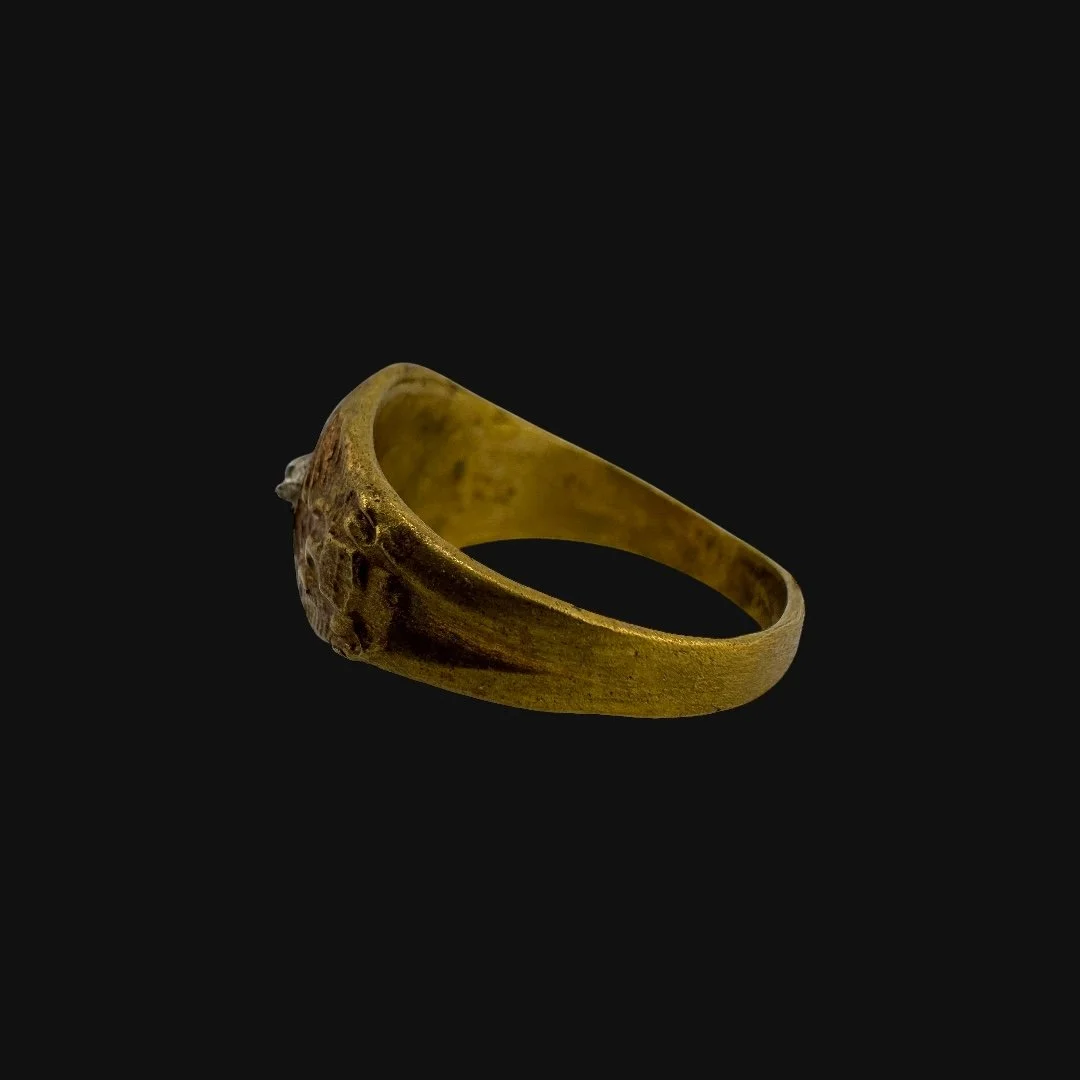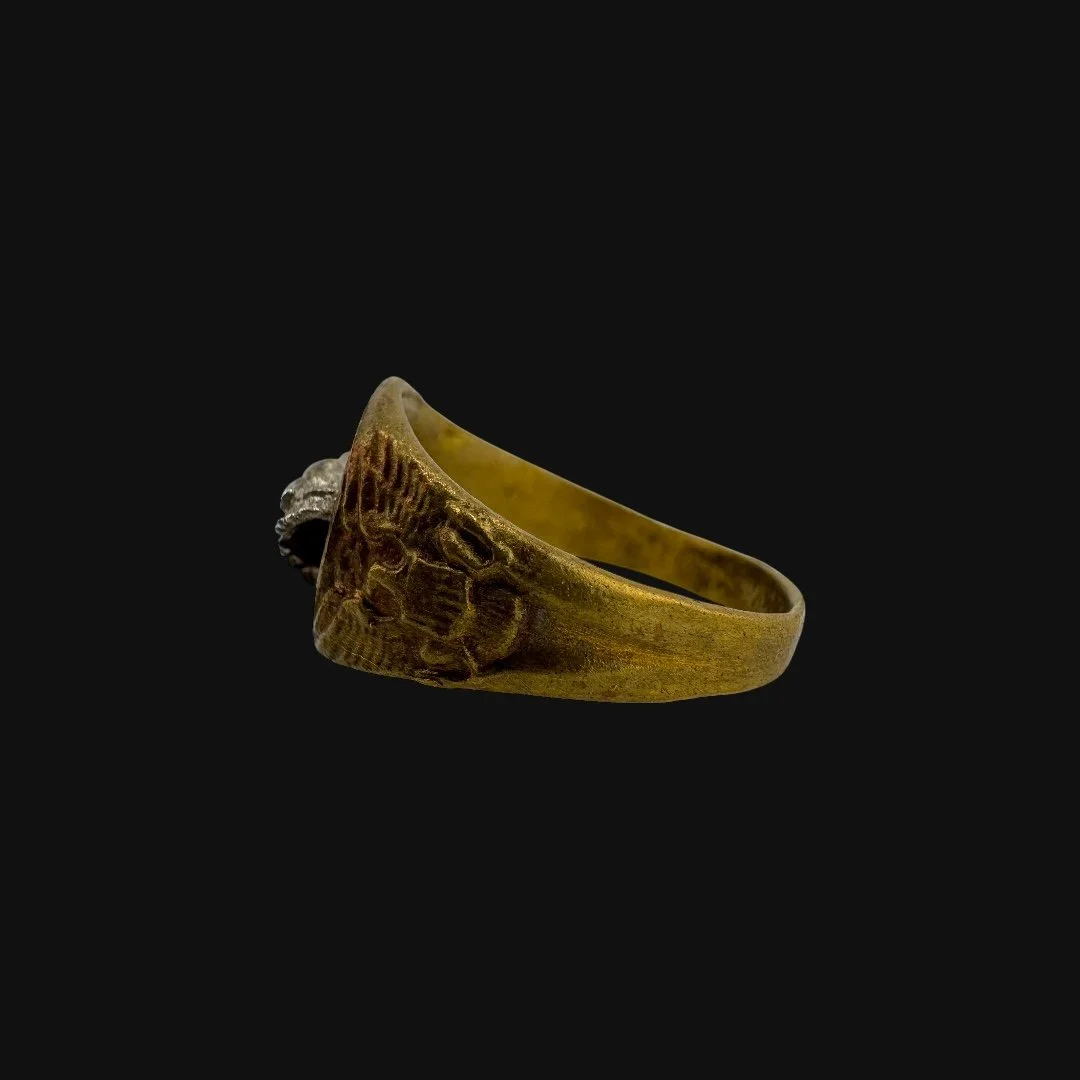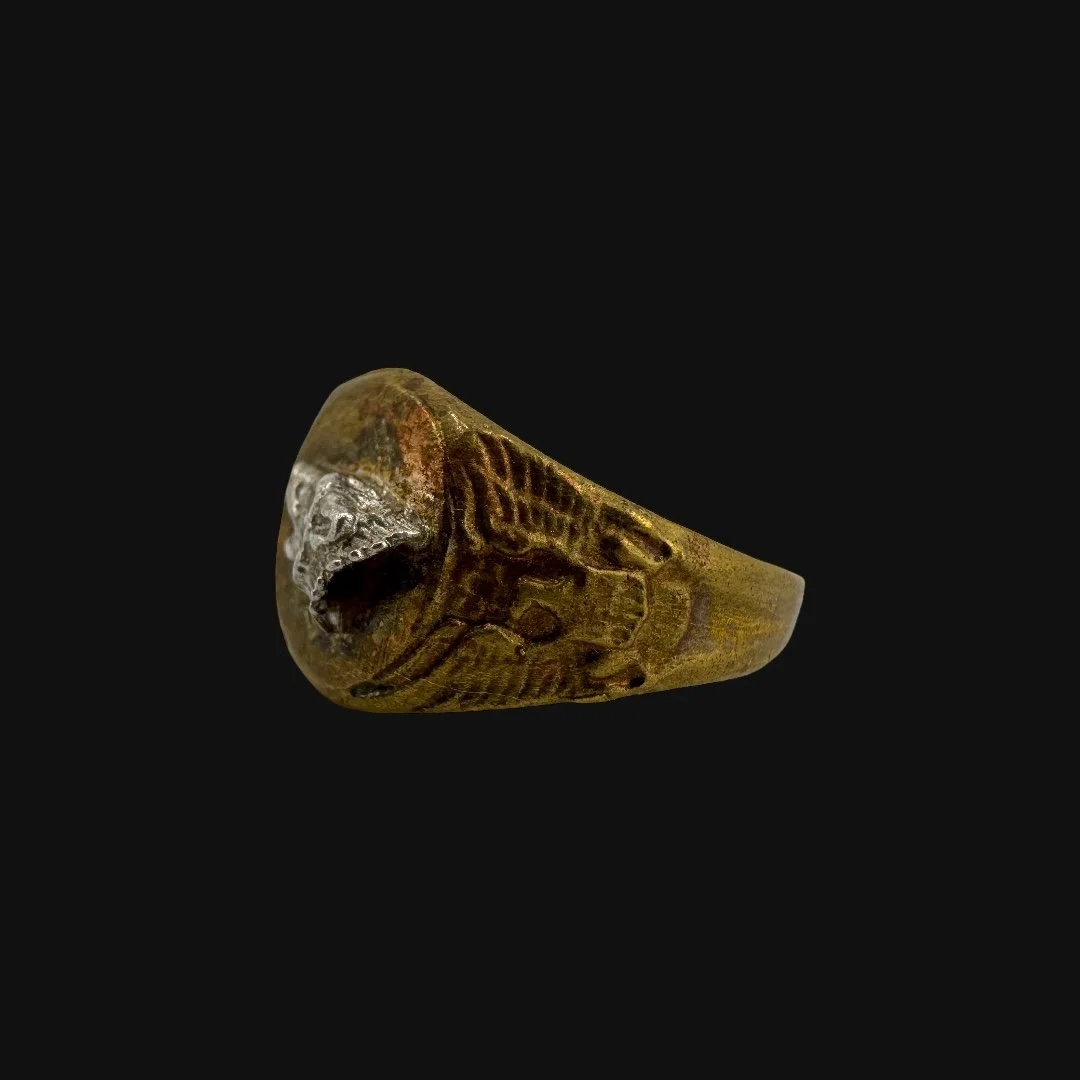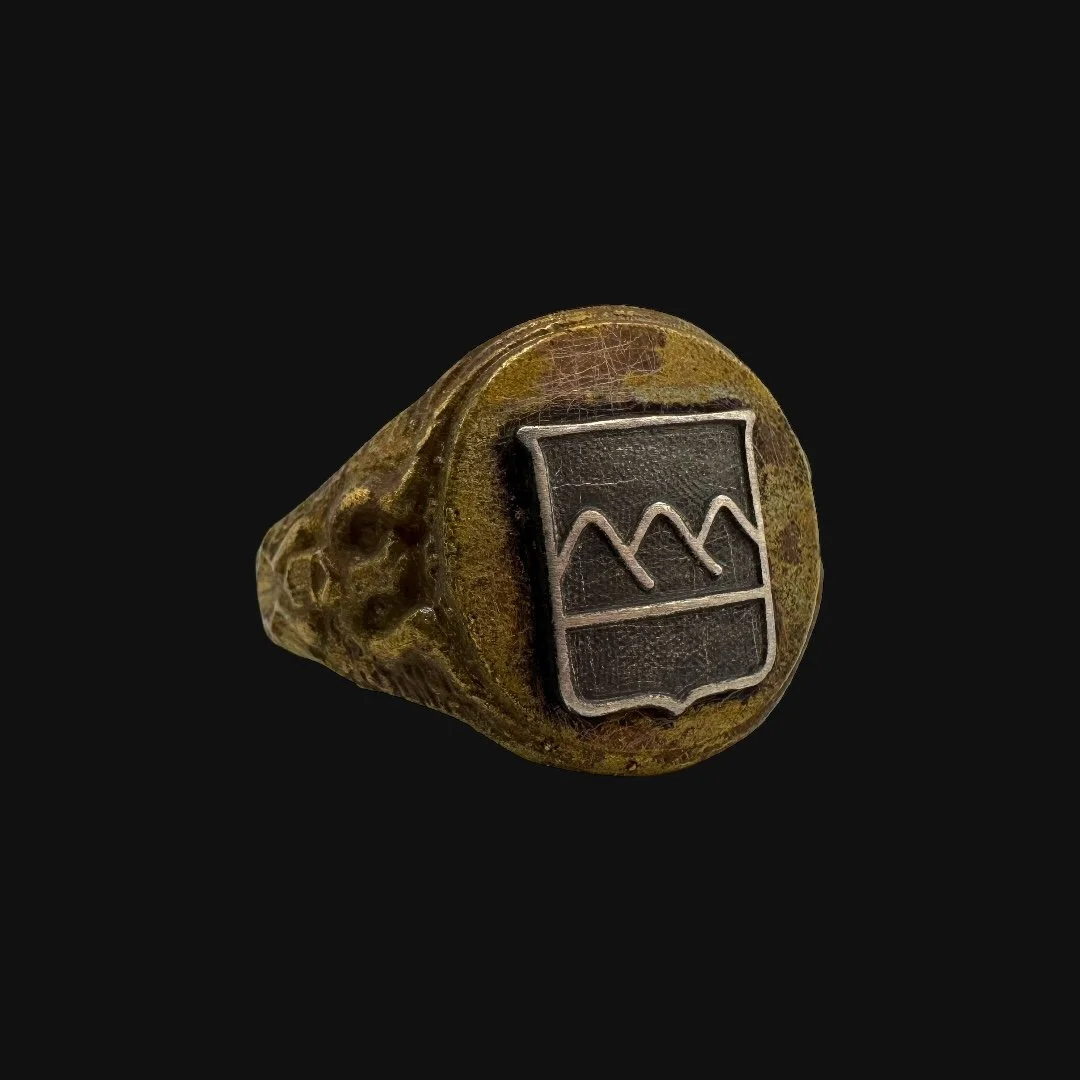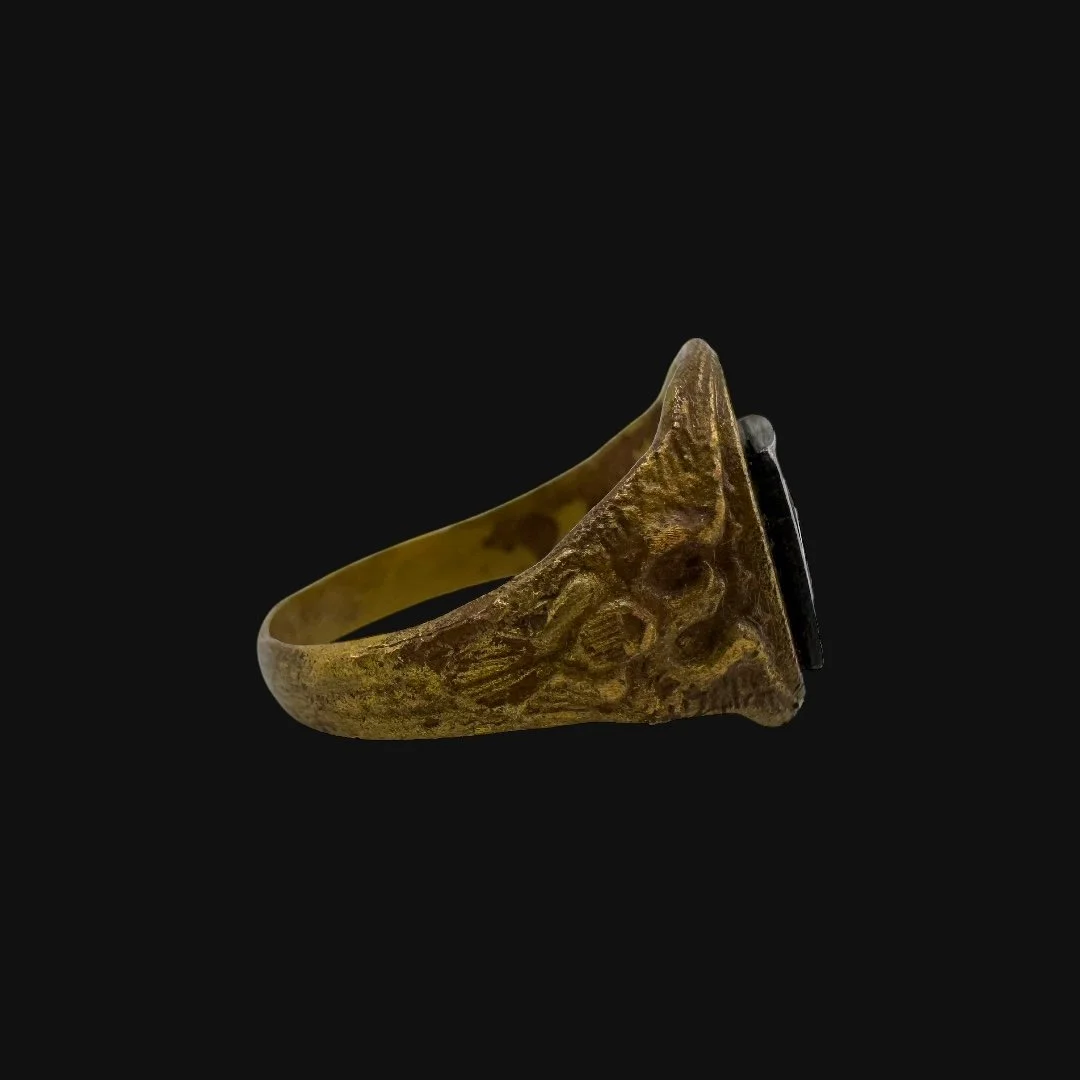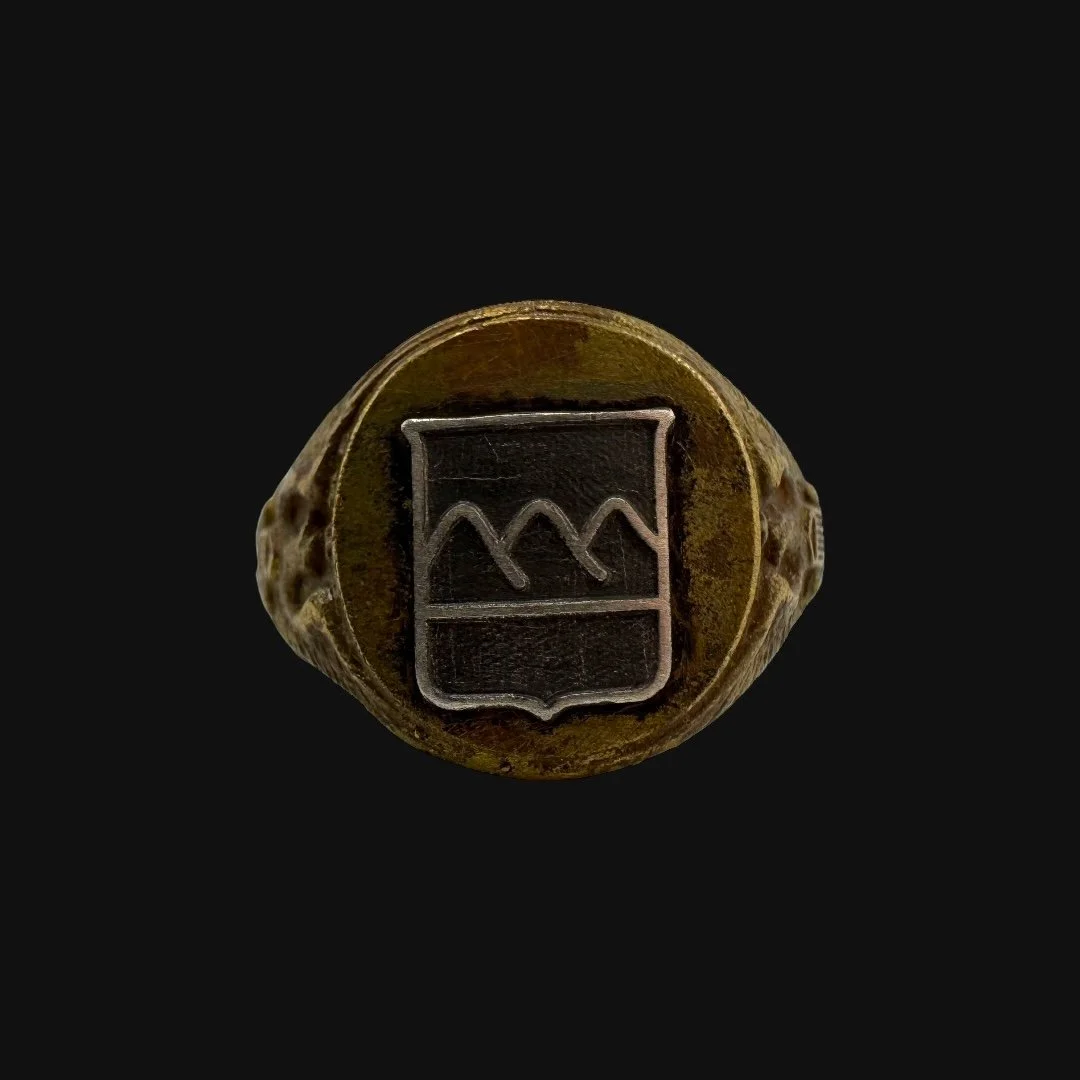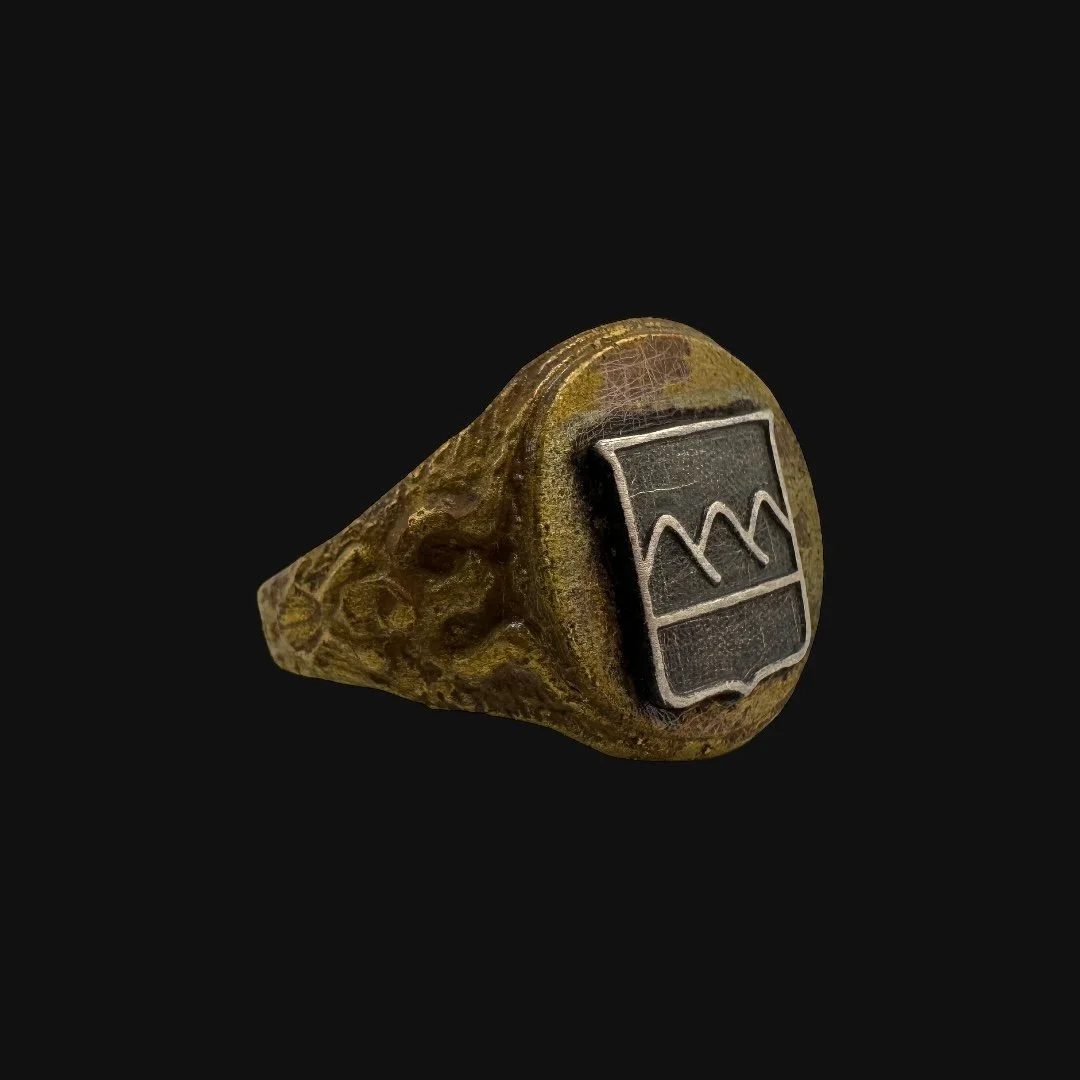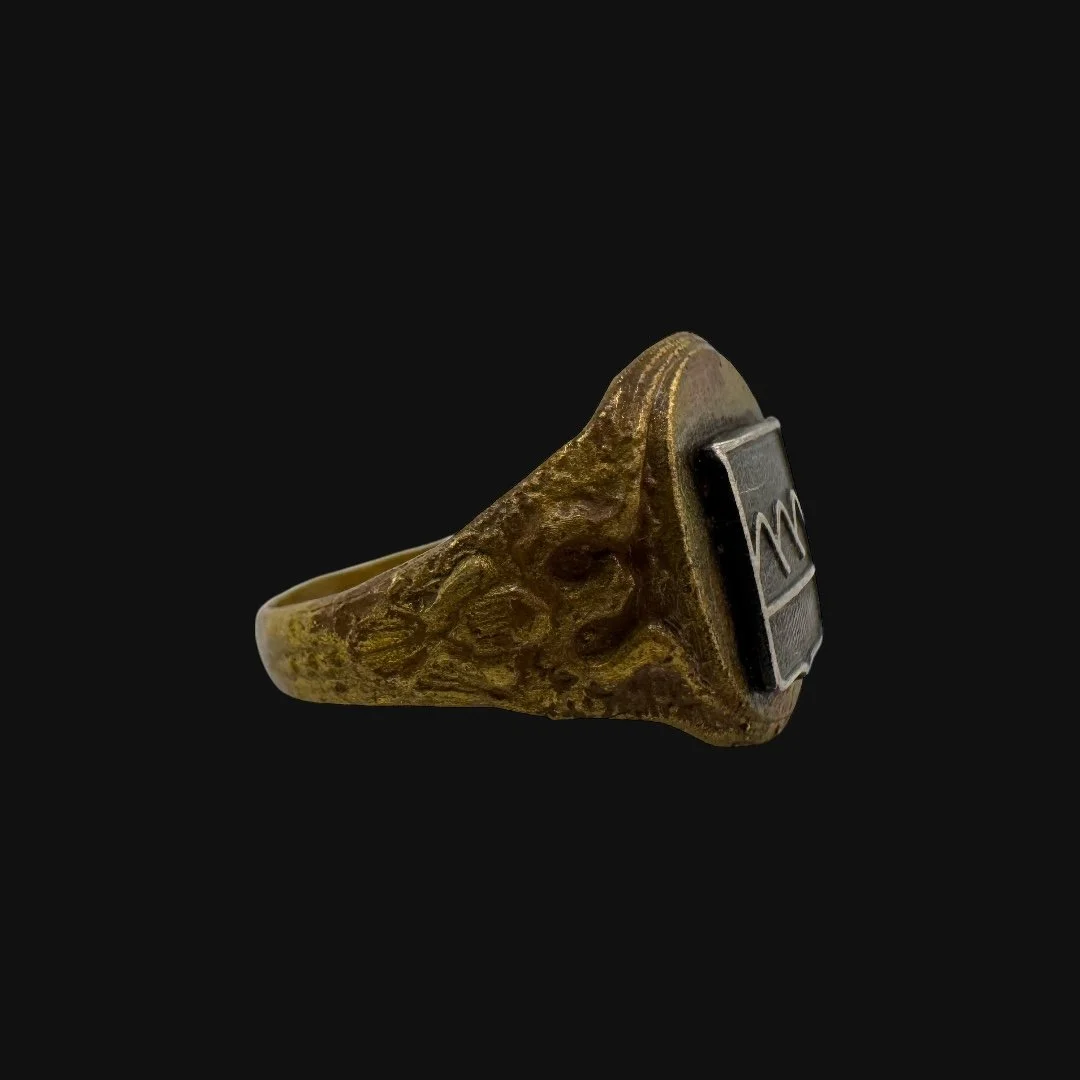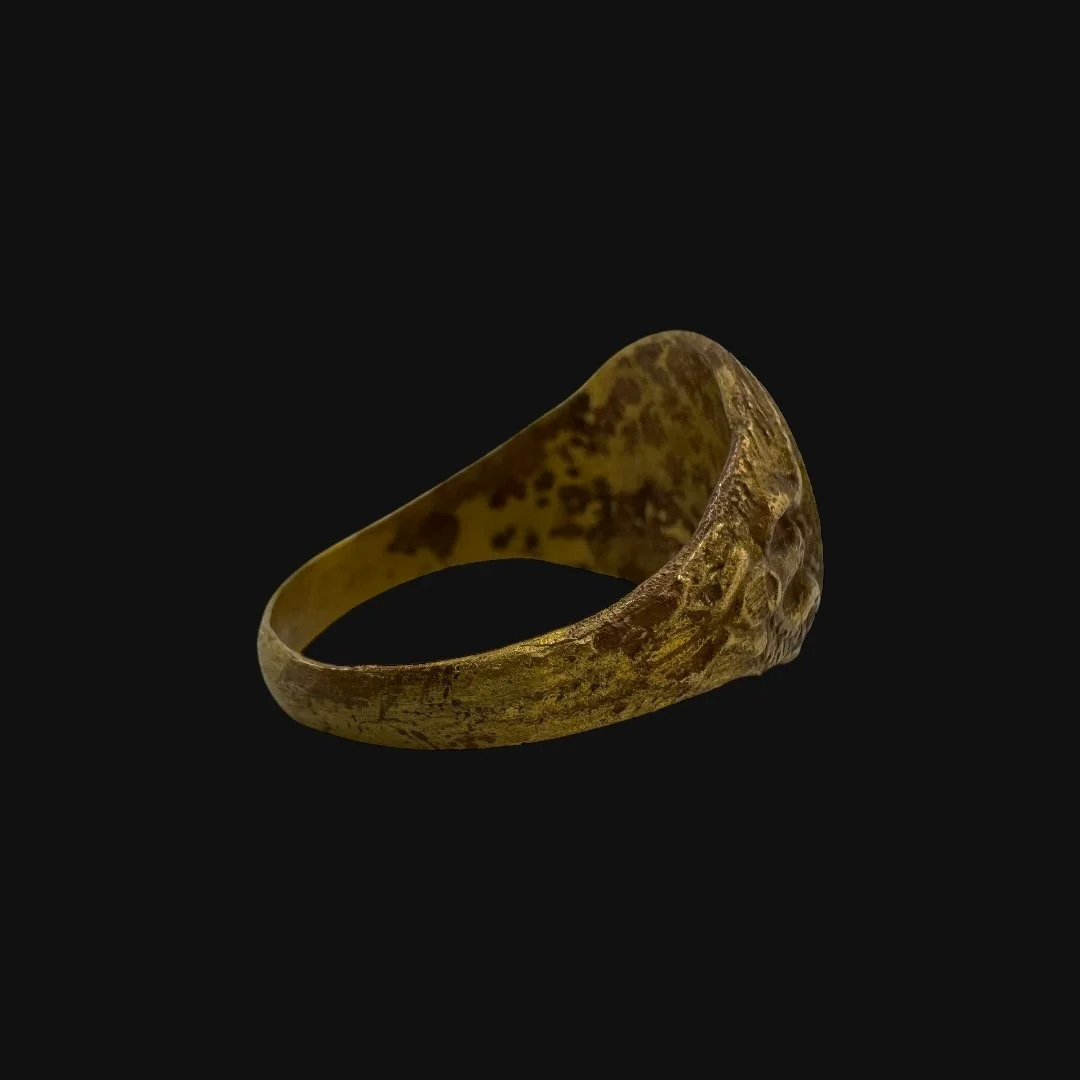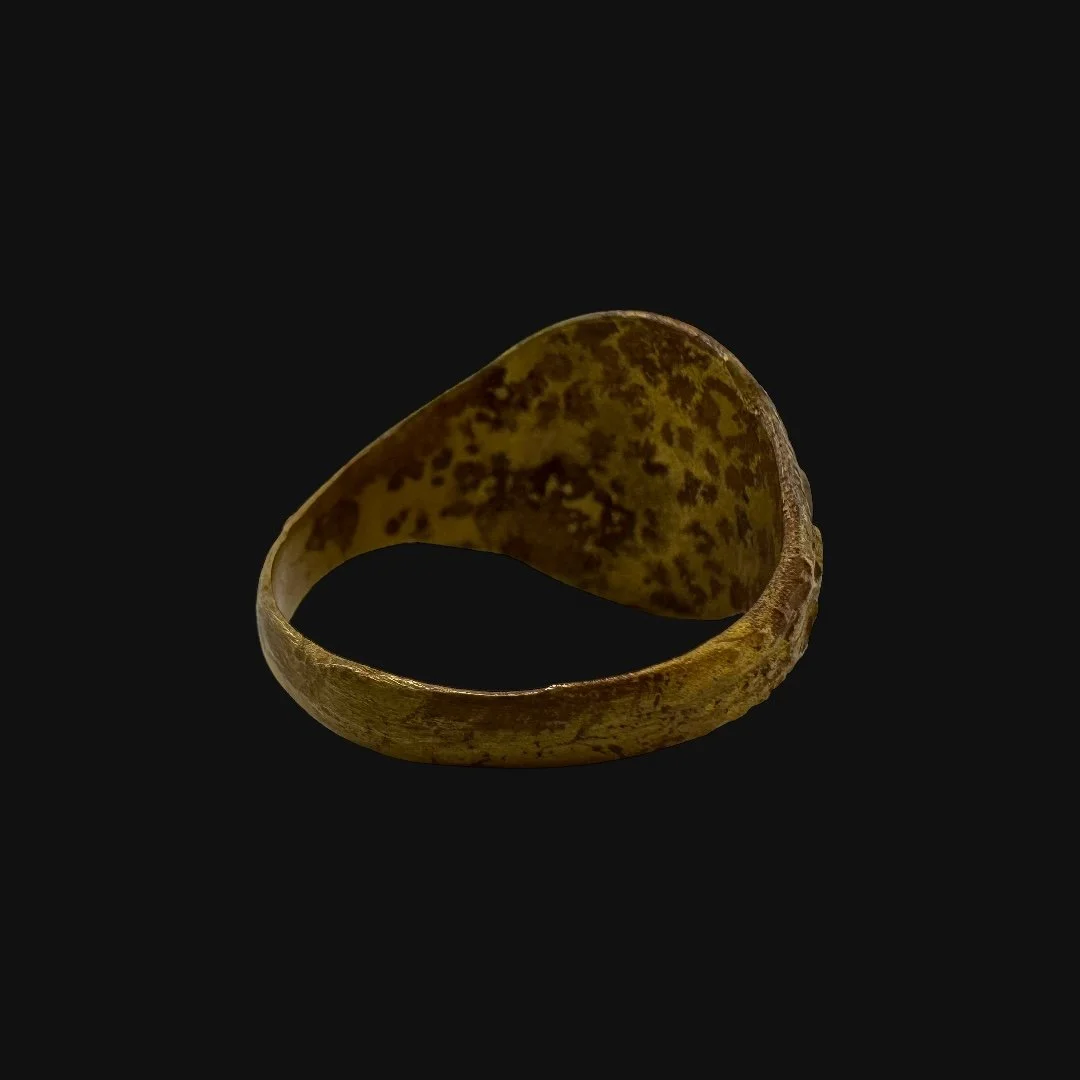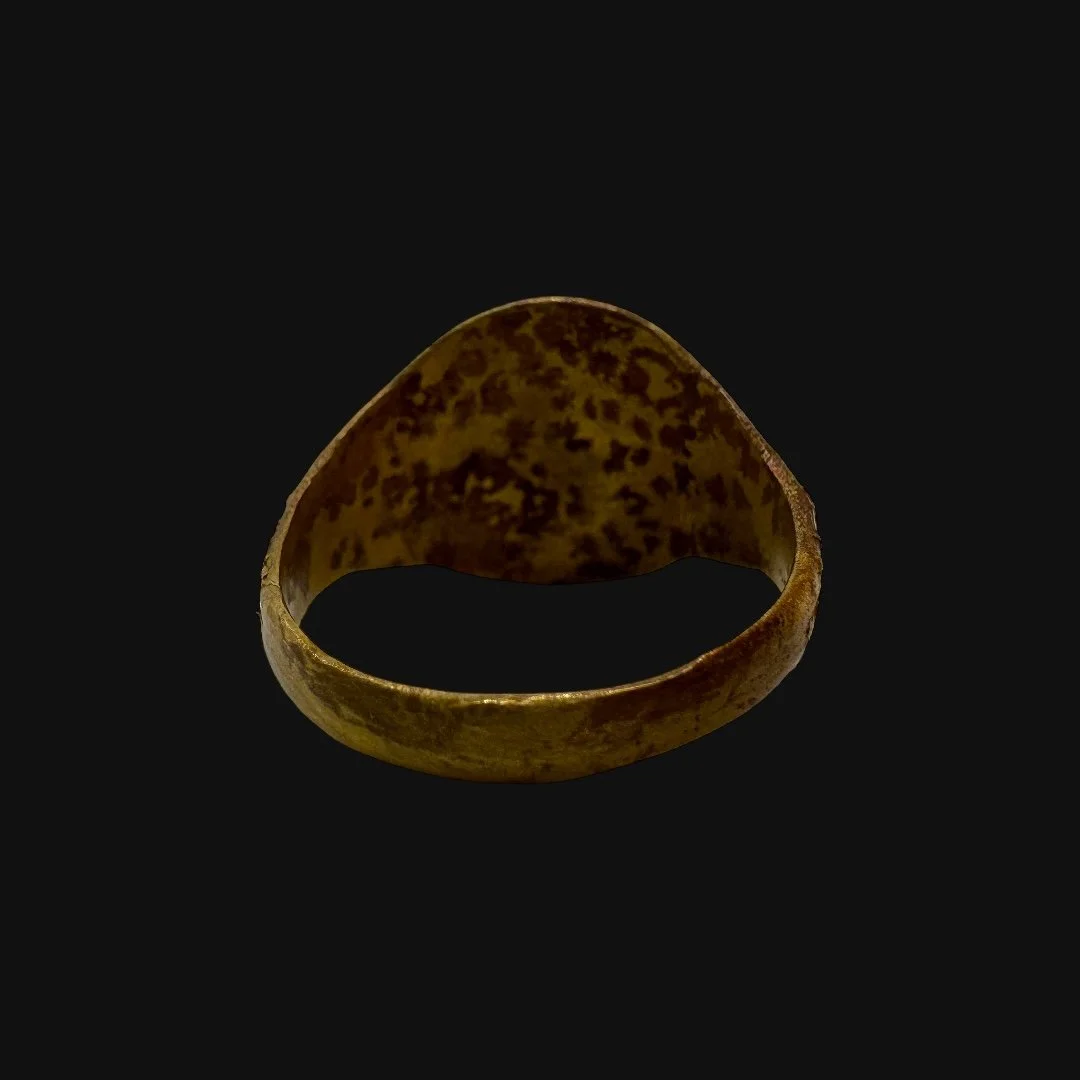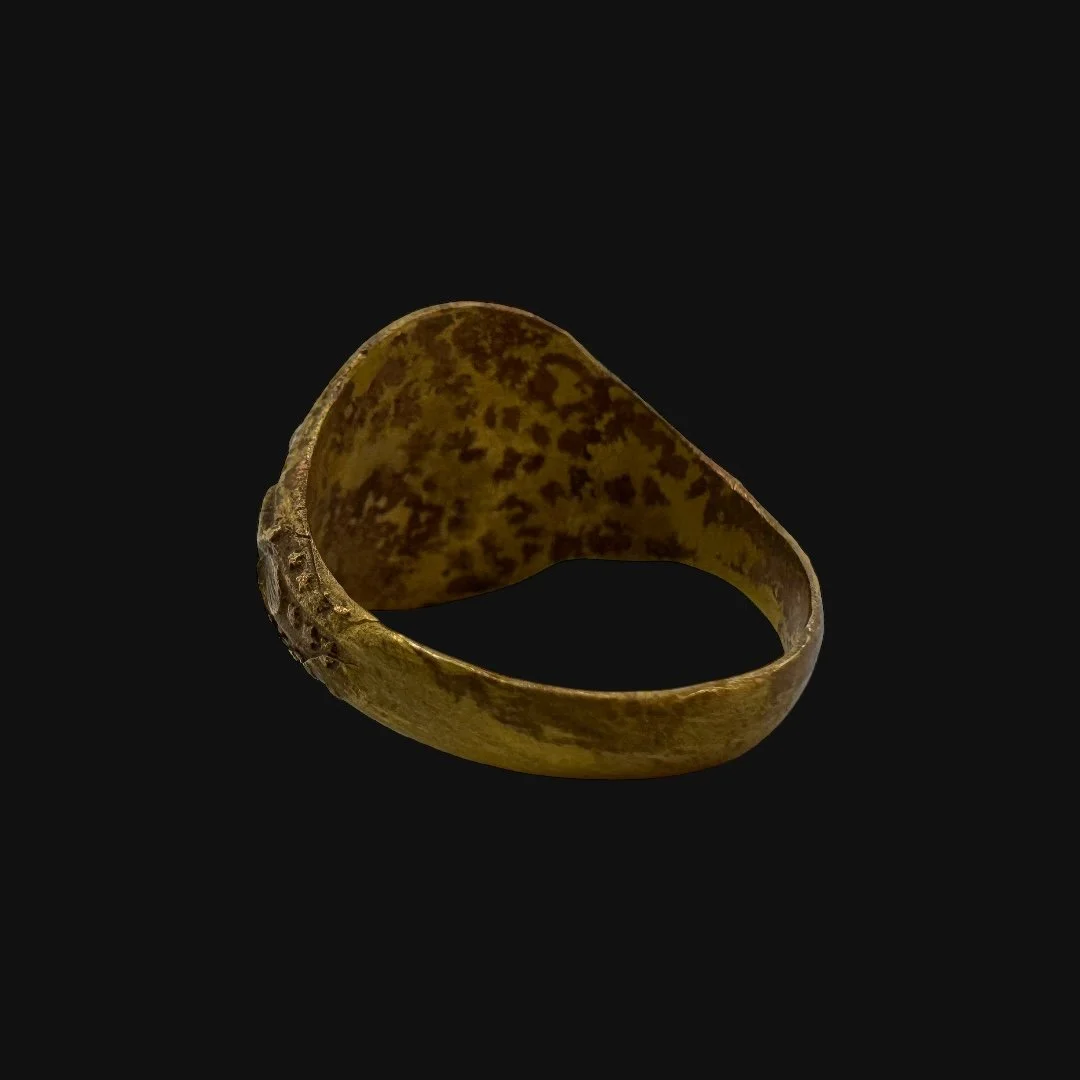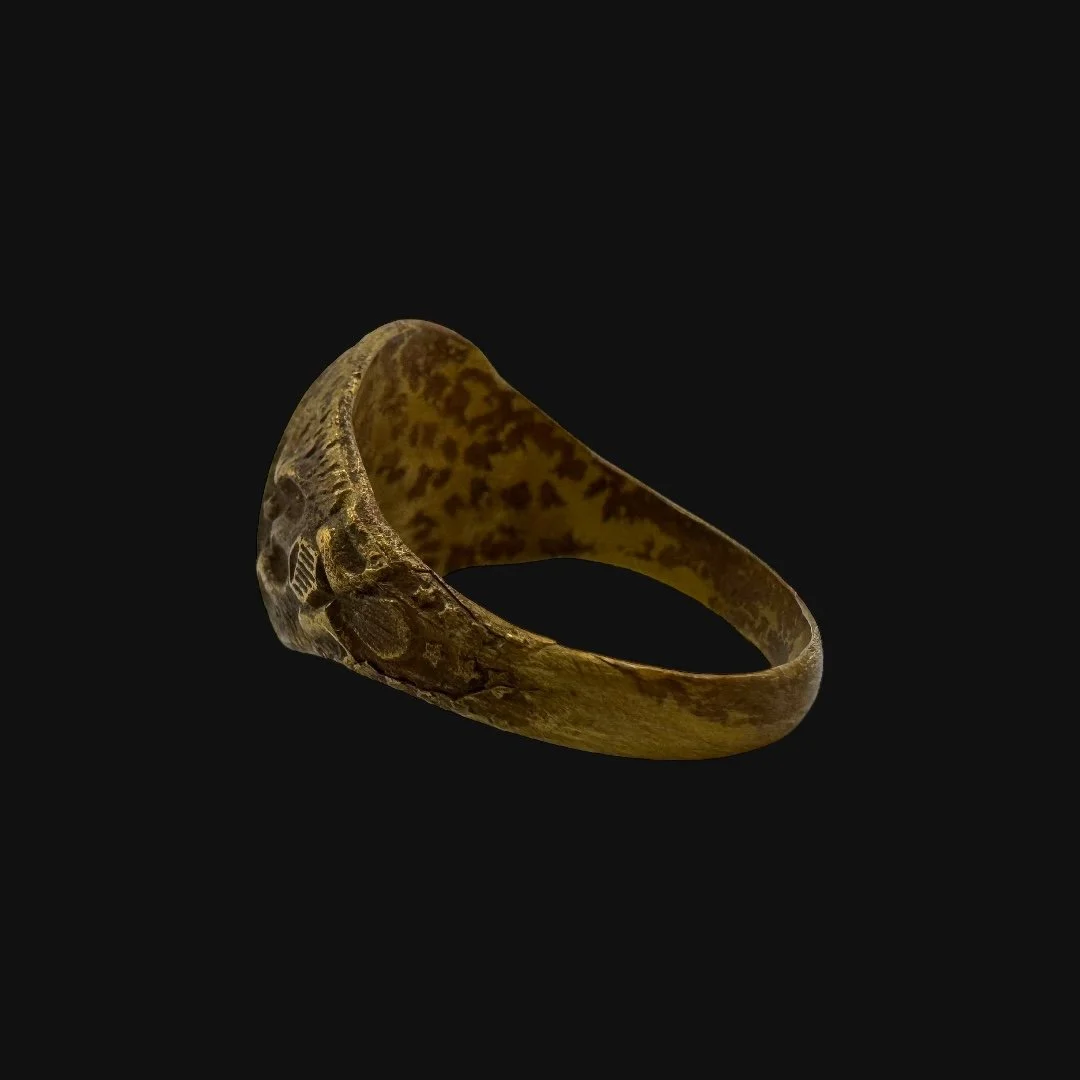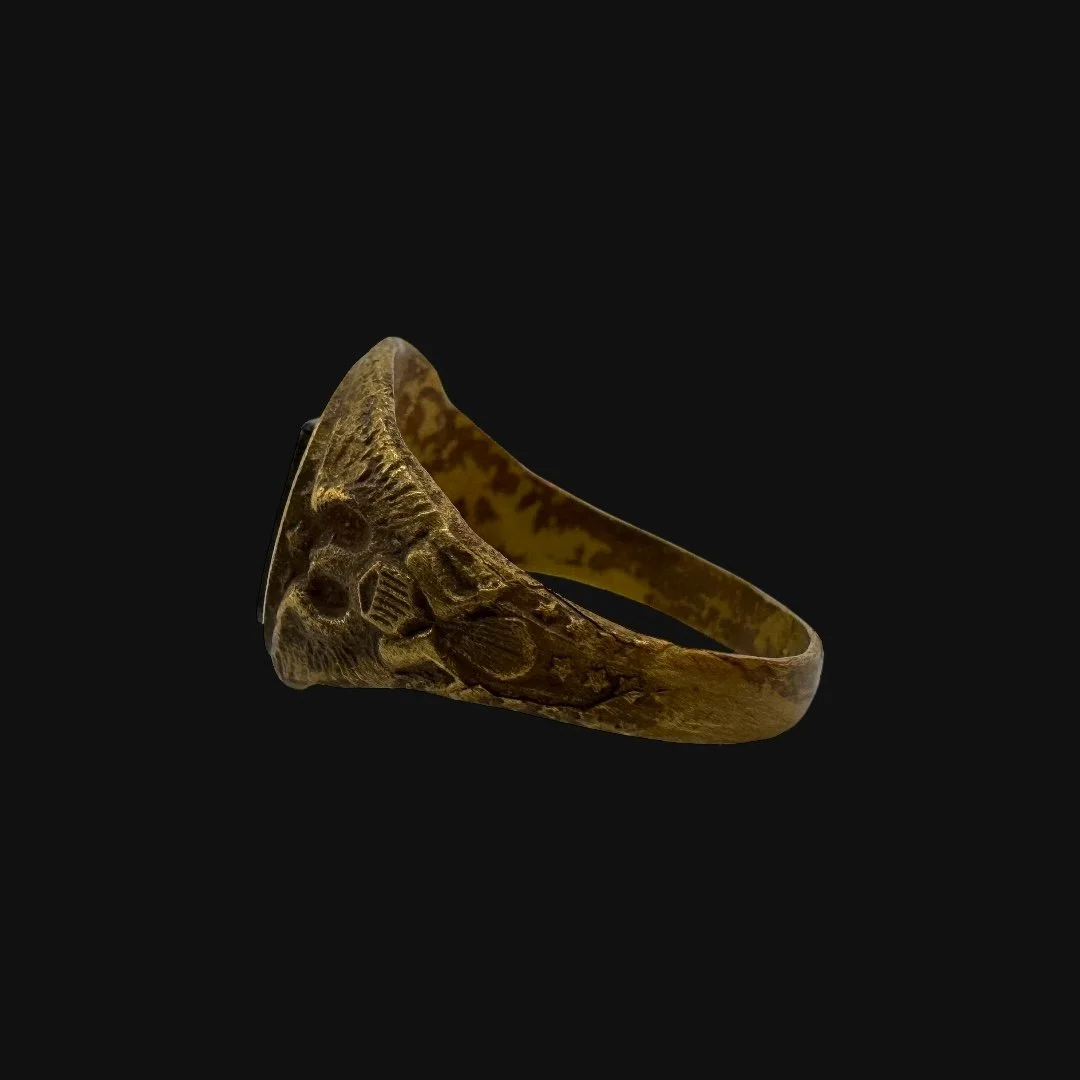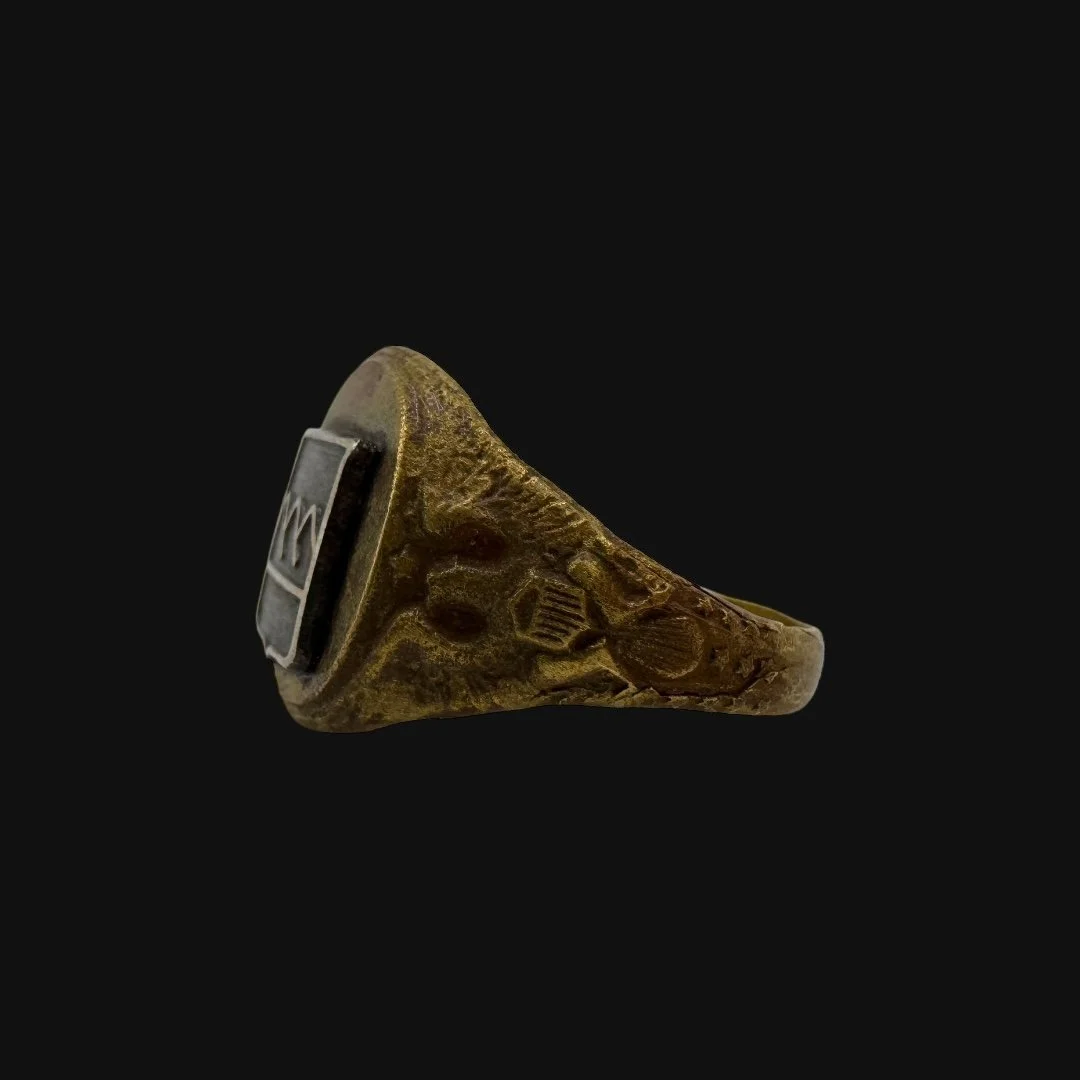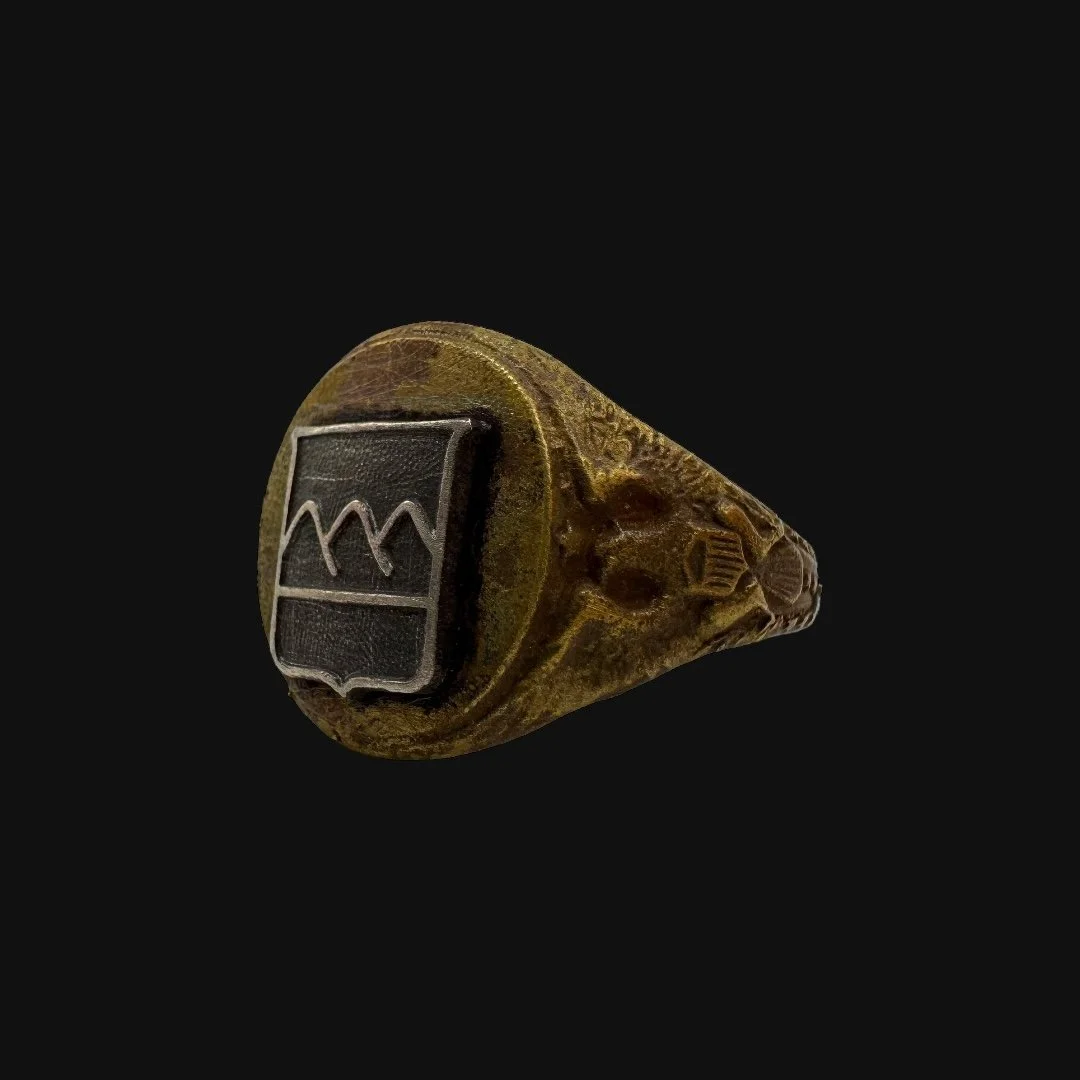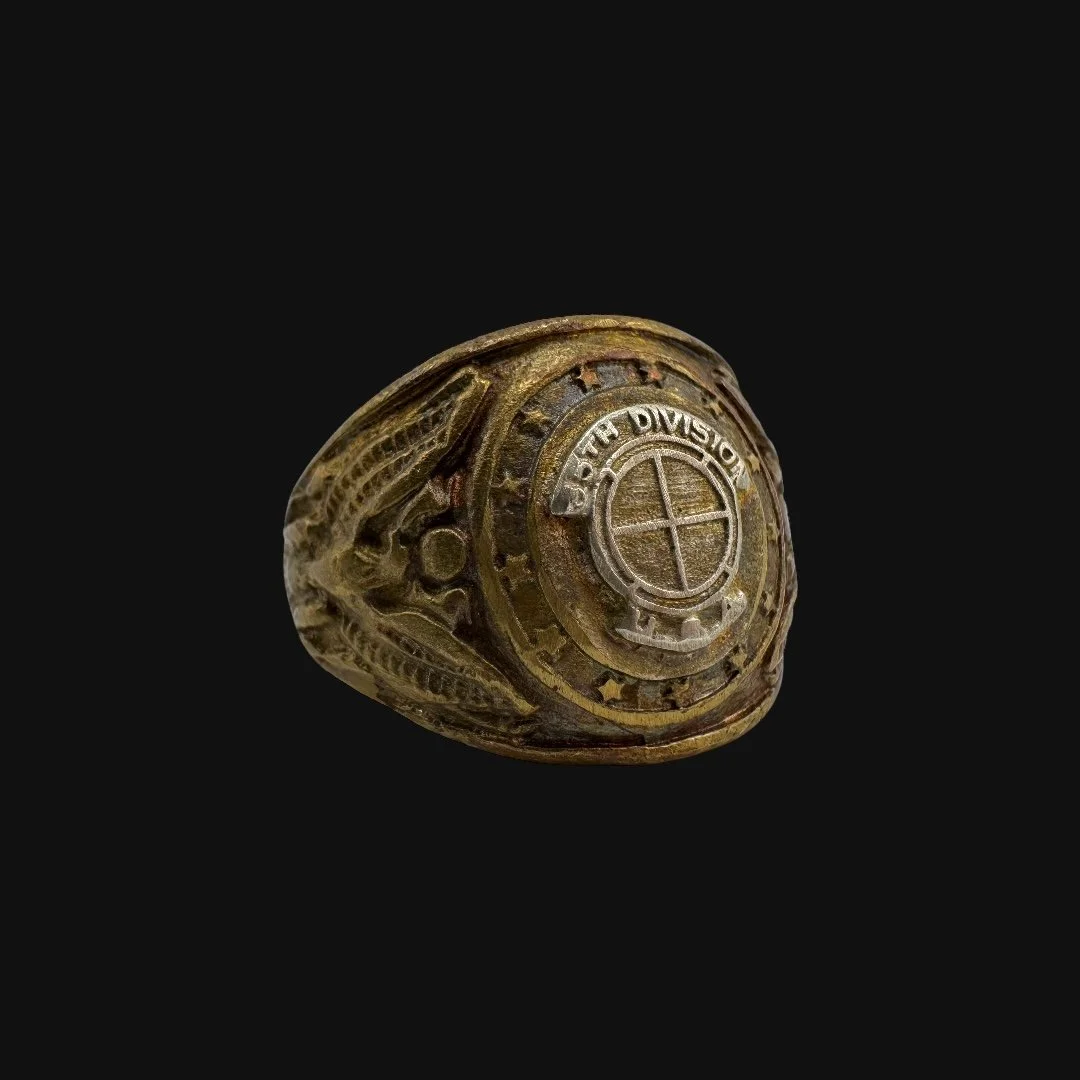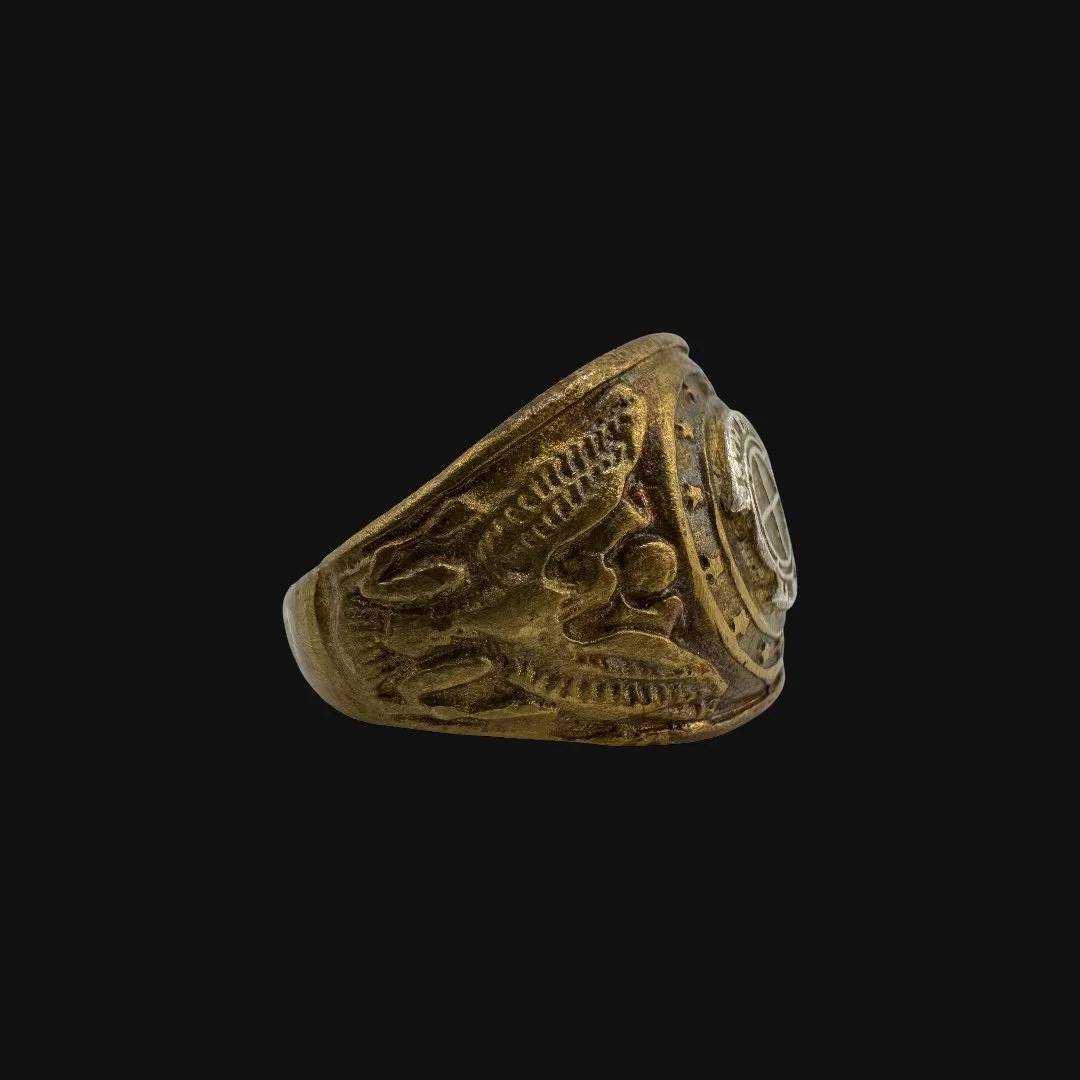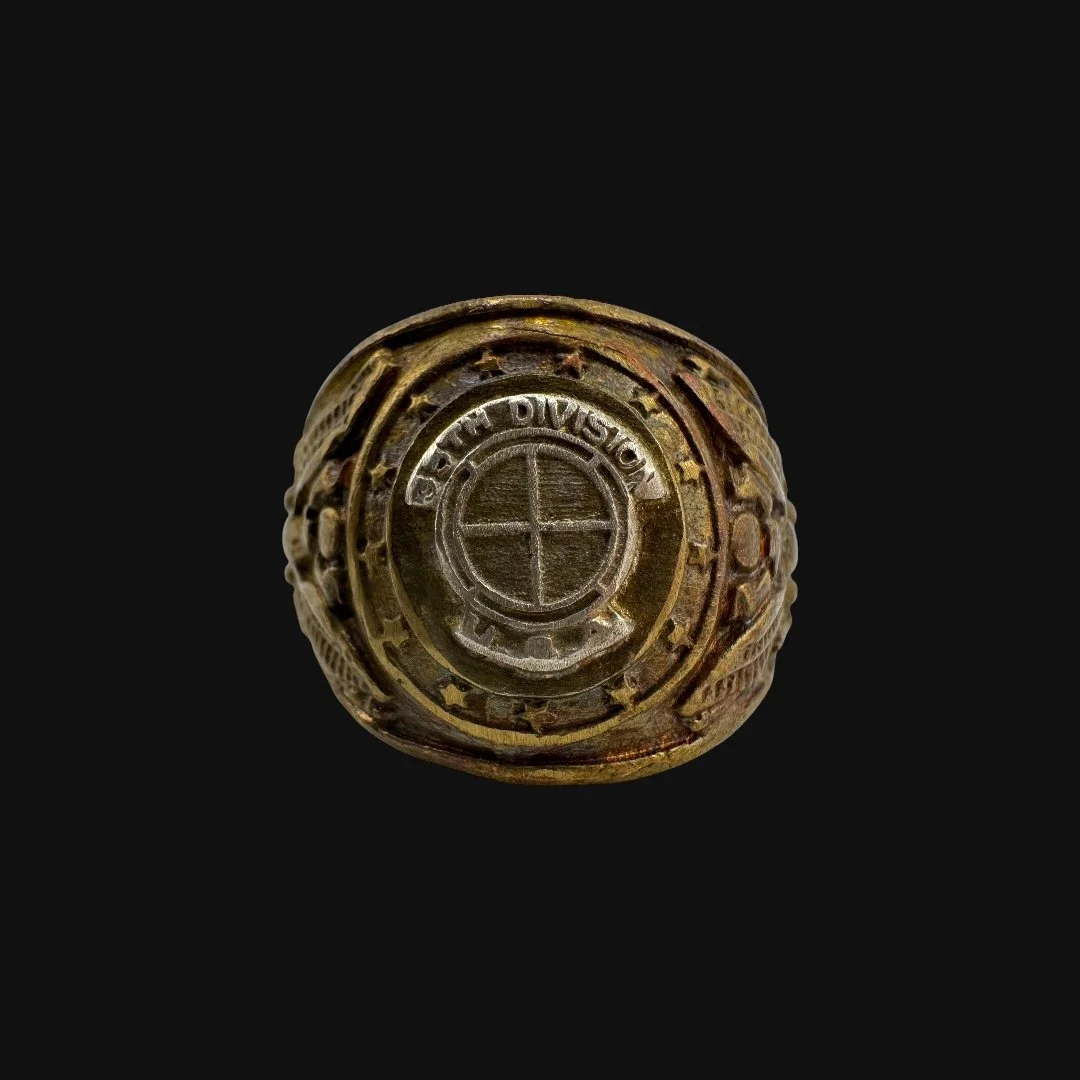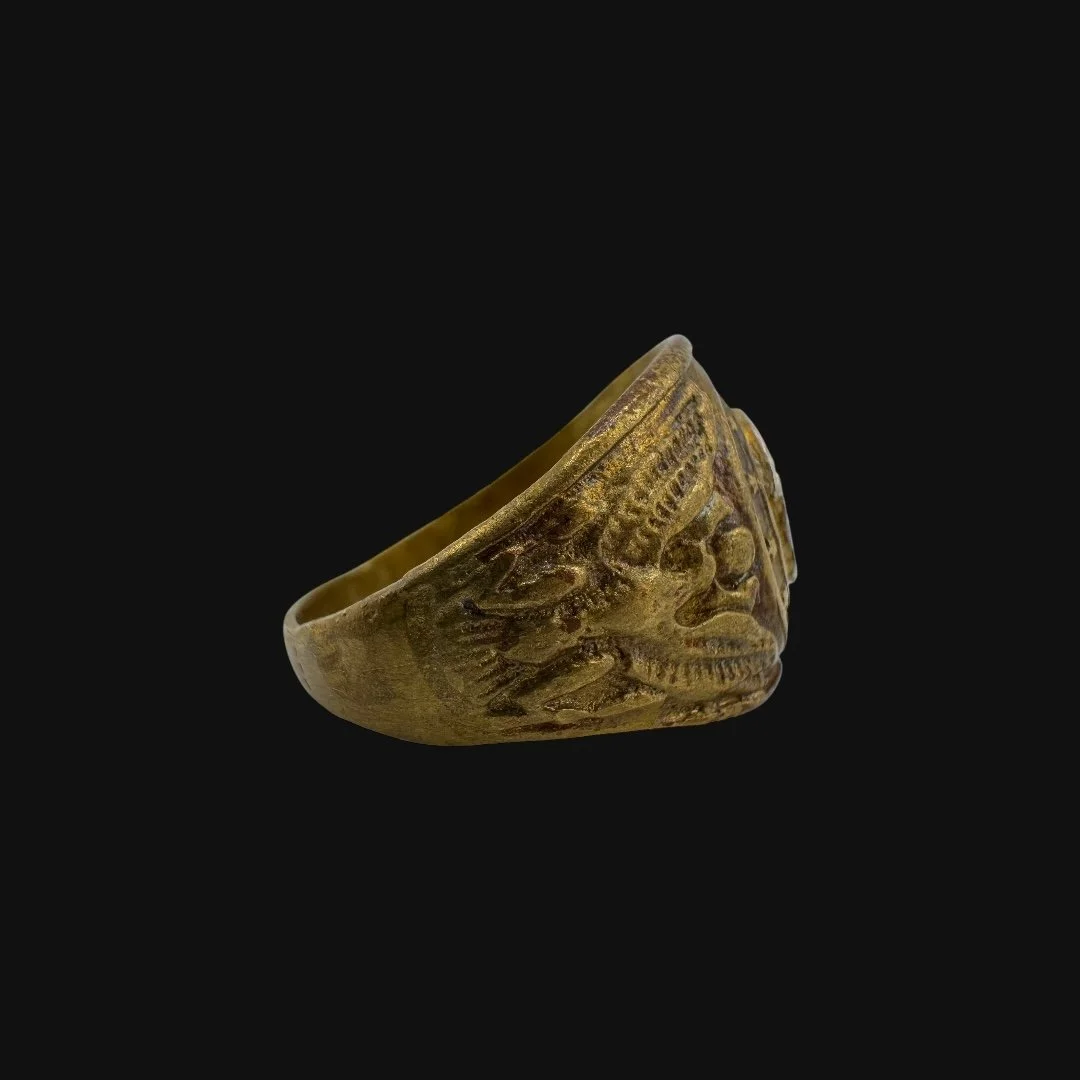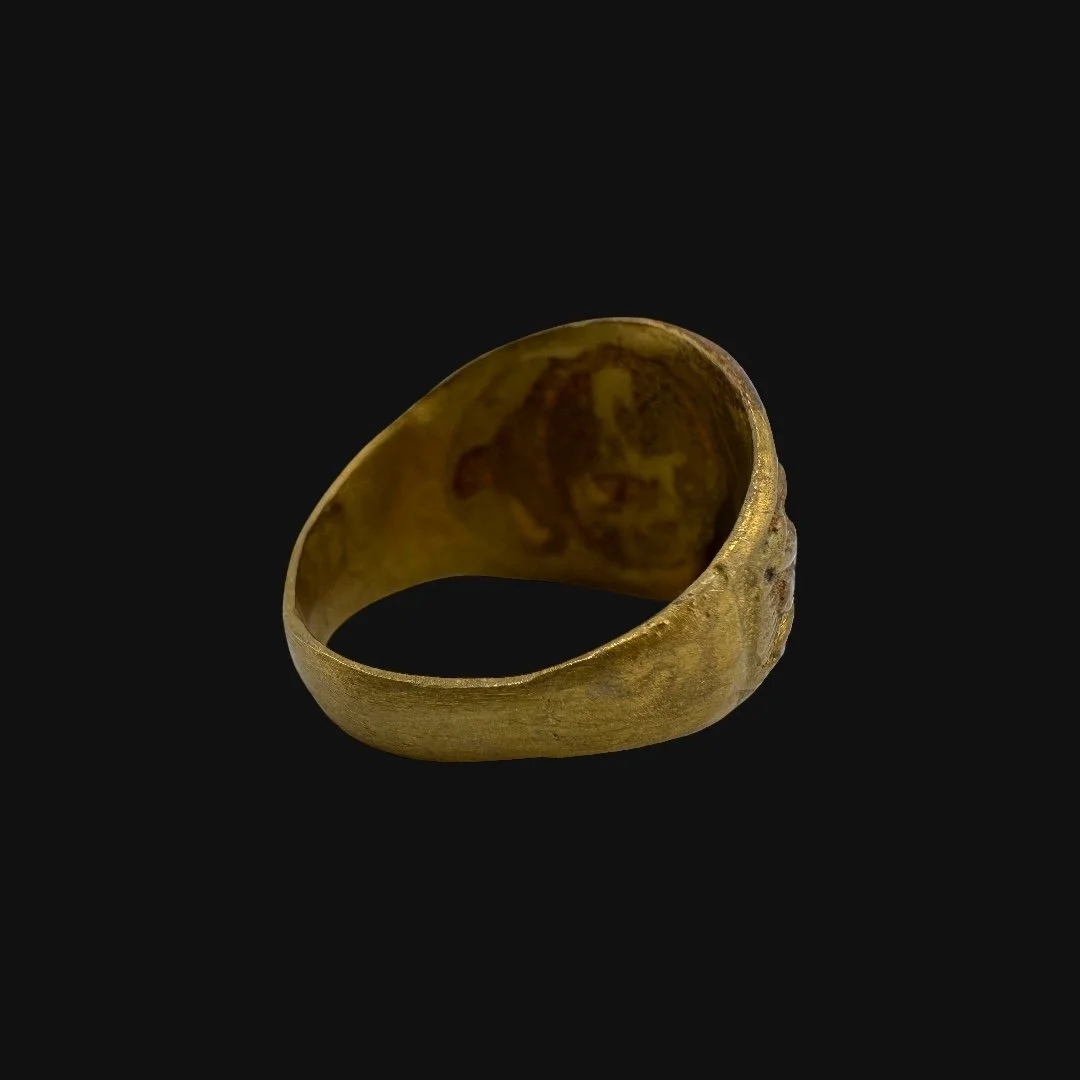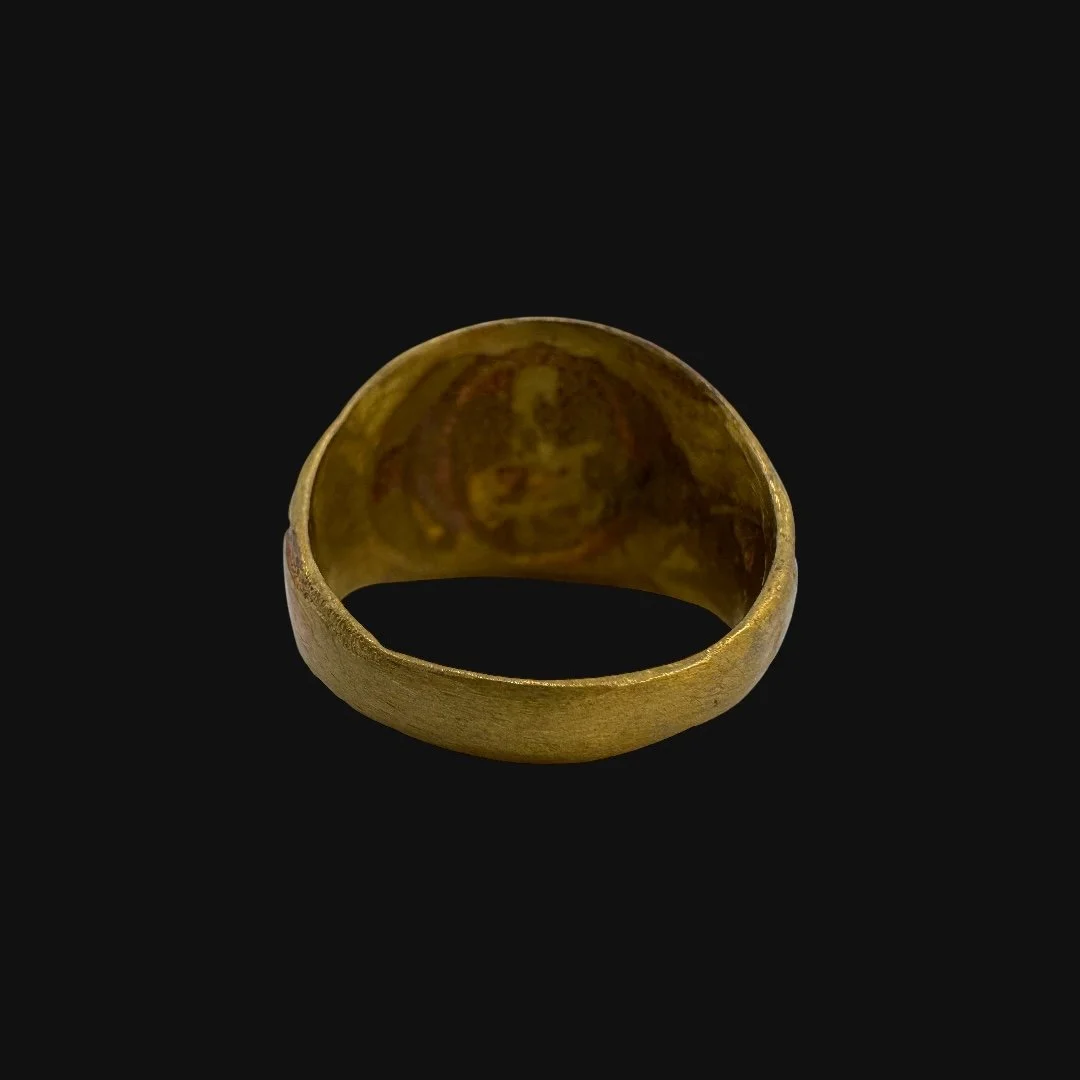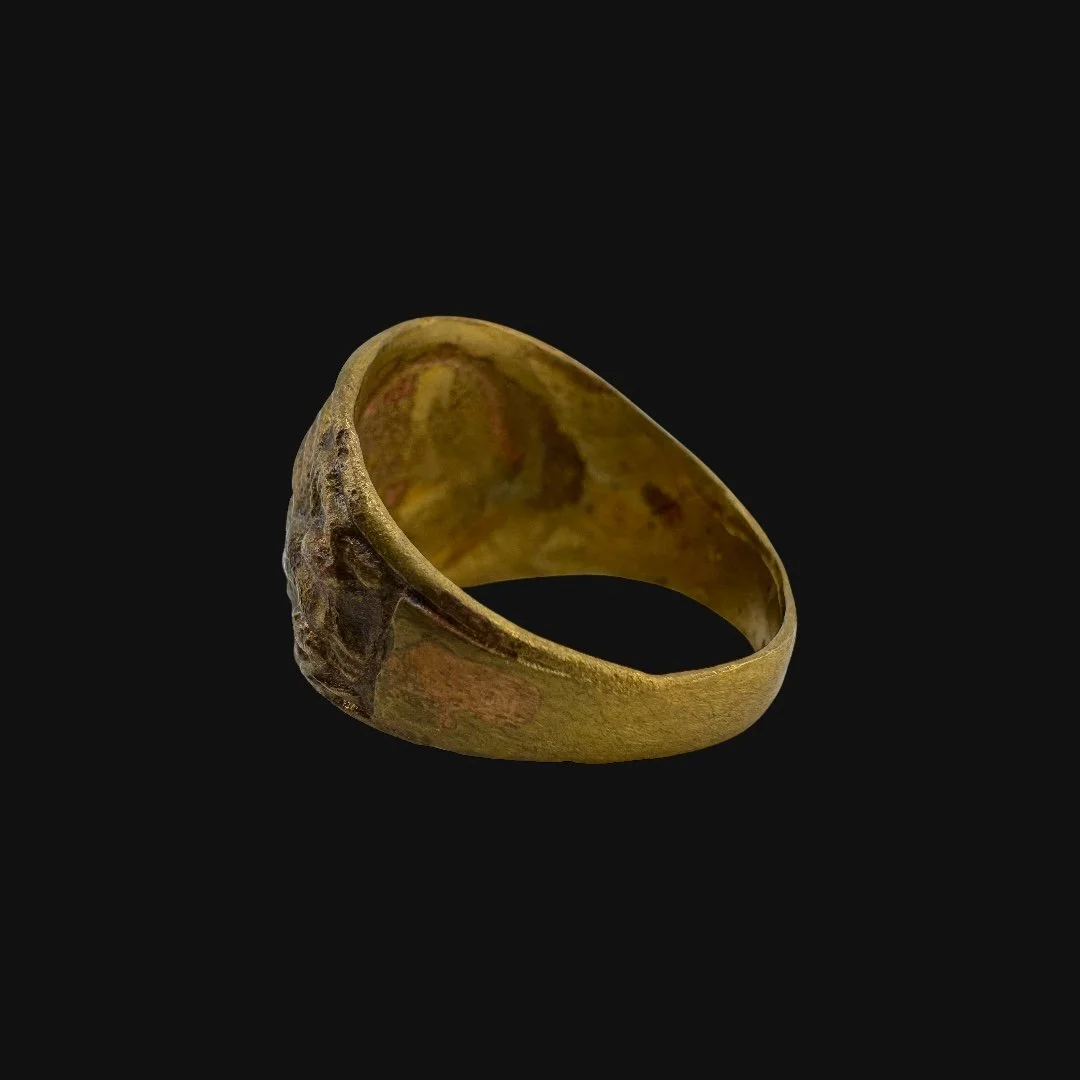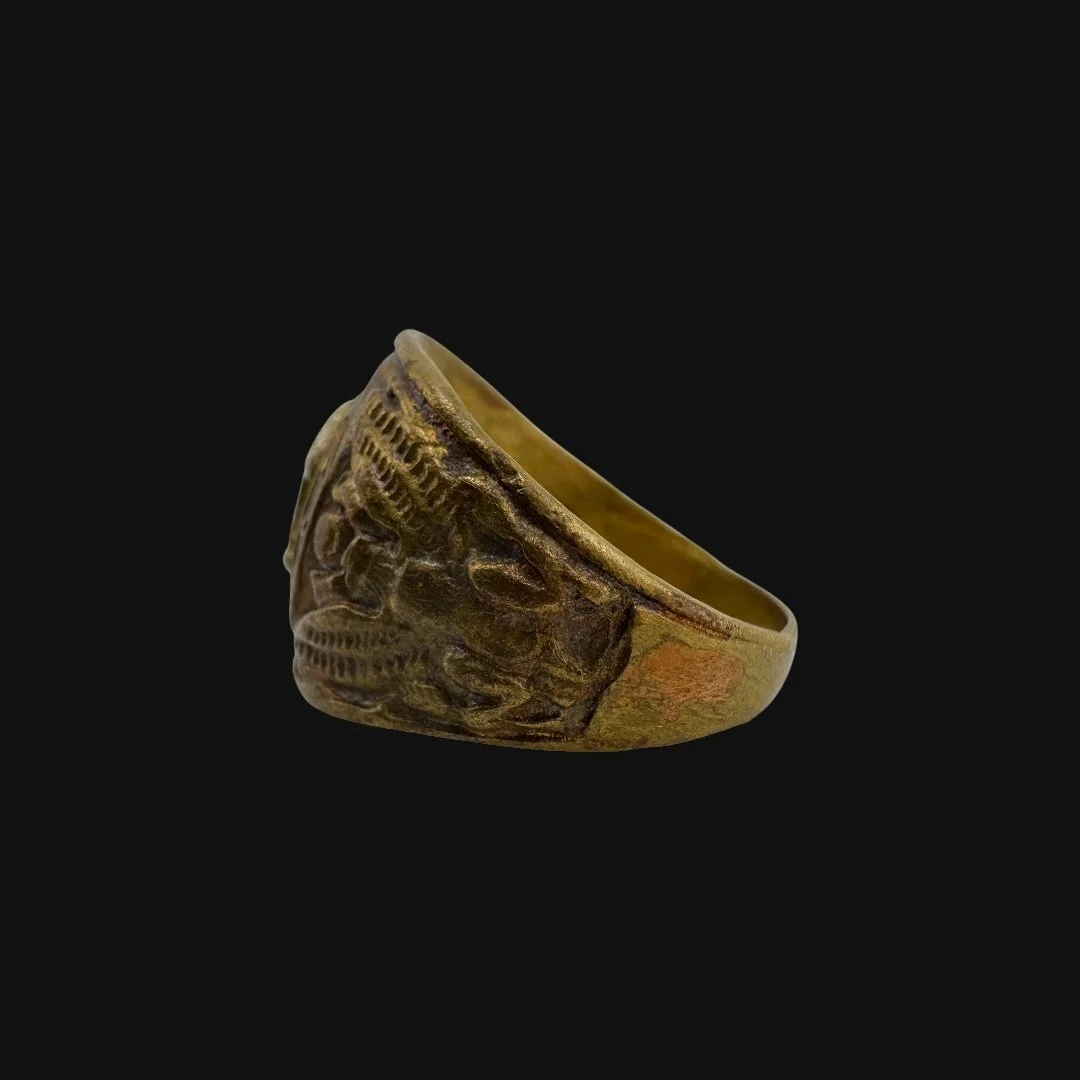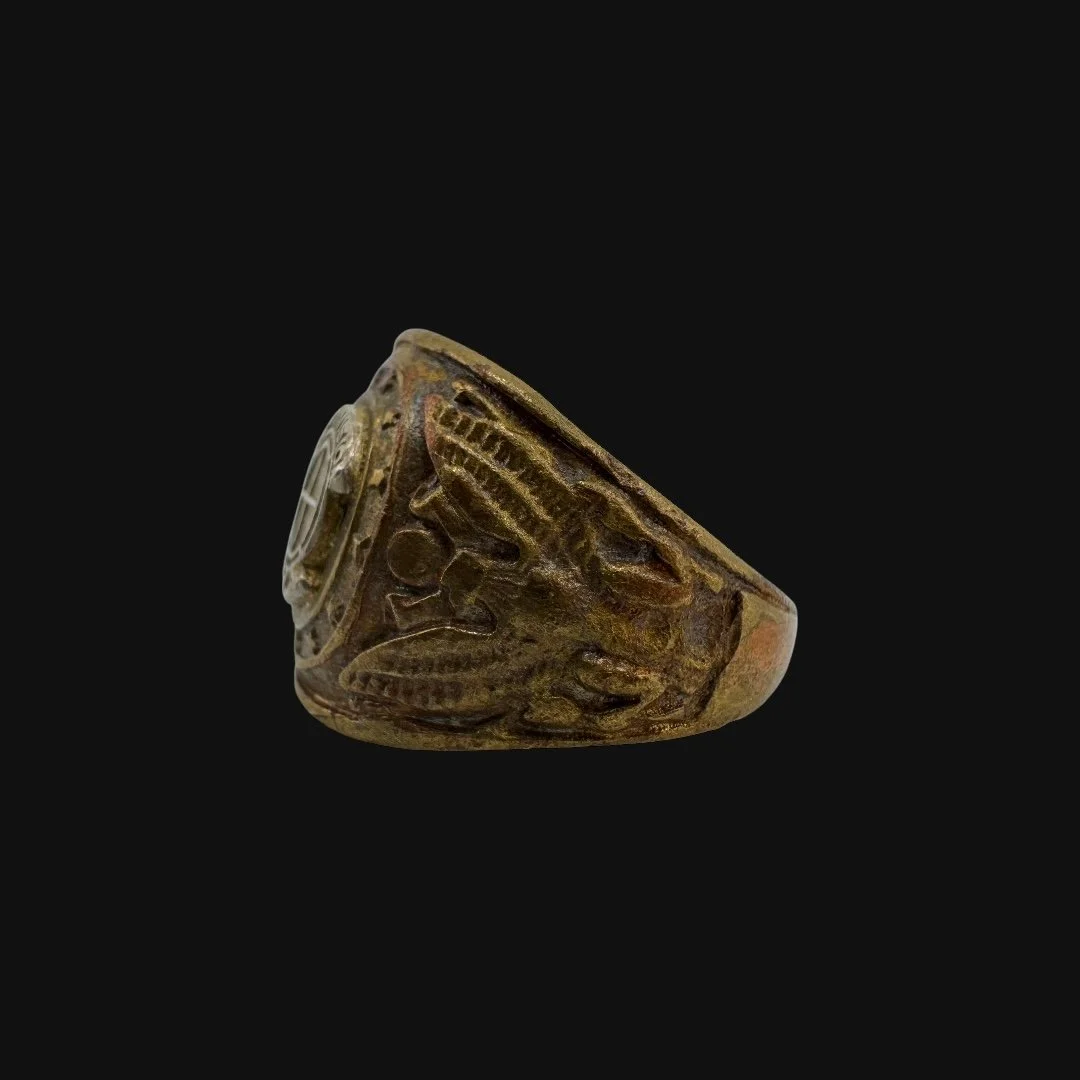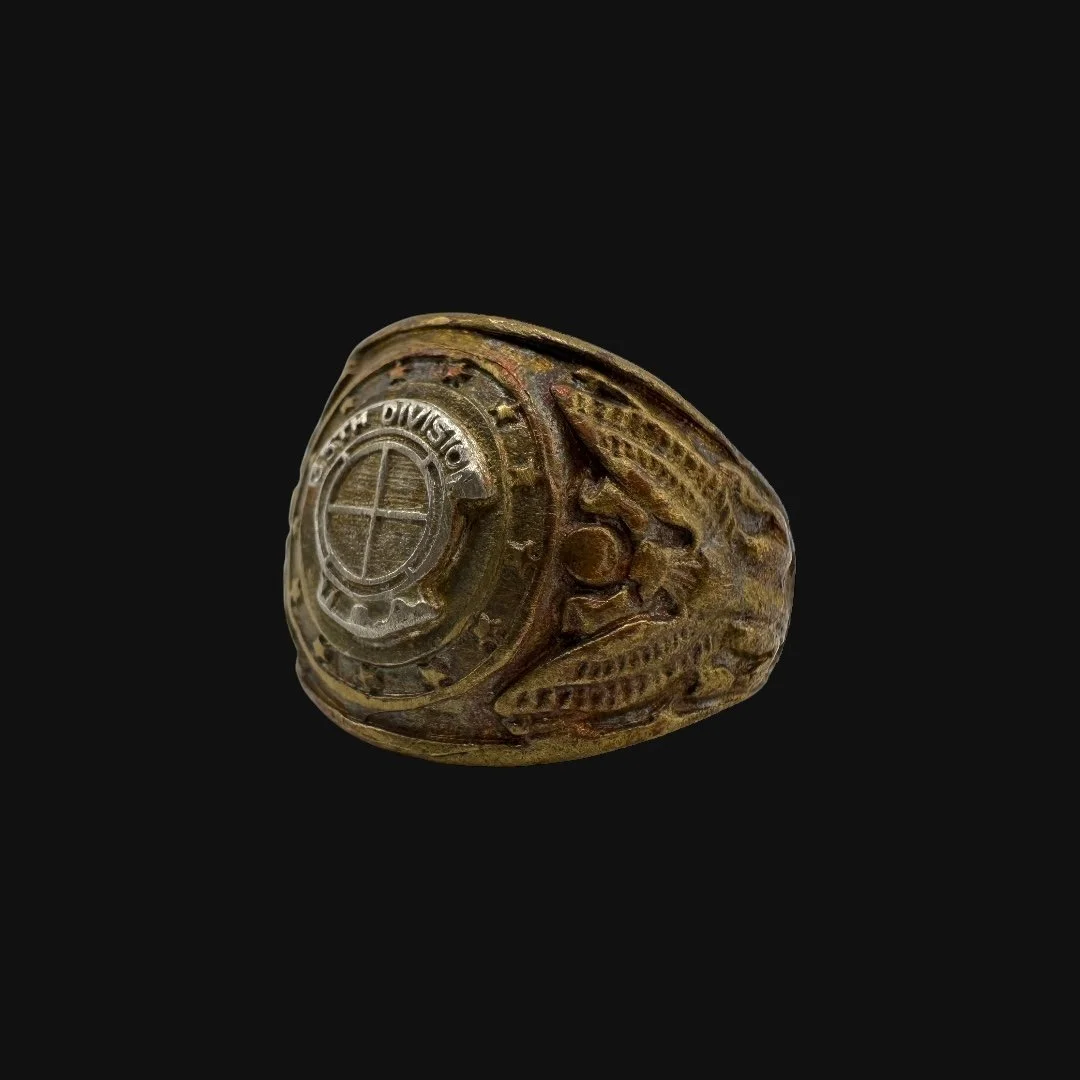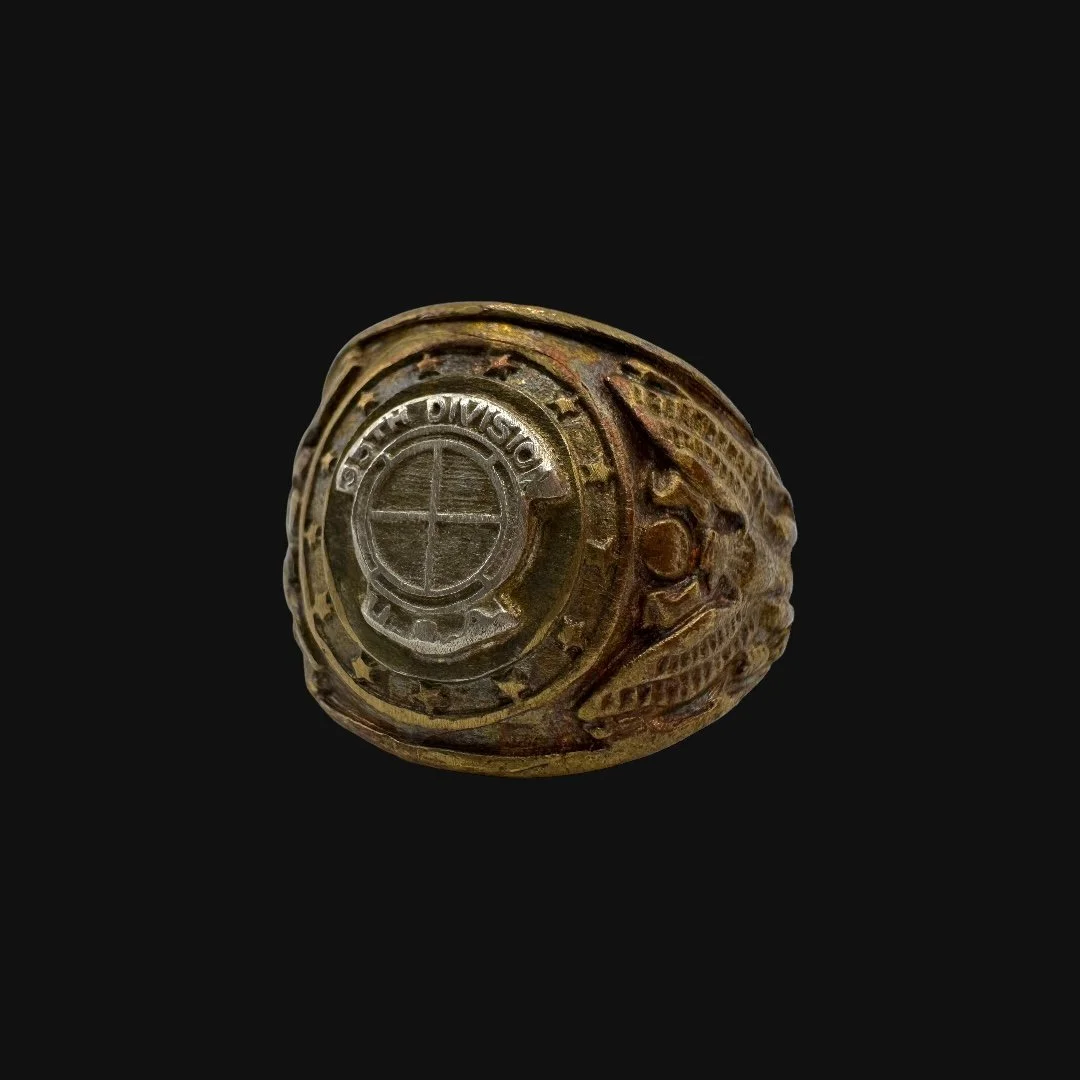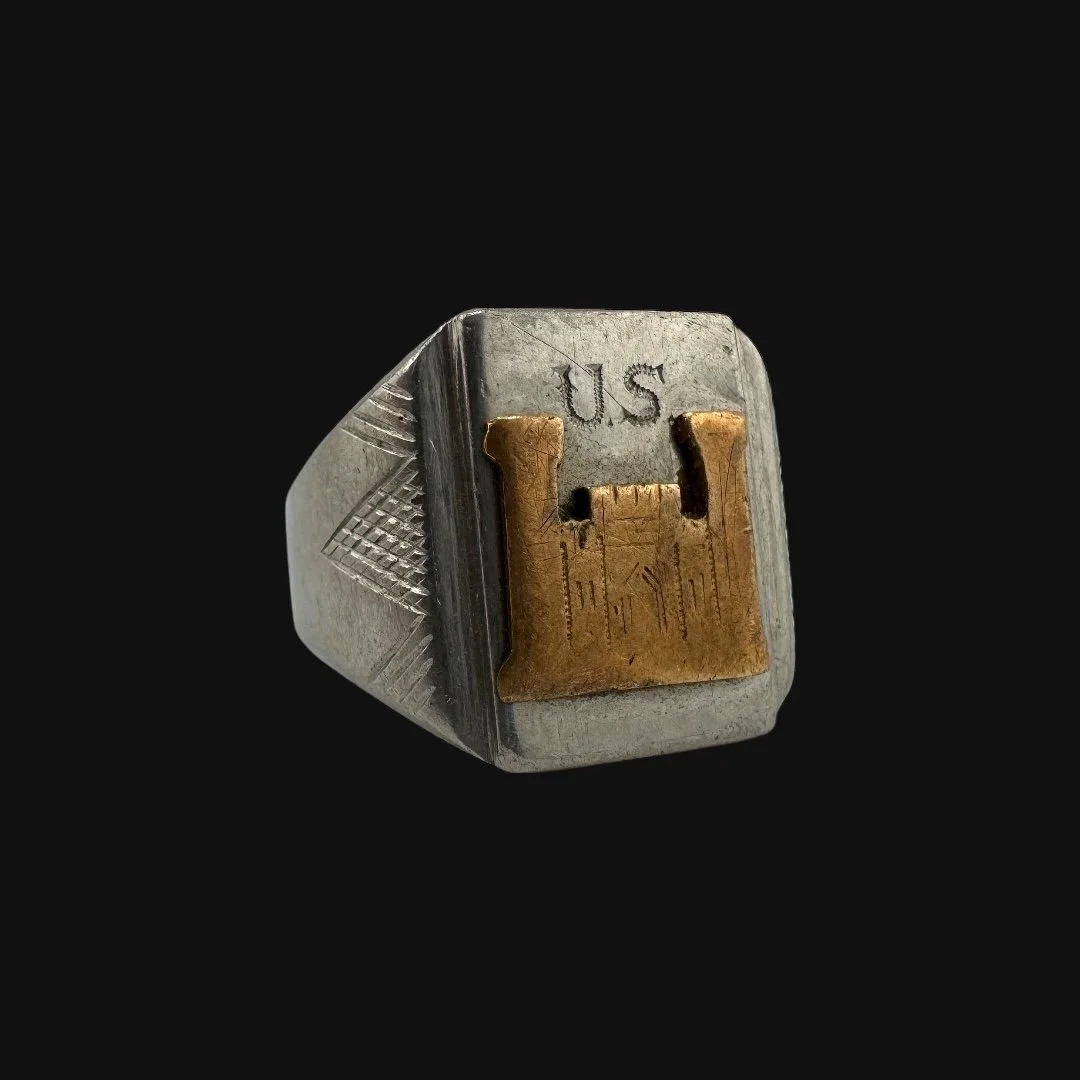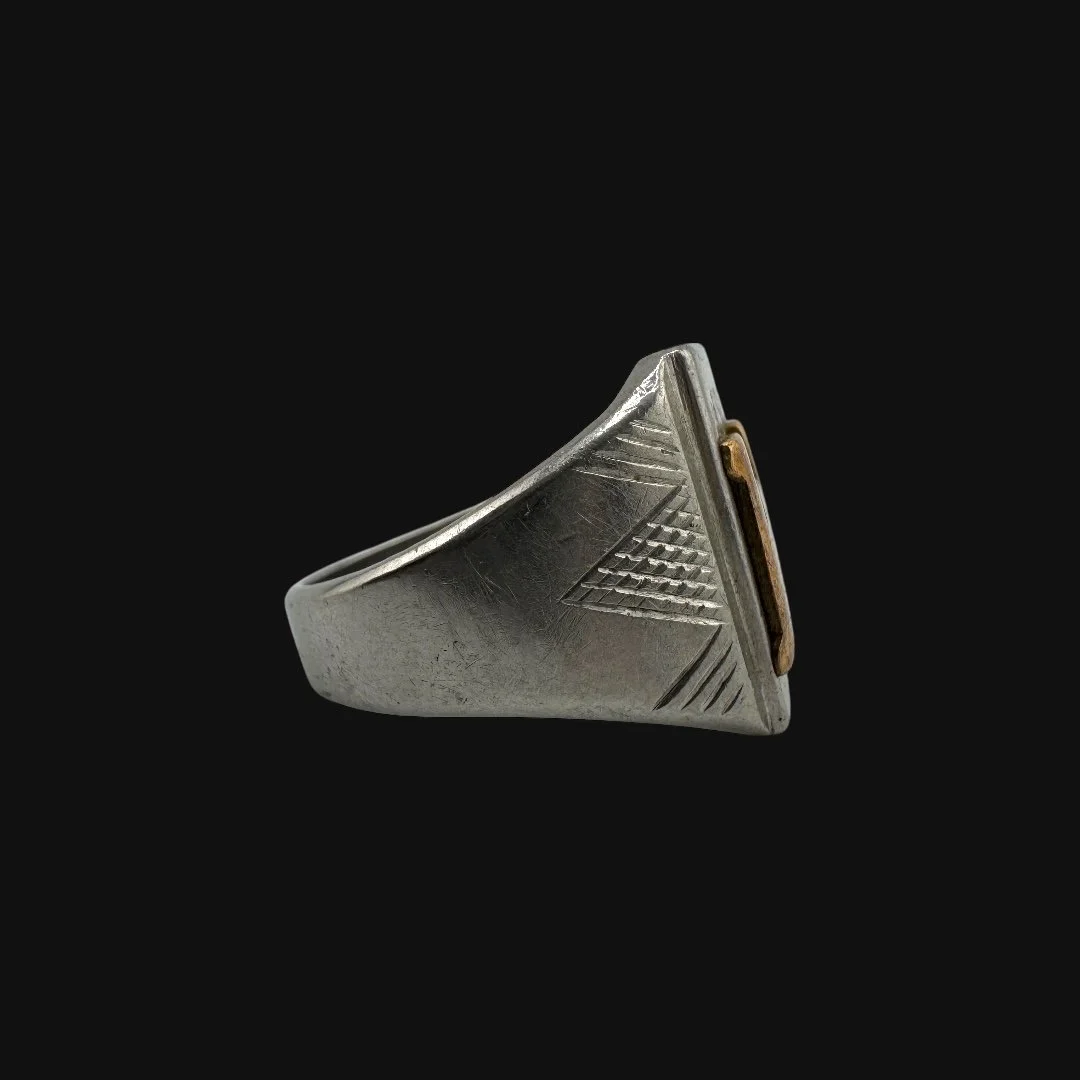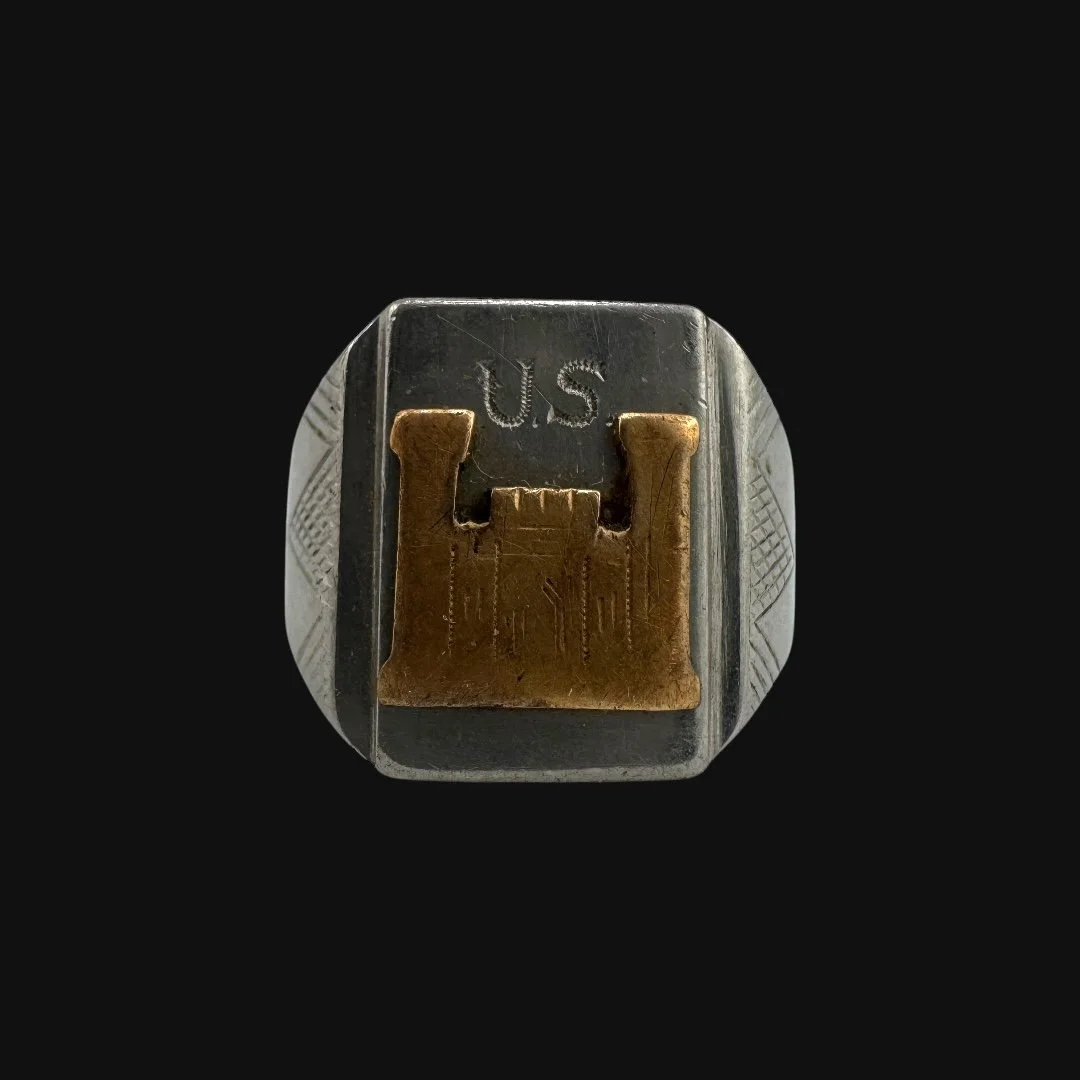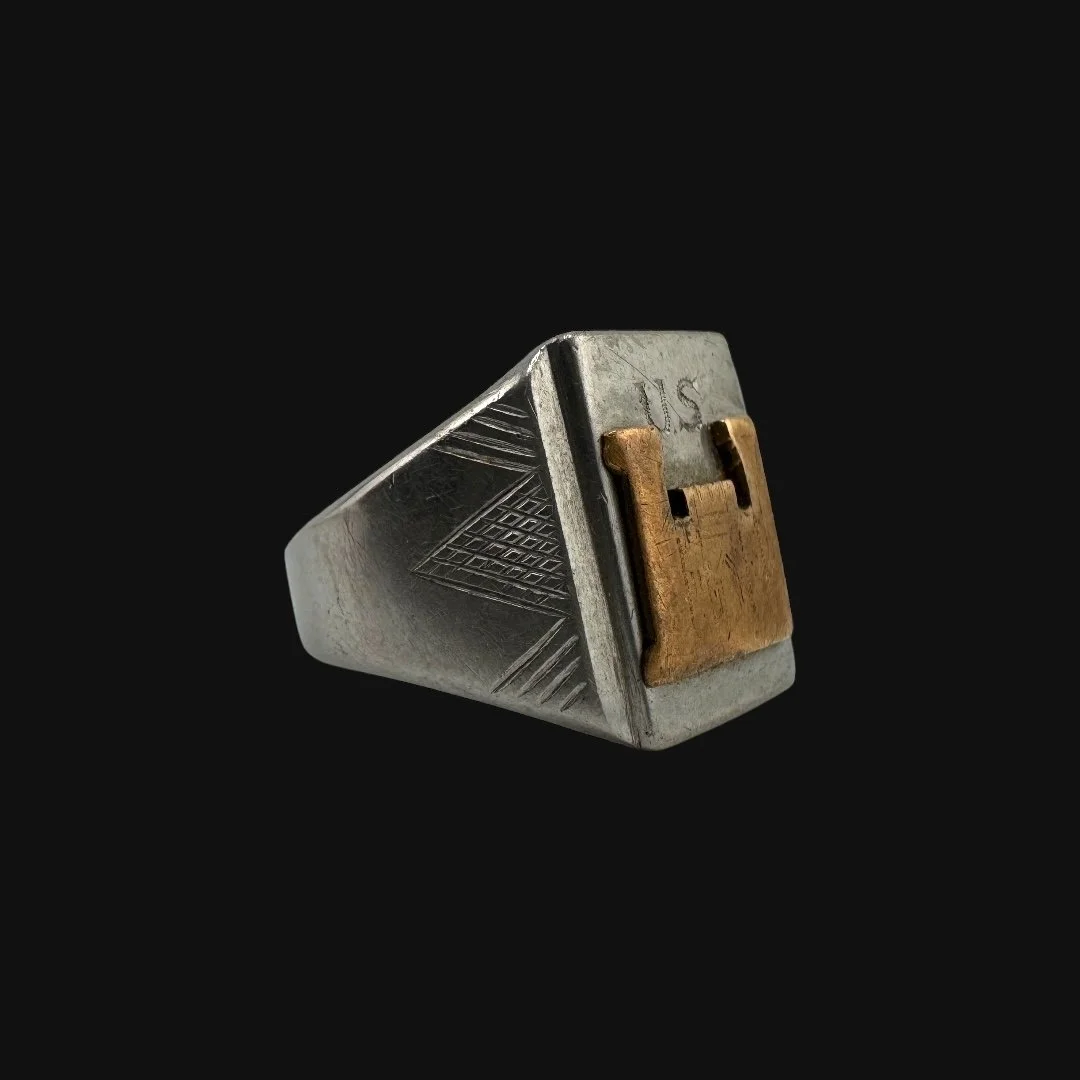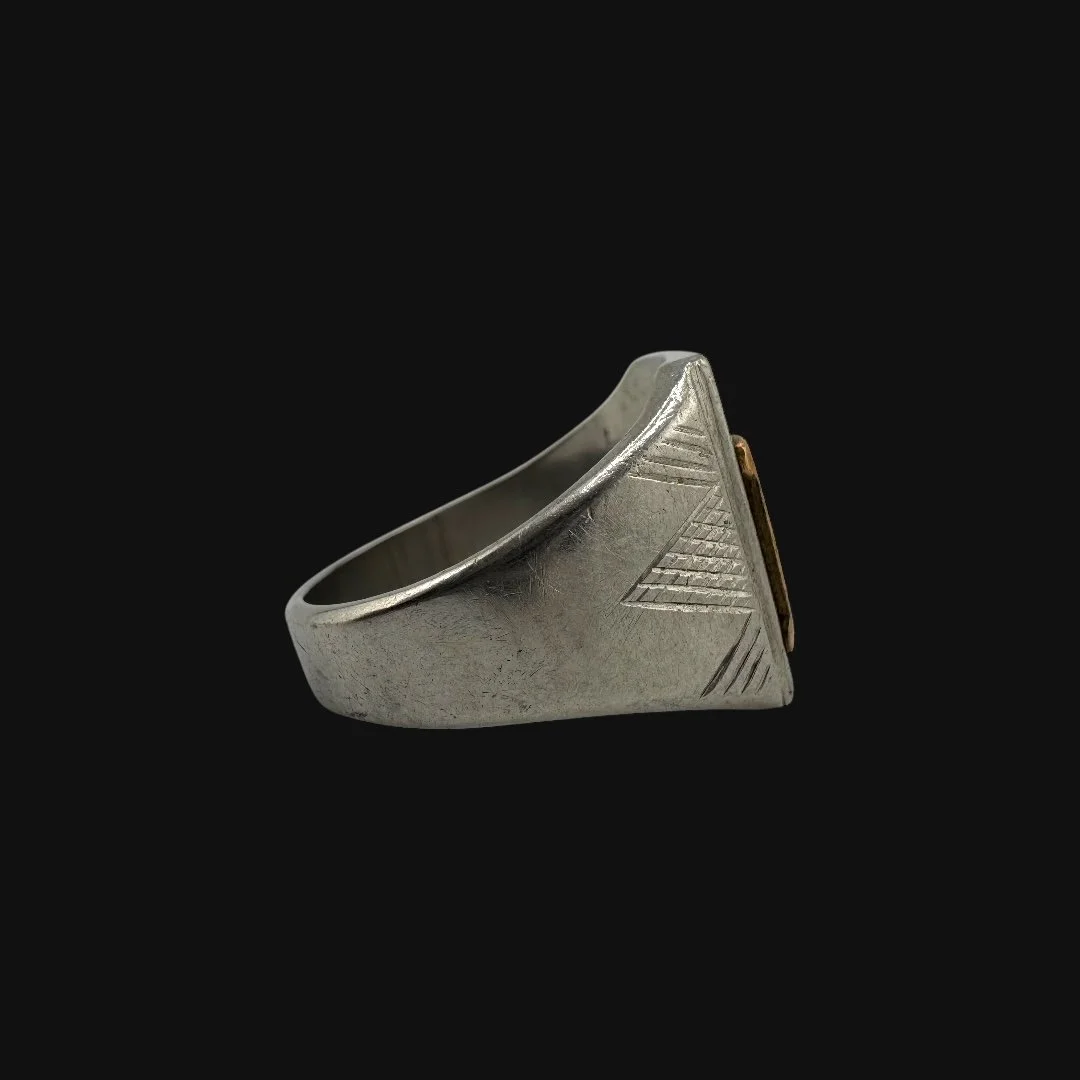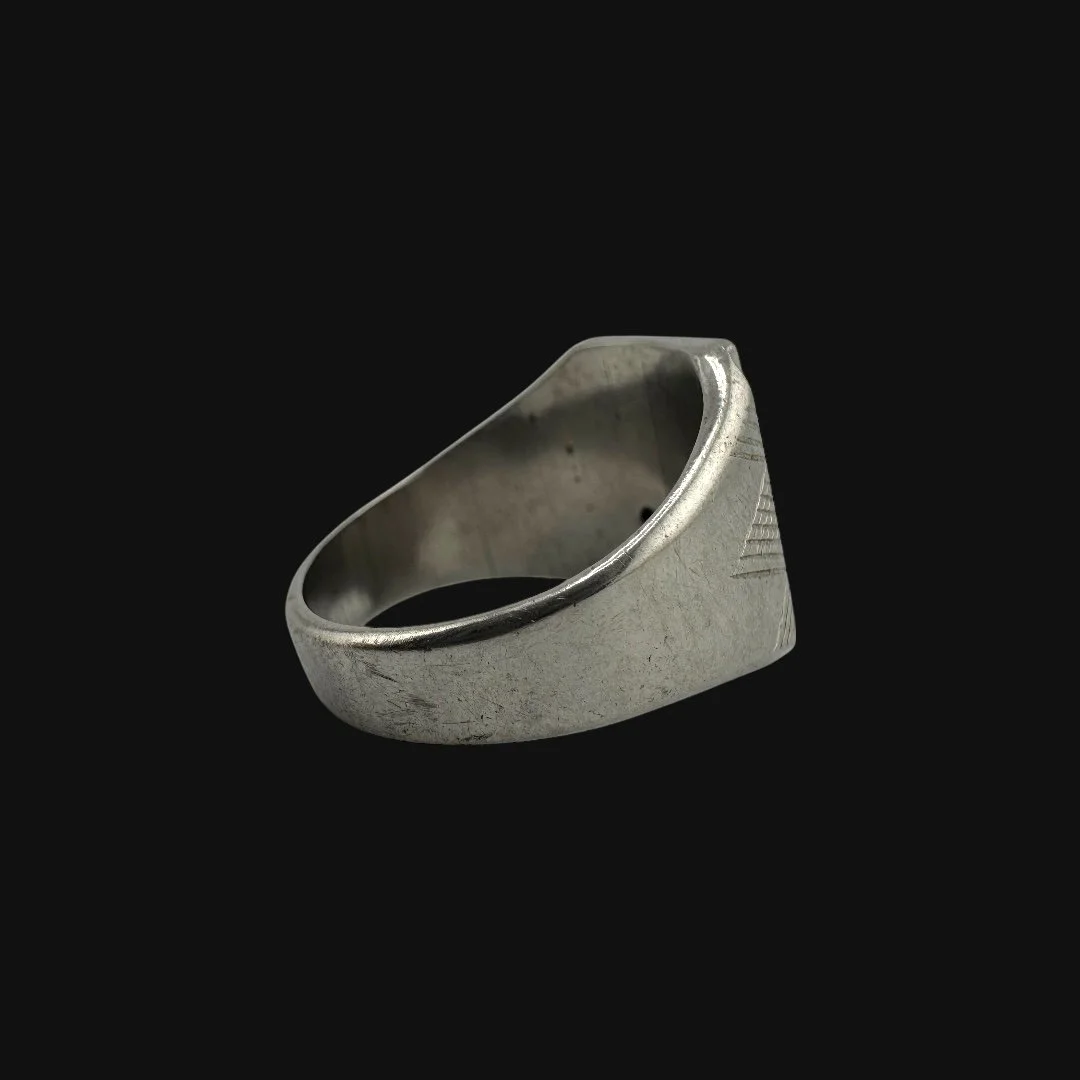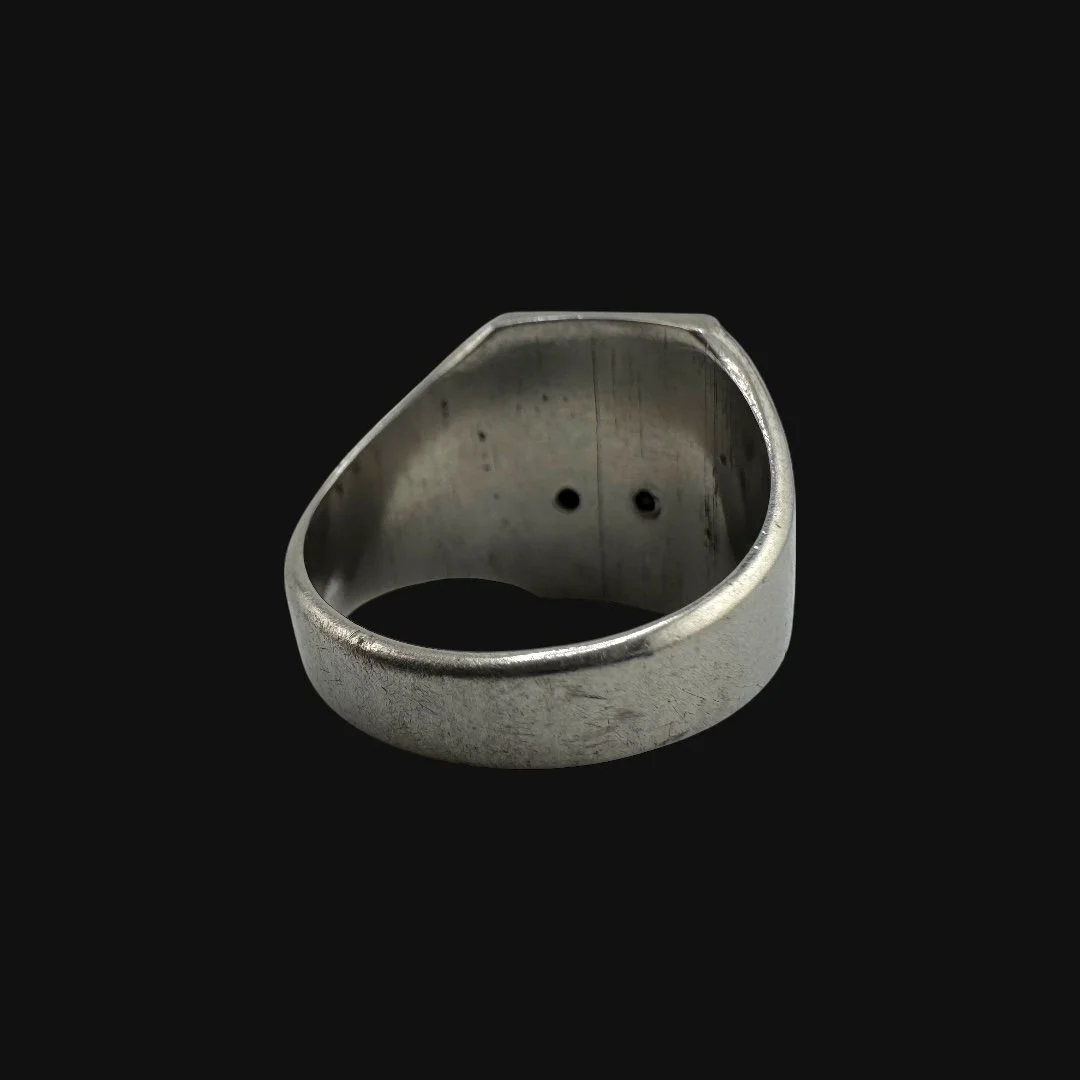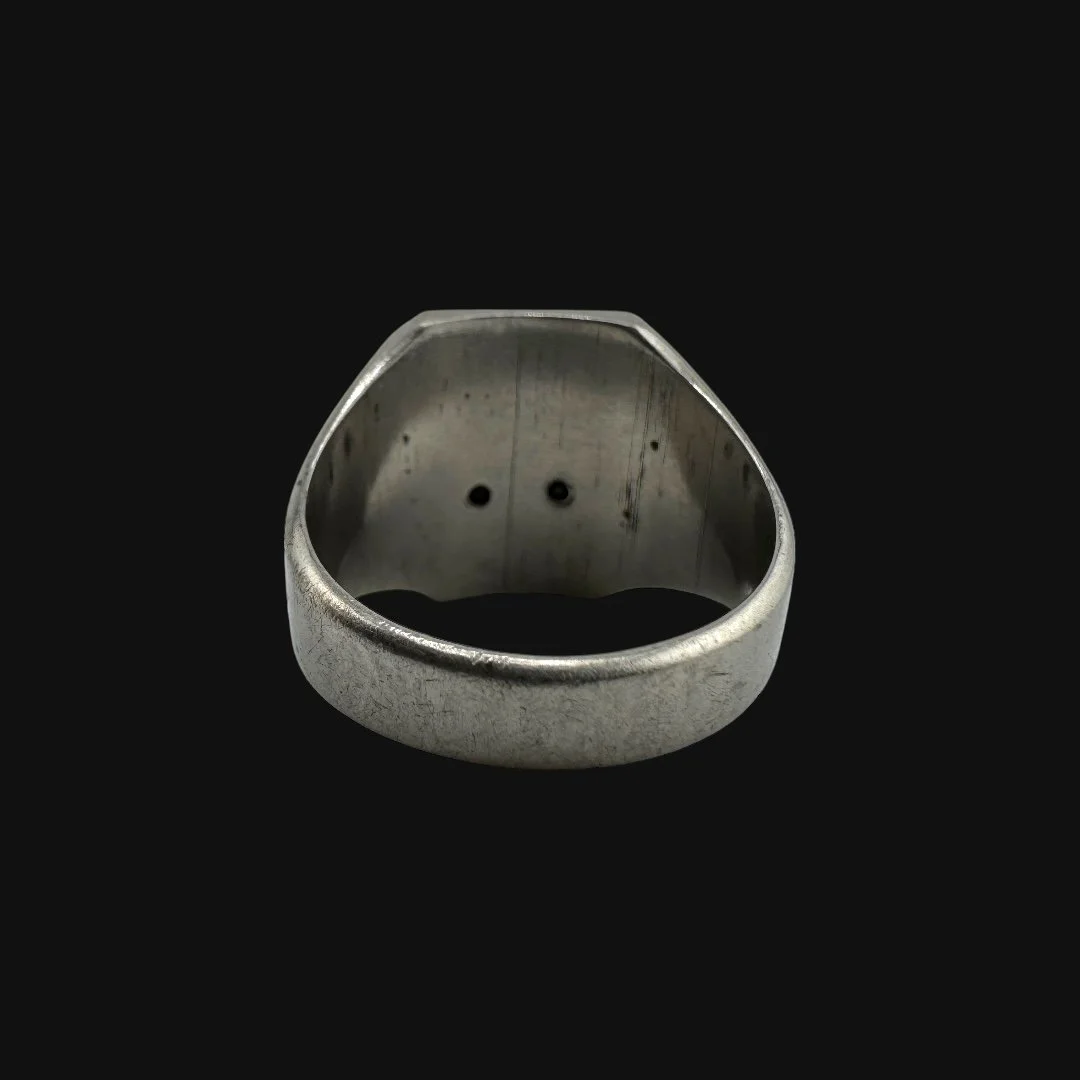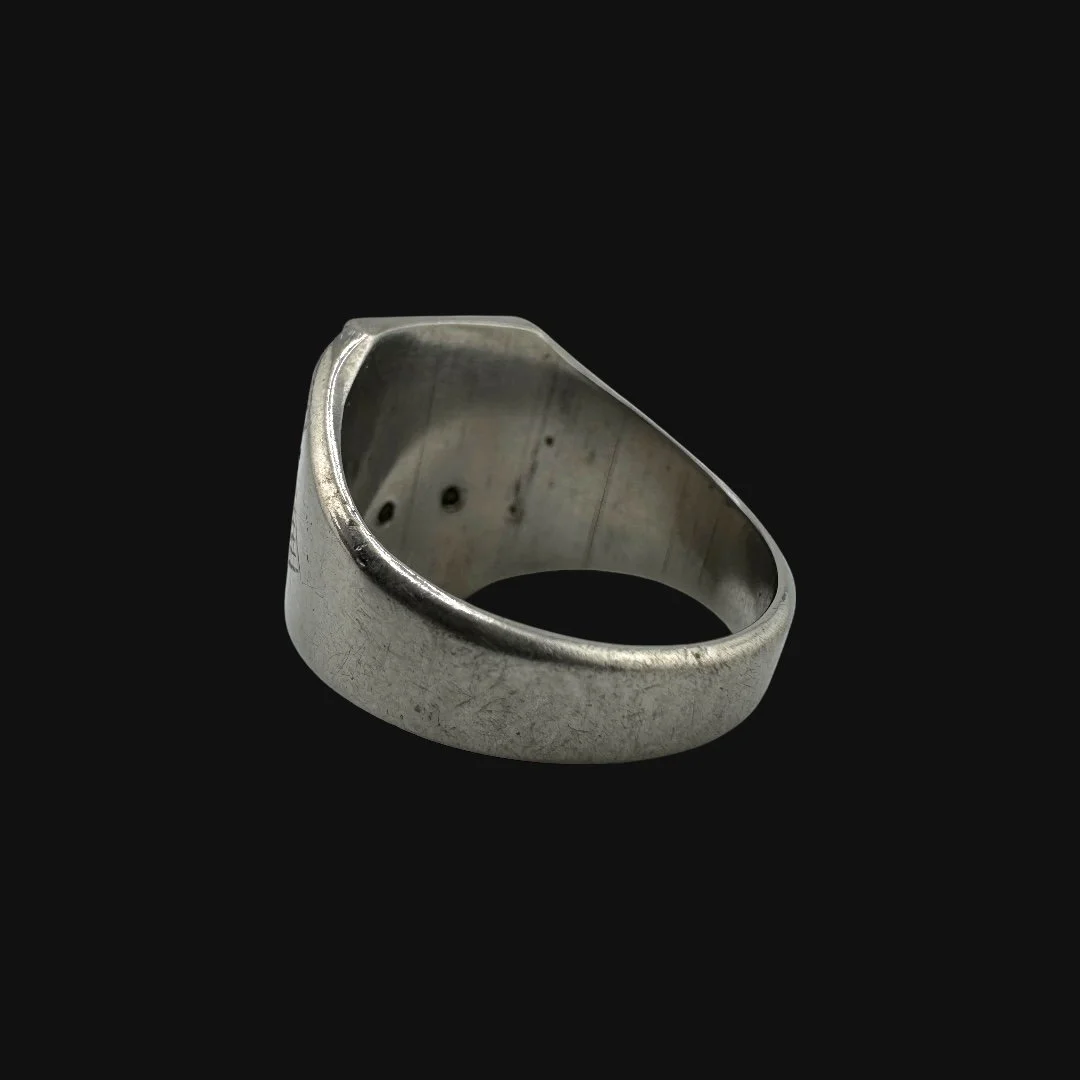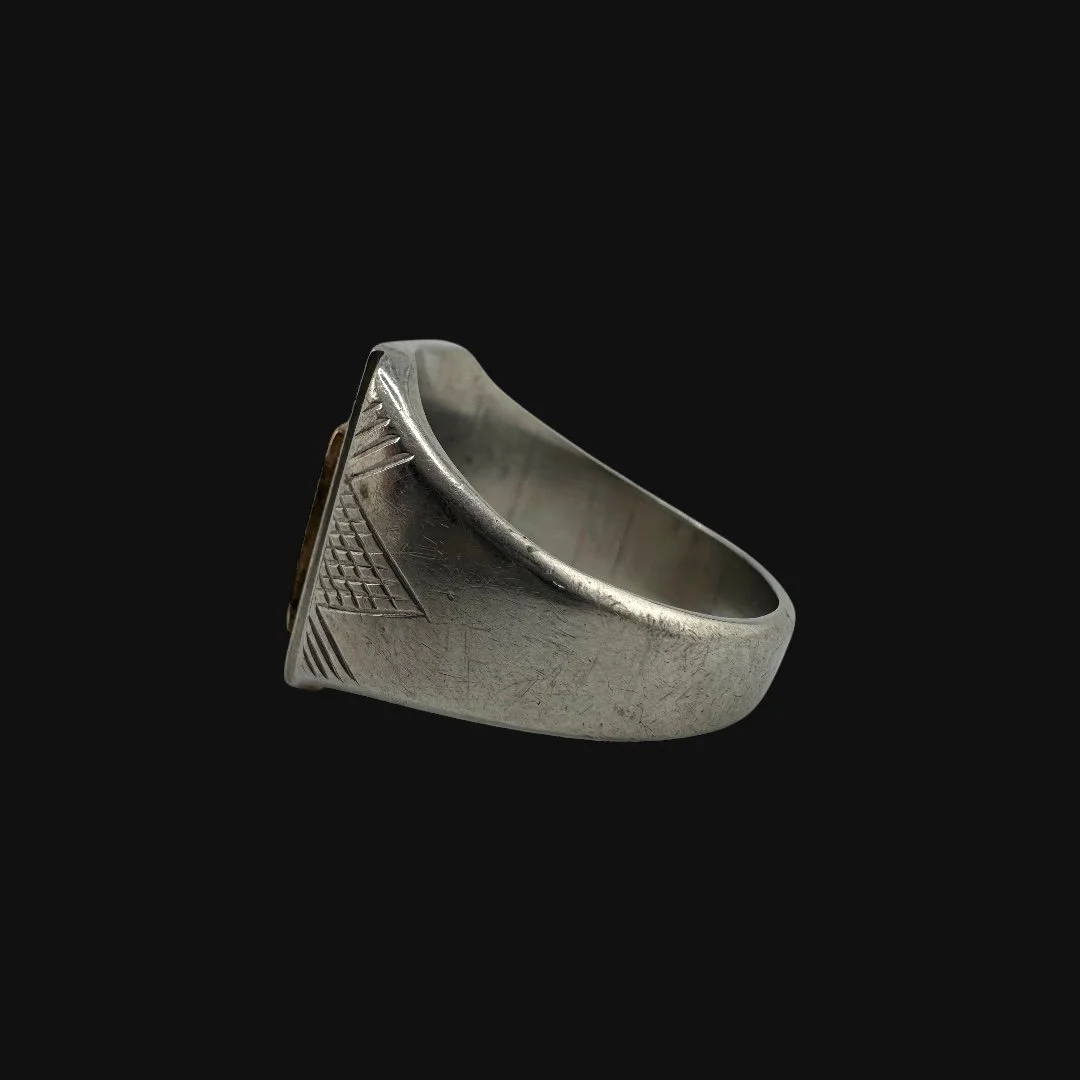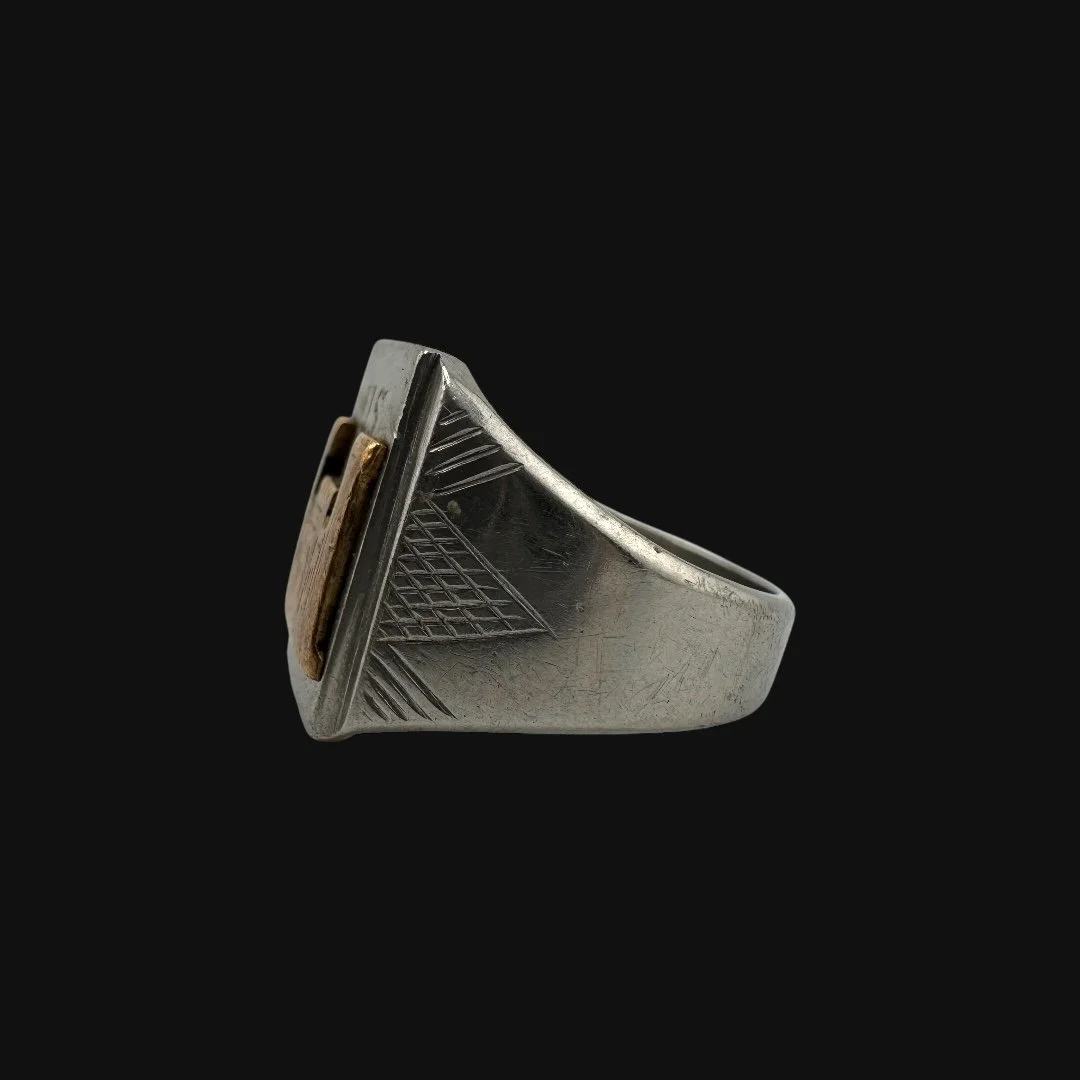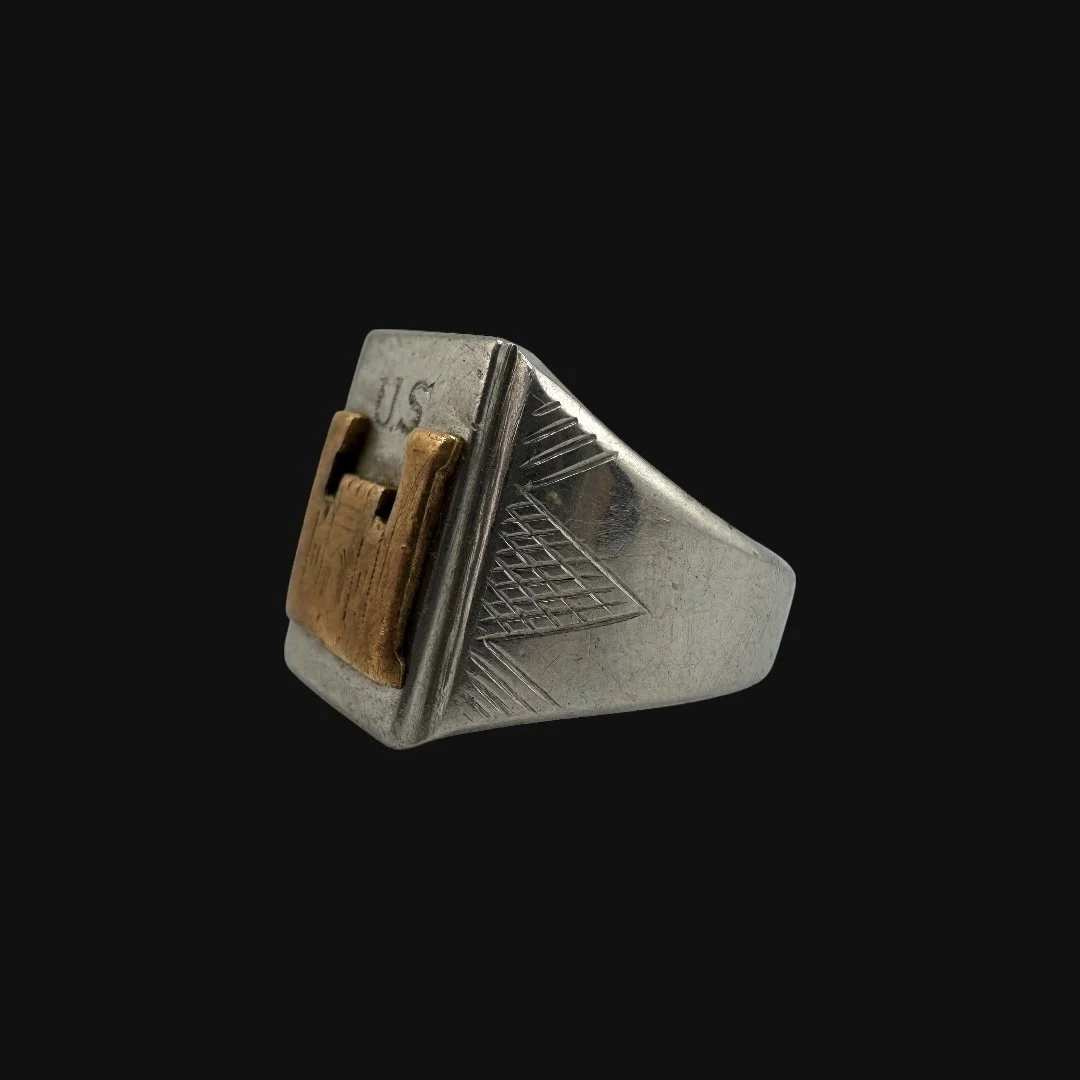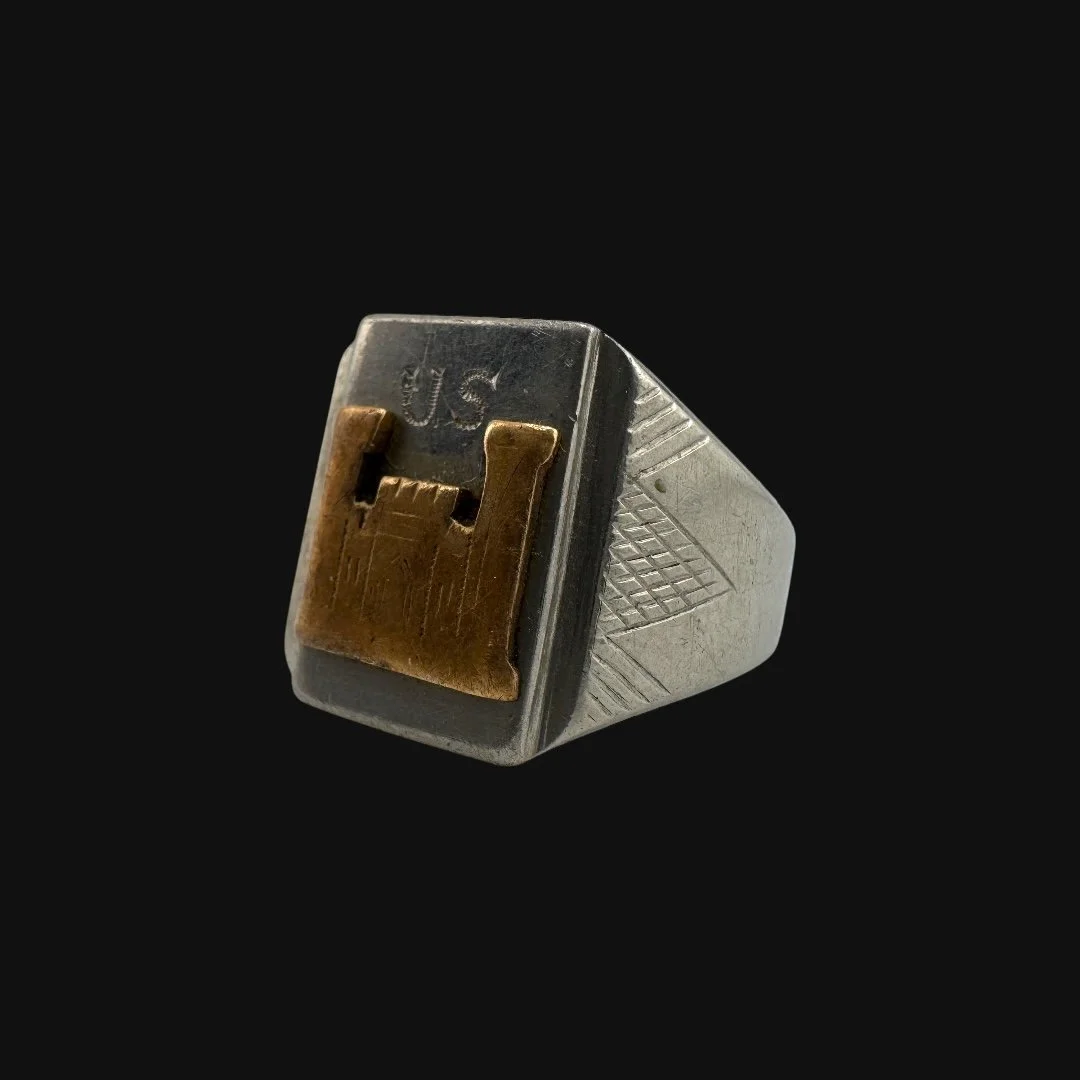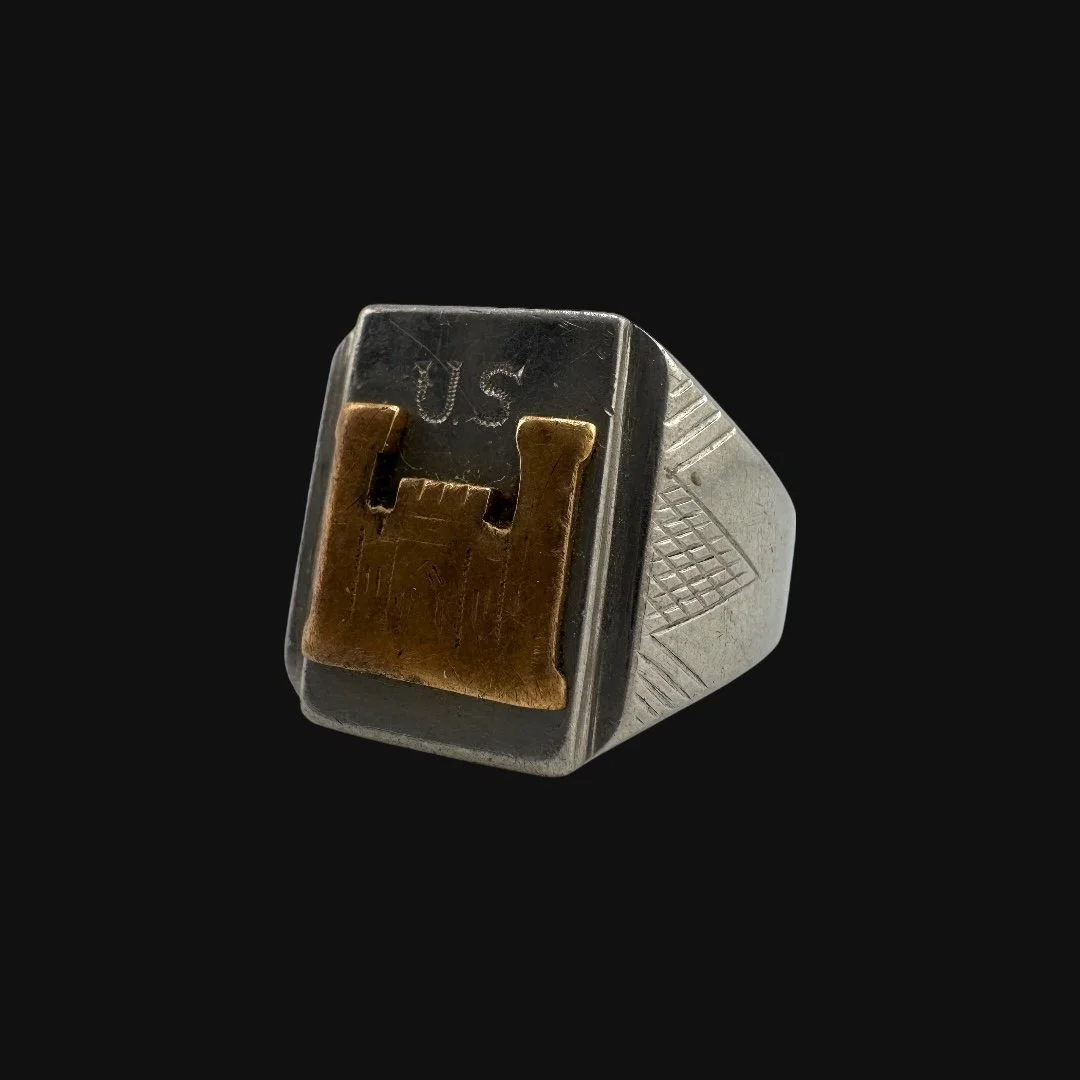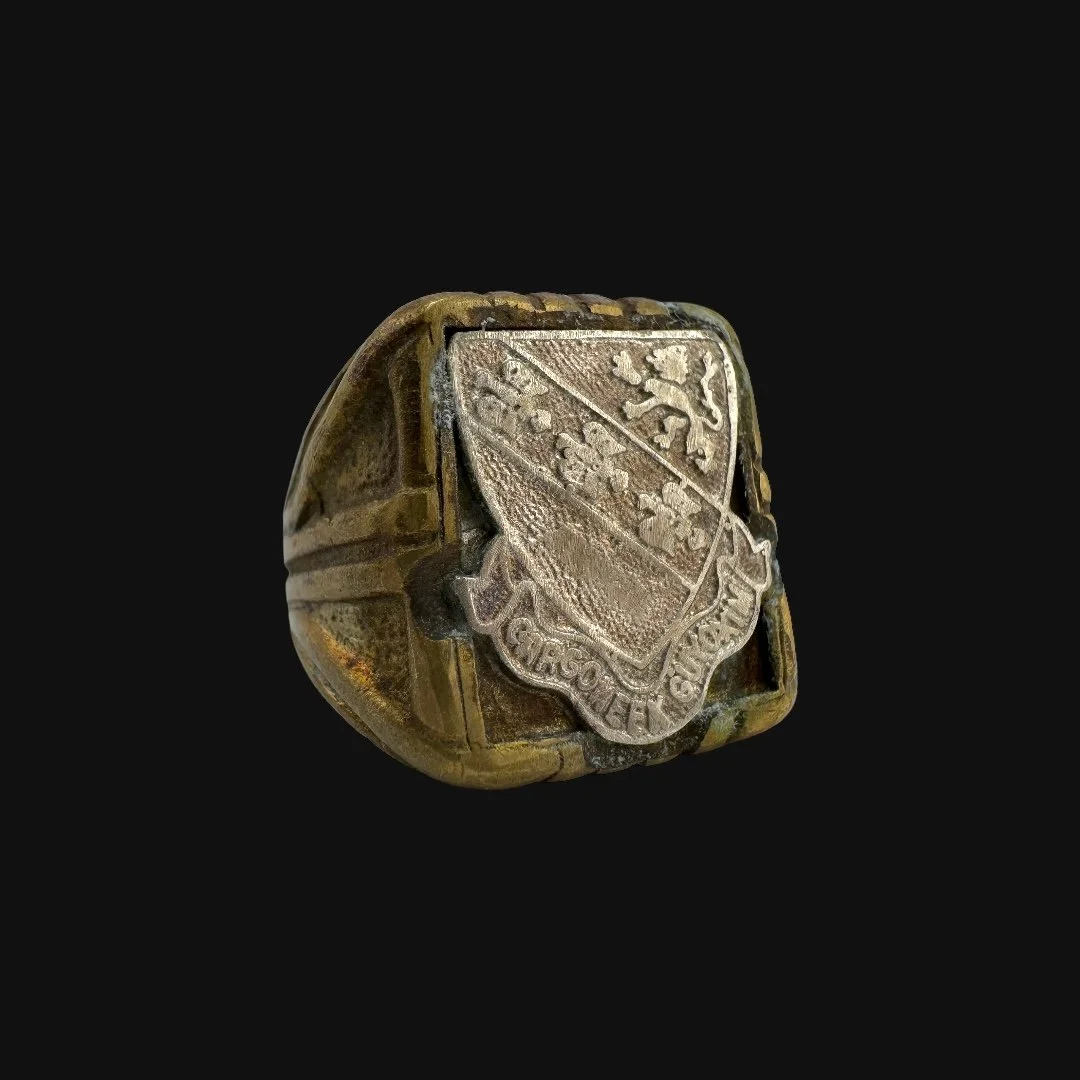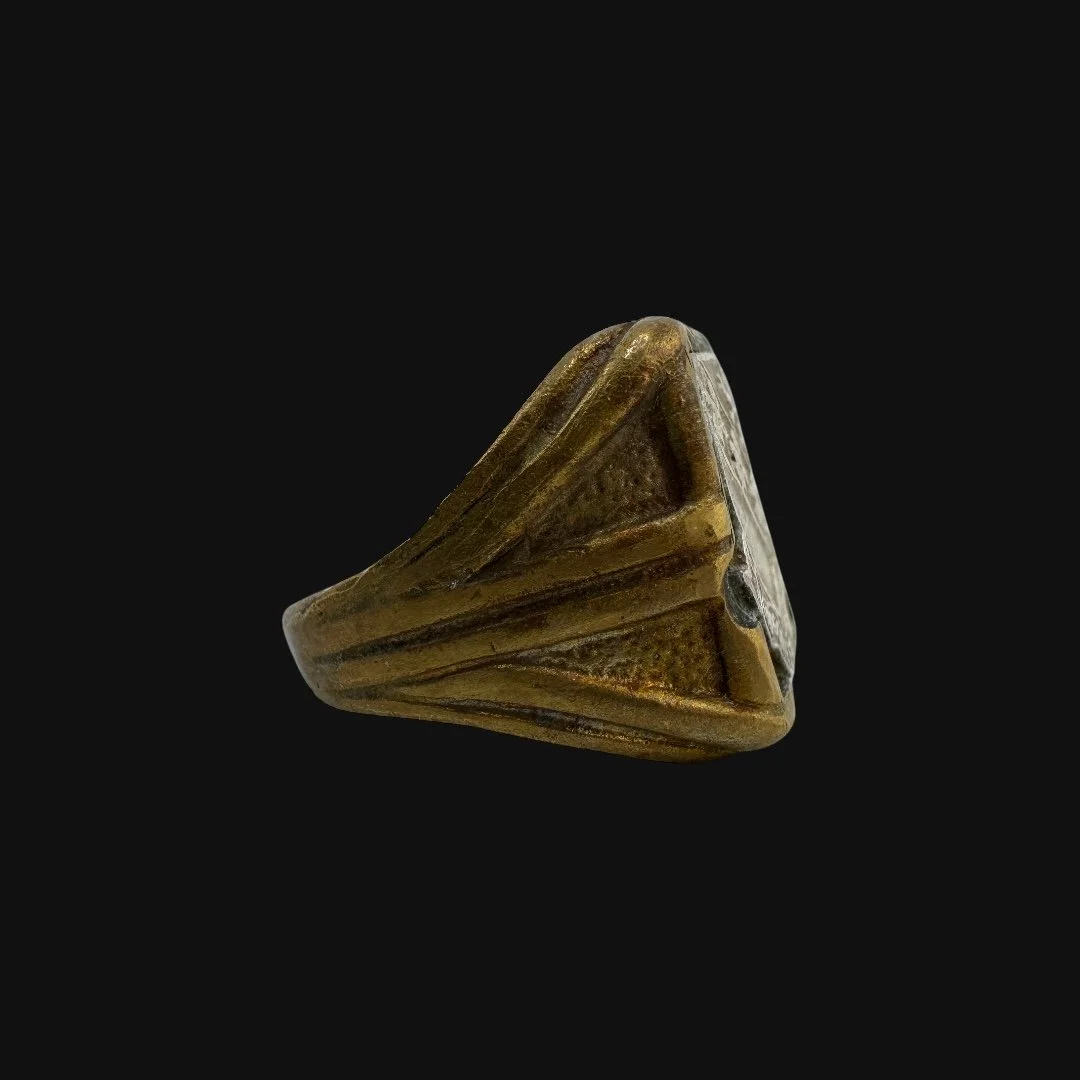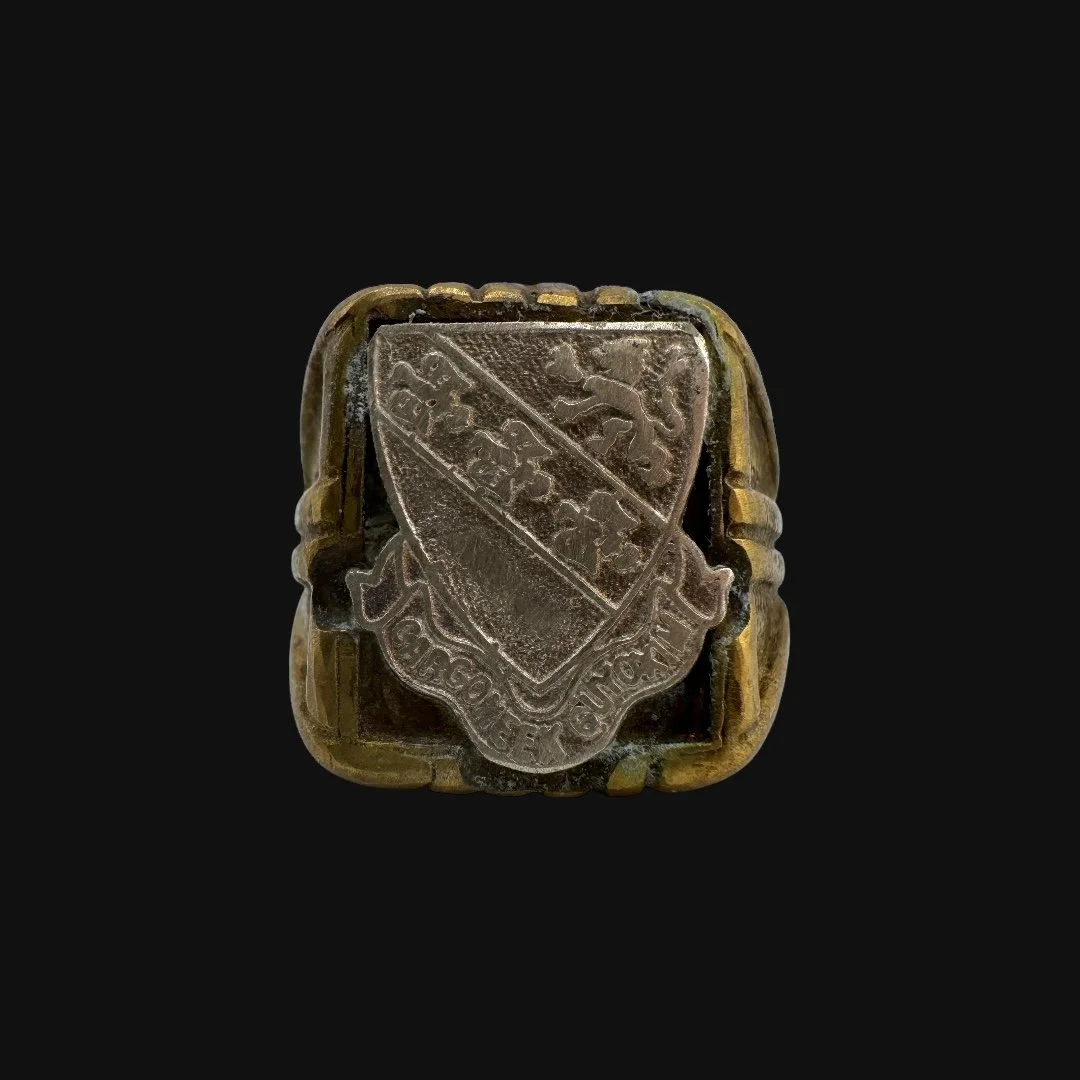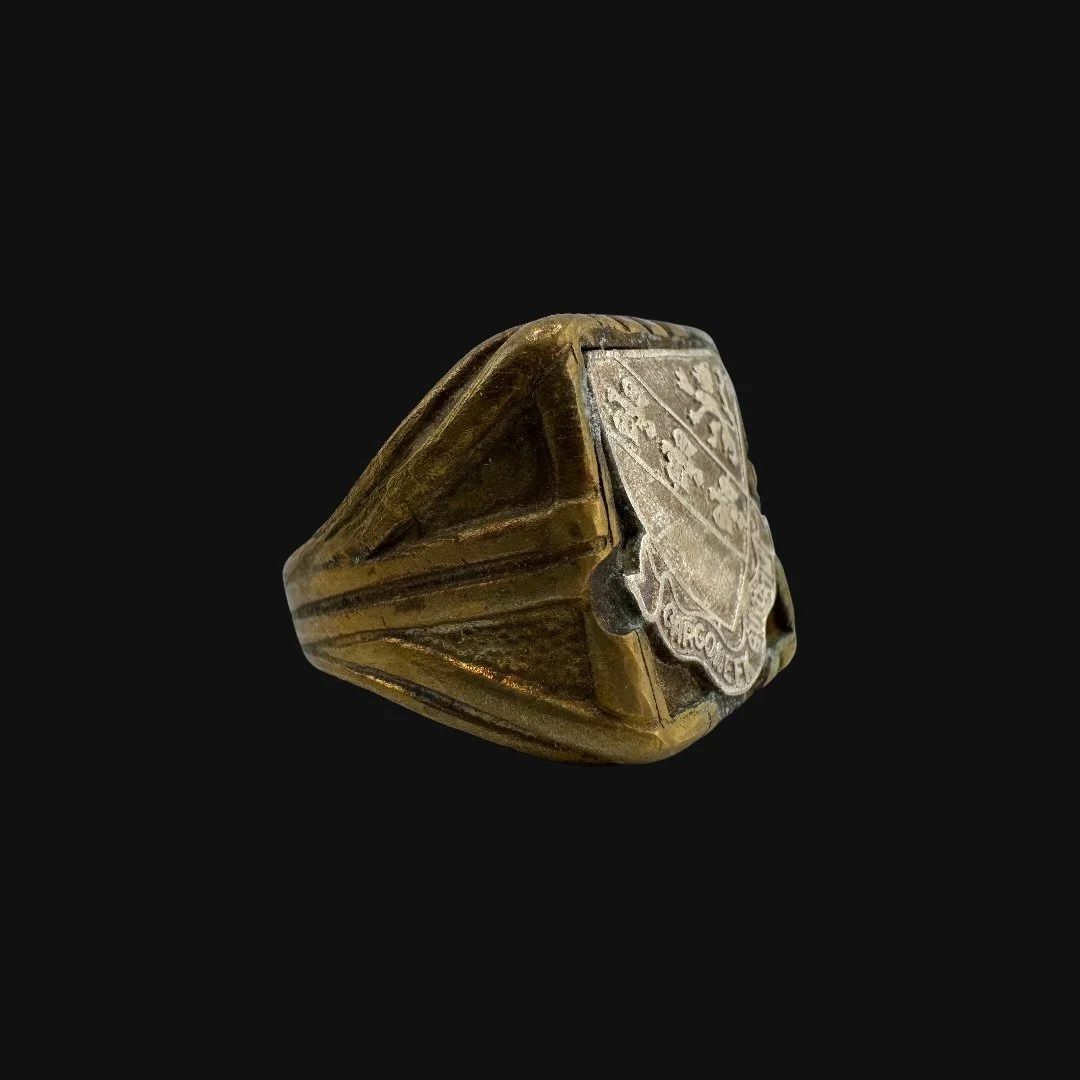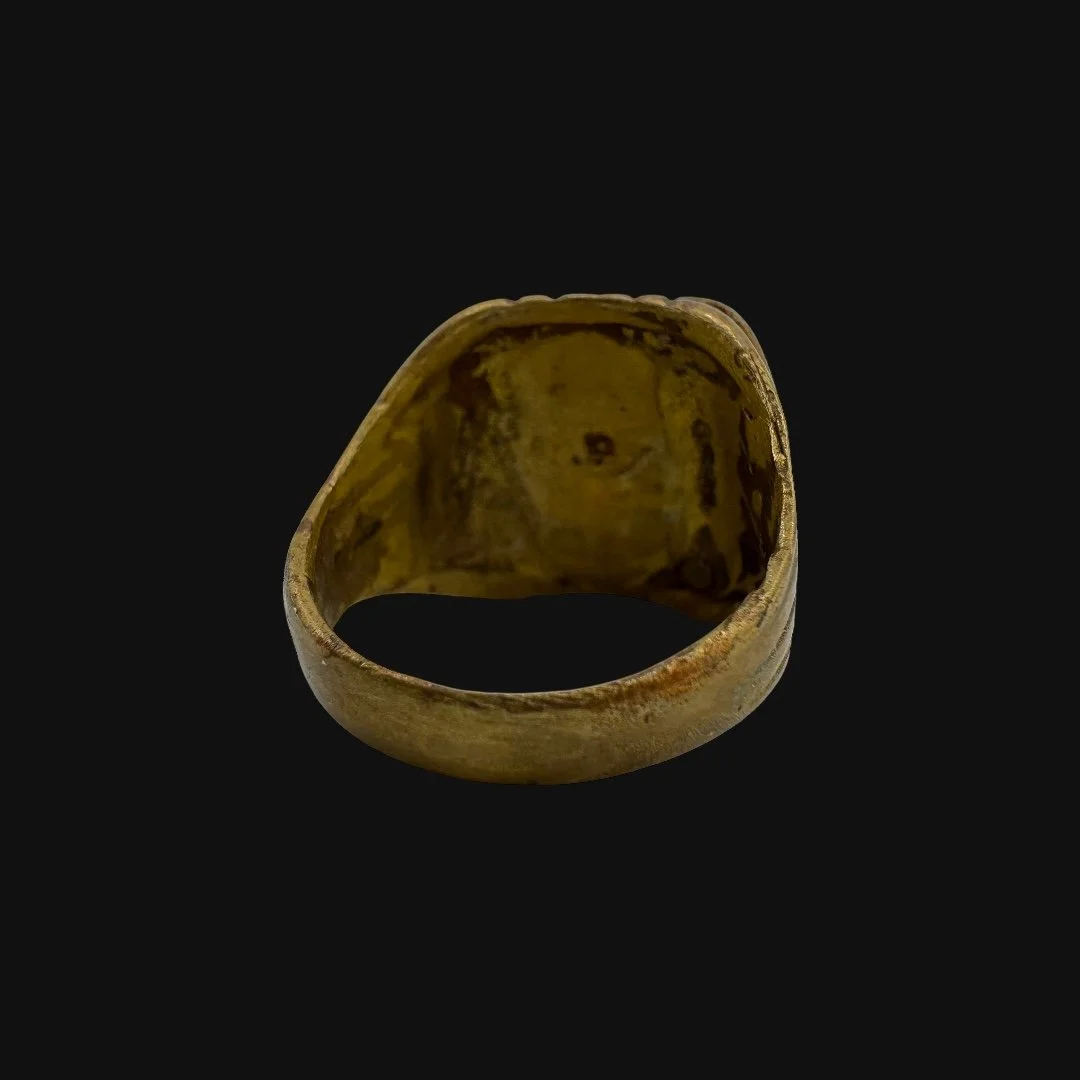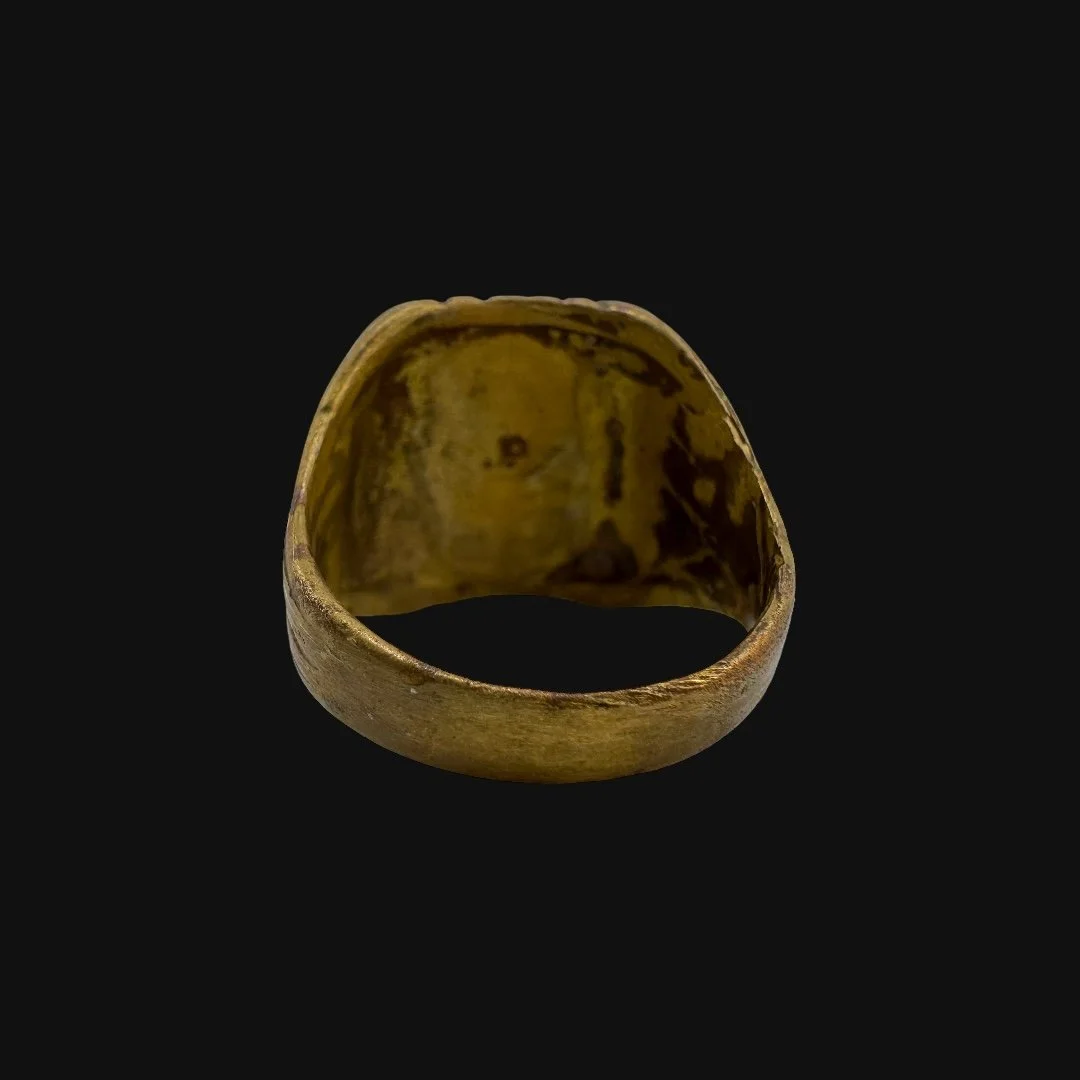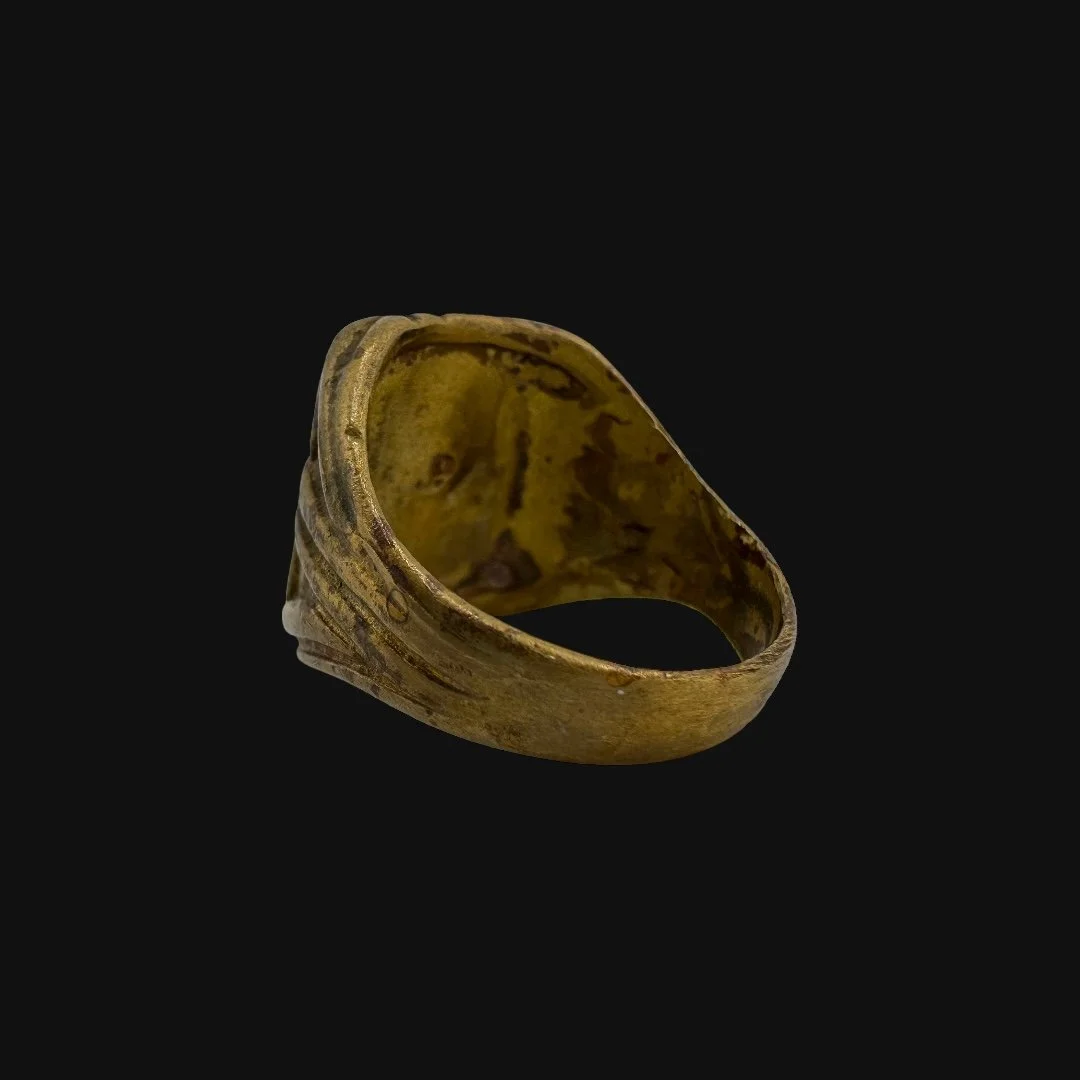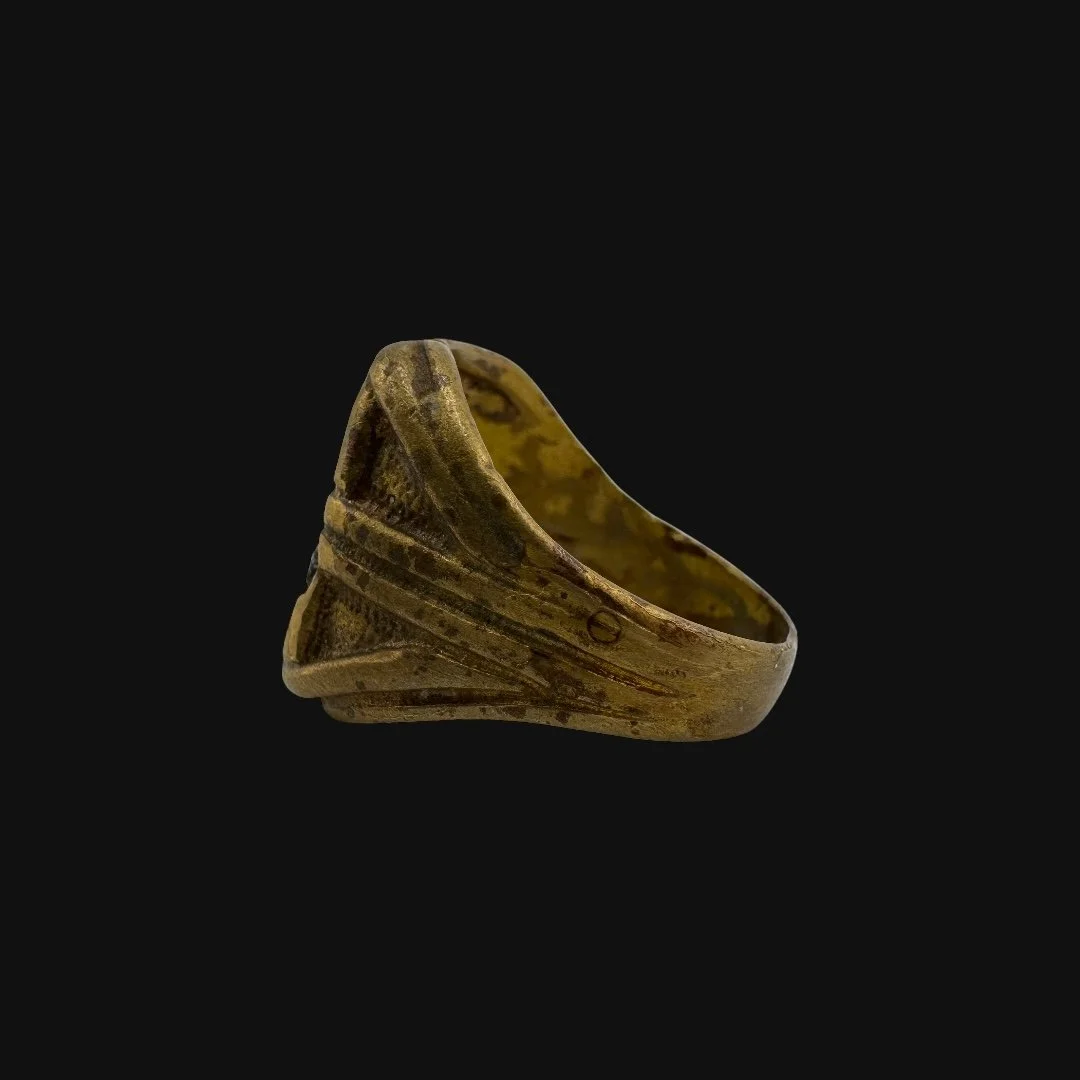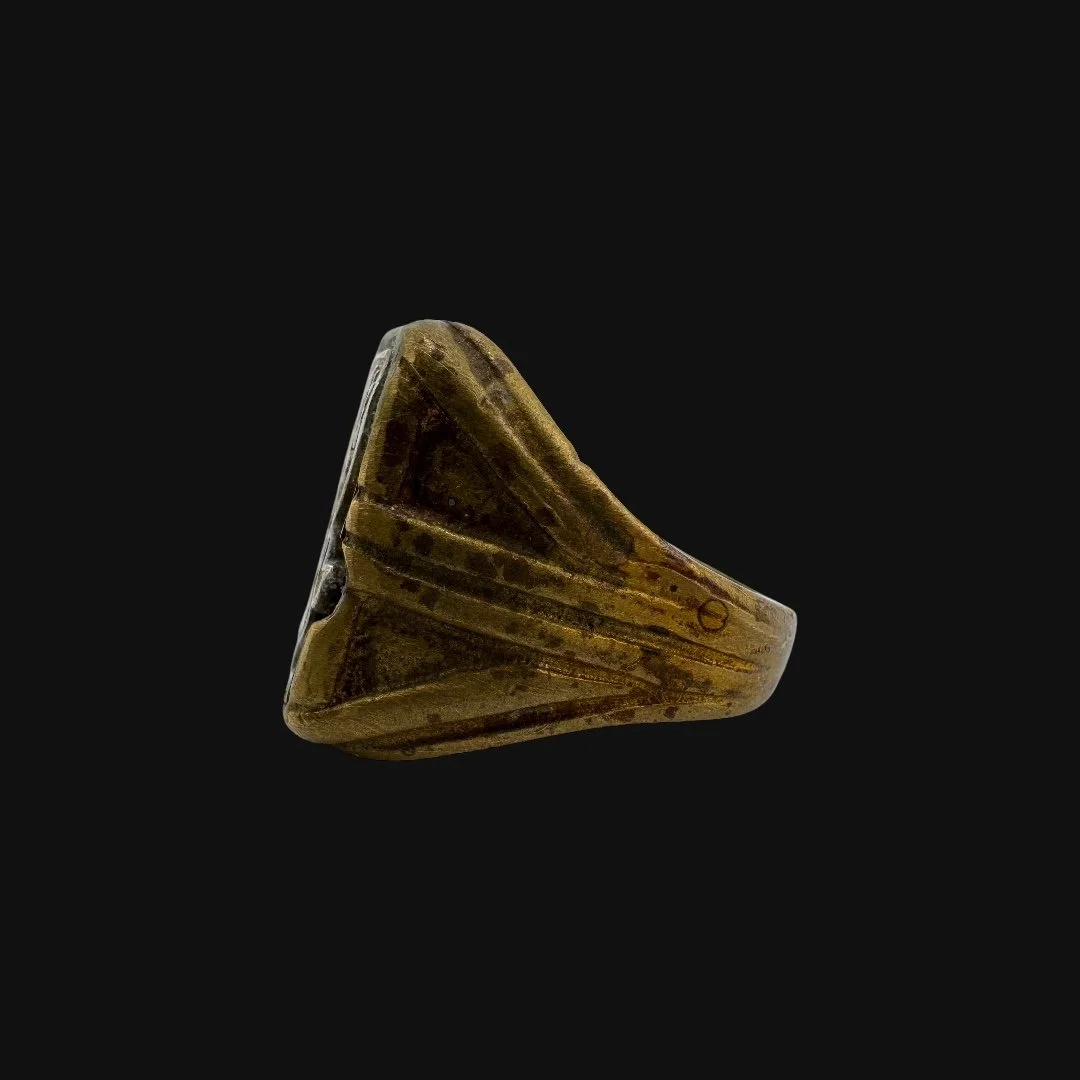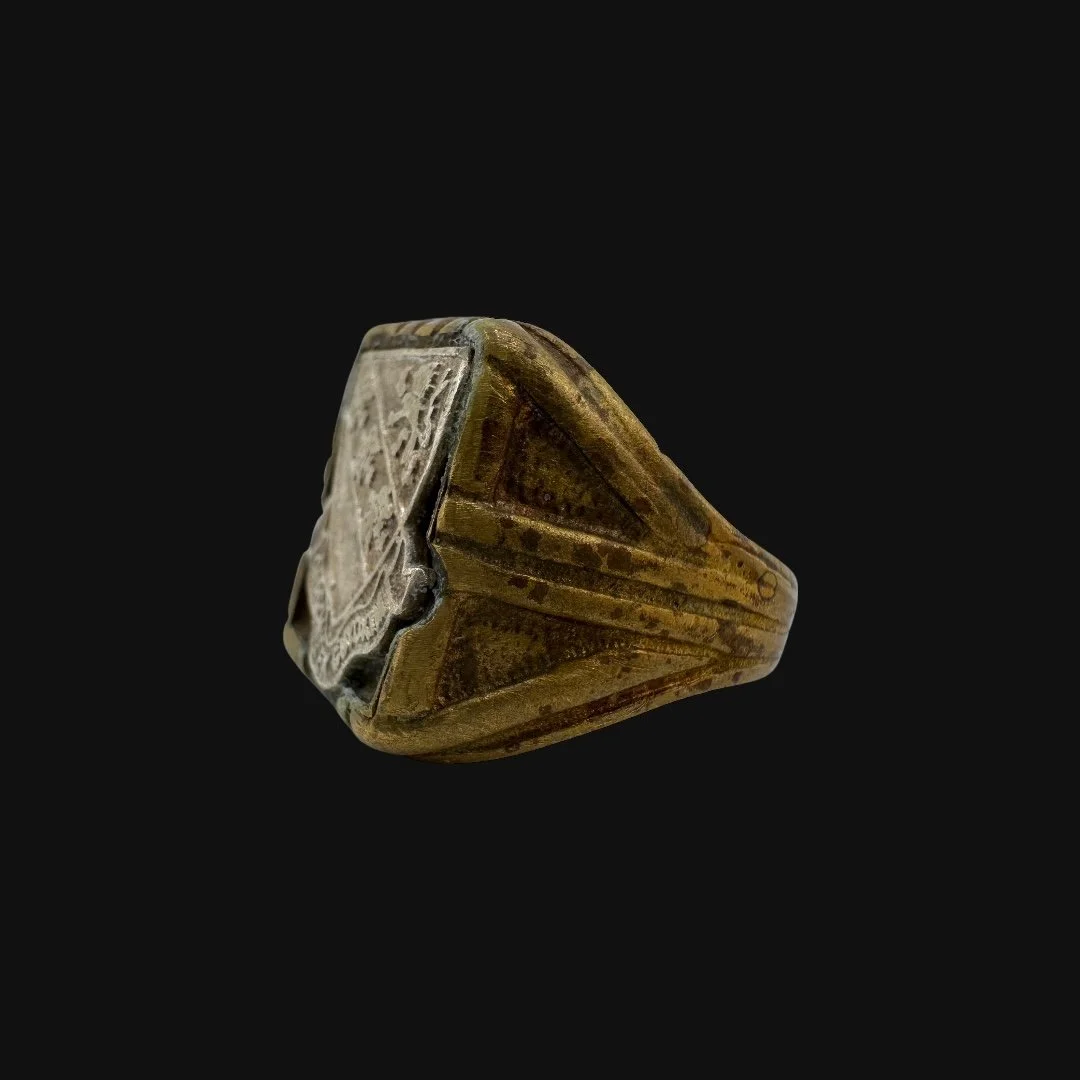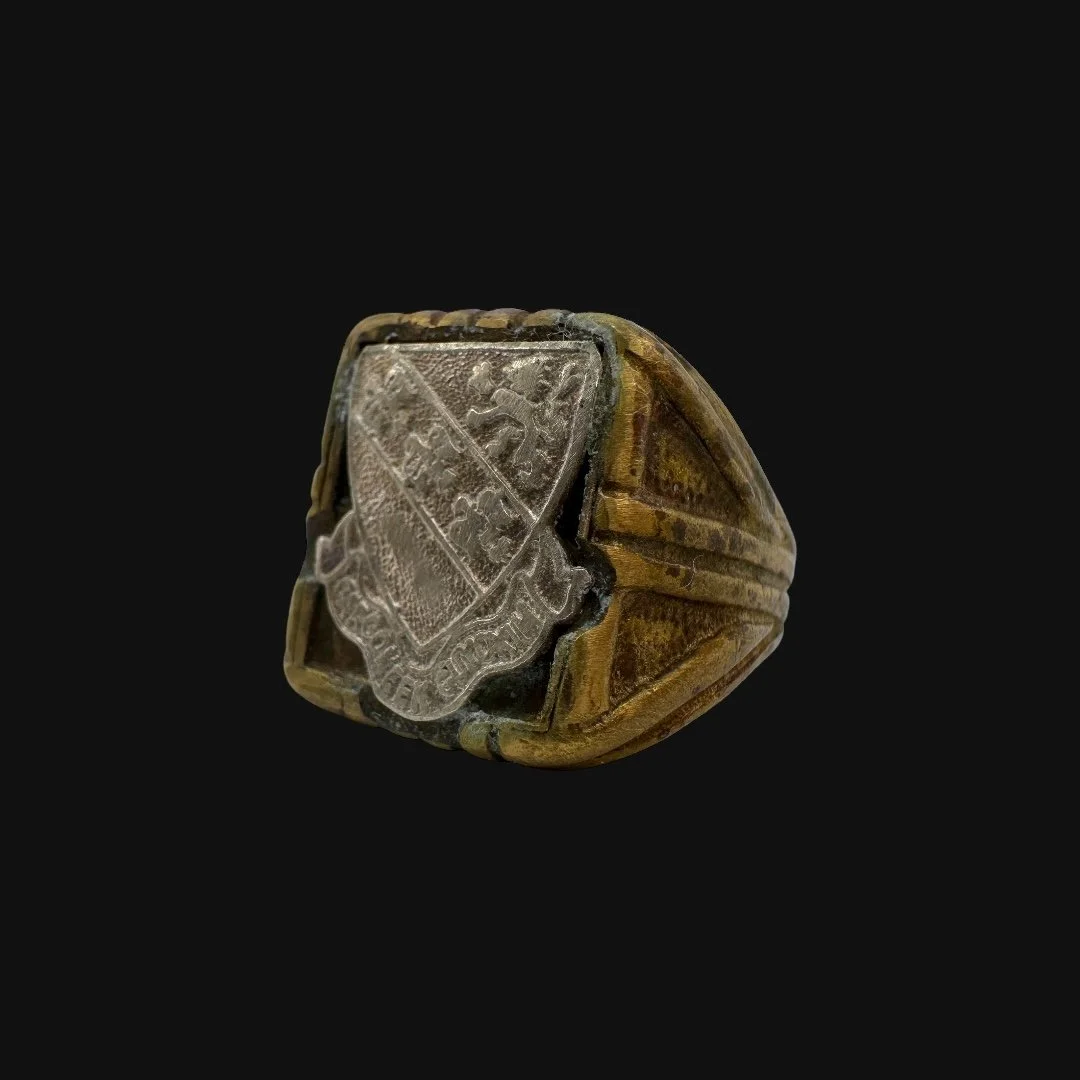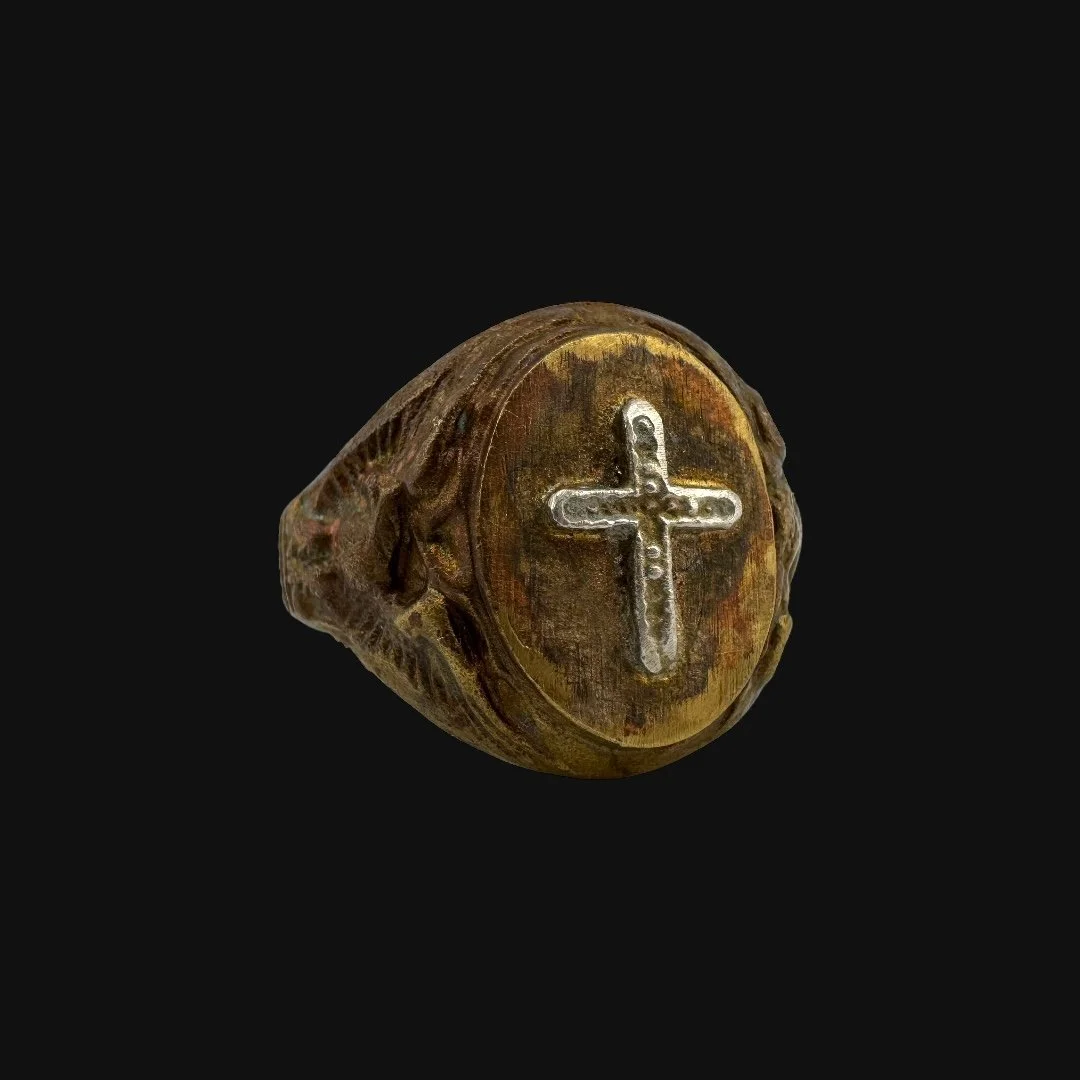 Image 1 of 13
Image 1 of 13

 Image 2 of 13
Image 2 of 13

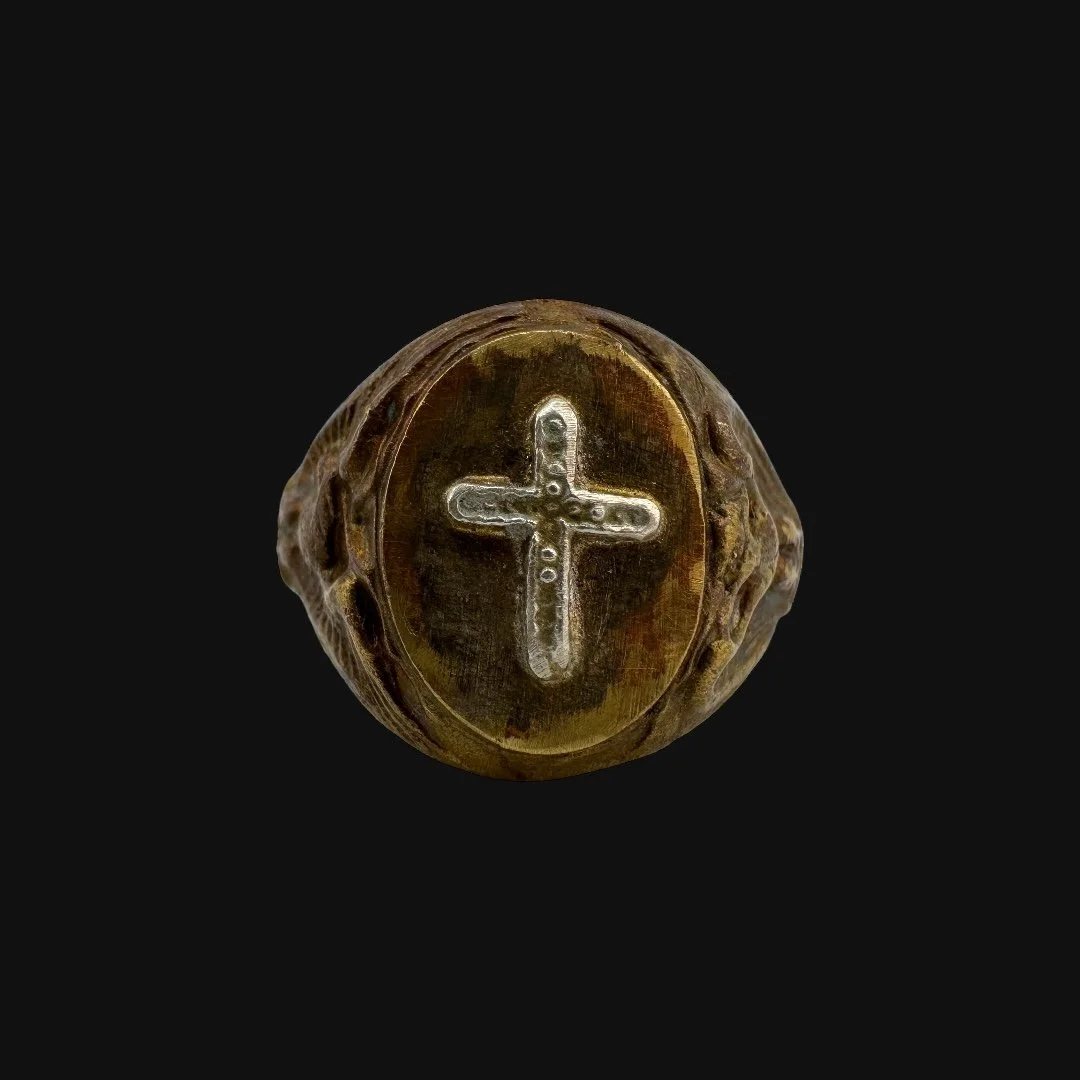 Image 3 of 13
Image 3 of 13

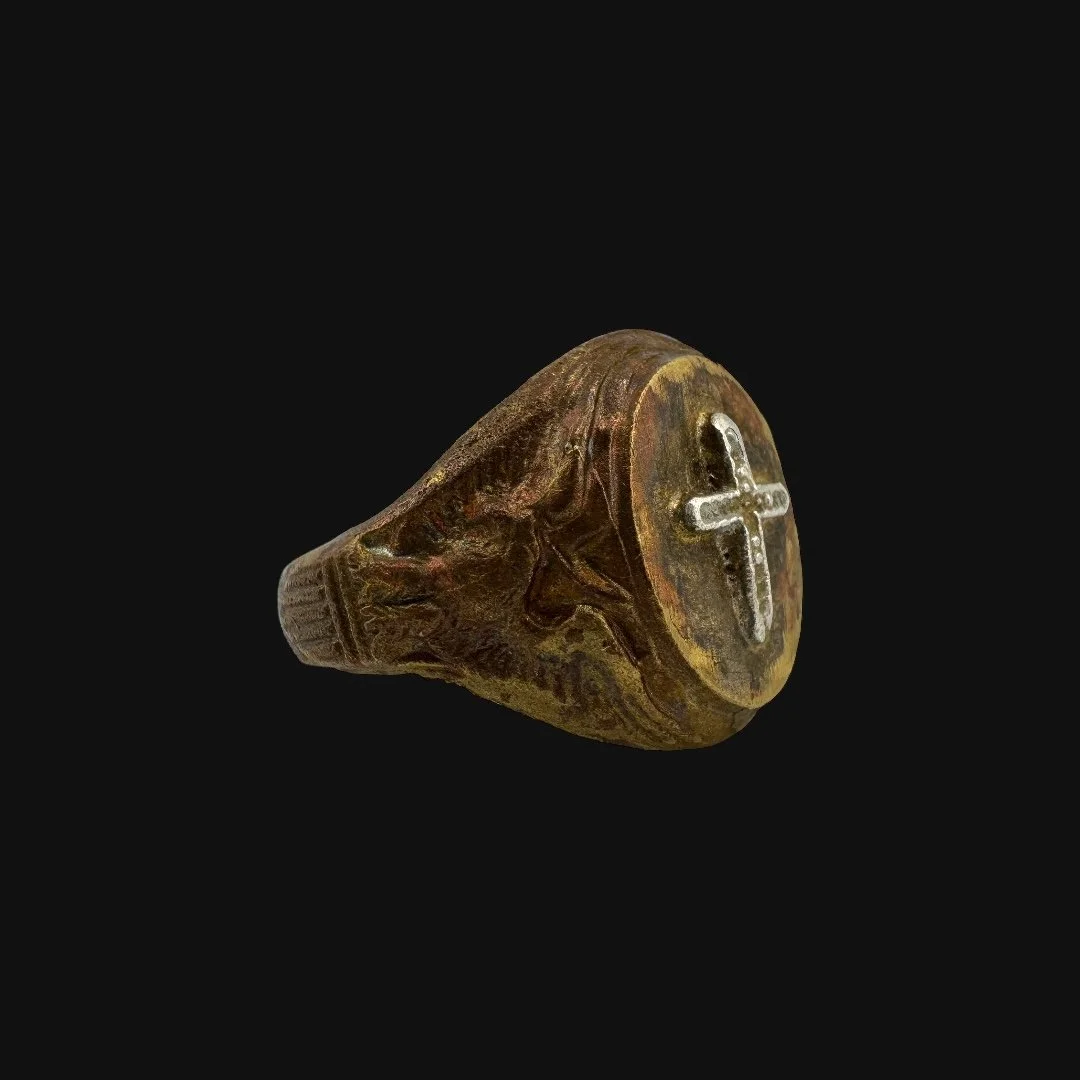 Image 4 of 13
Image 4 of 13

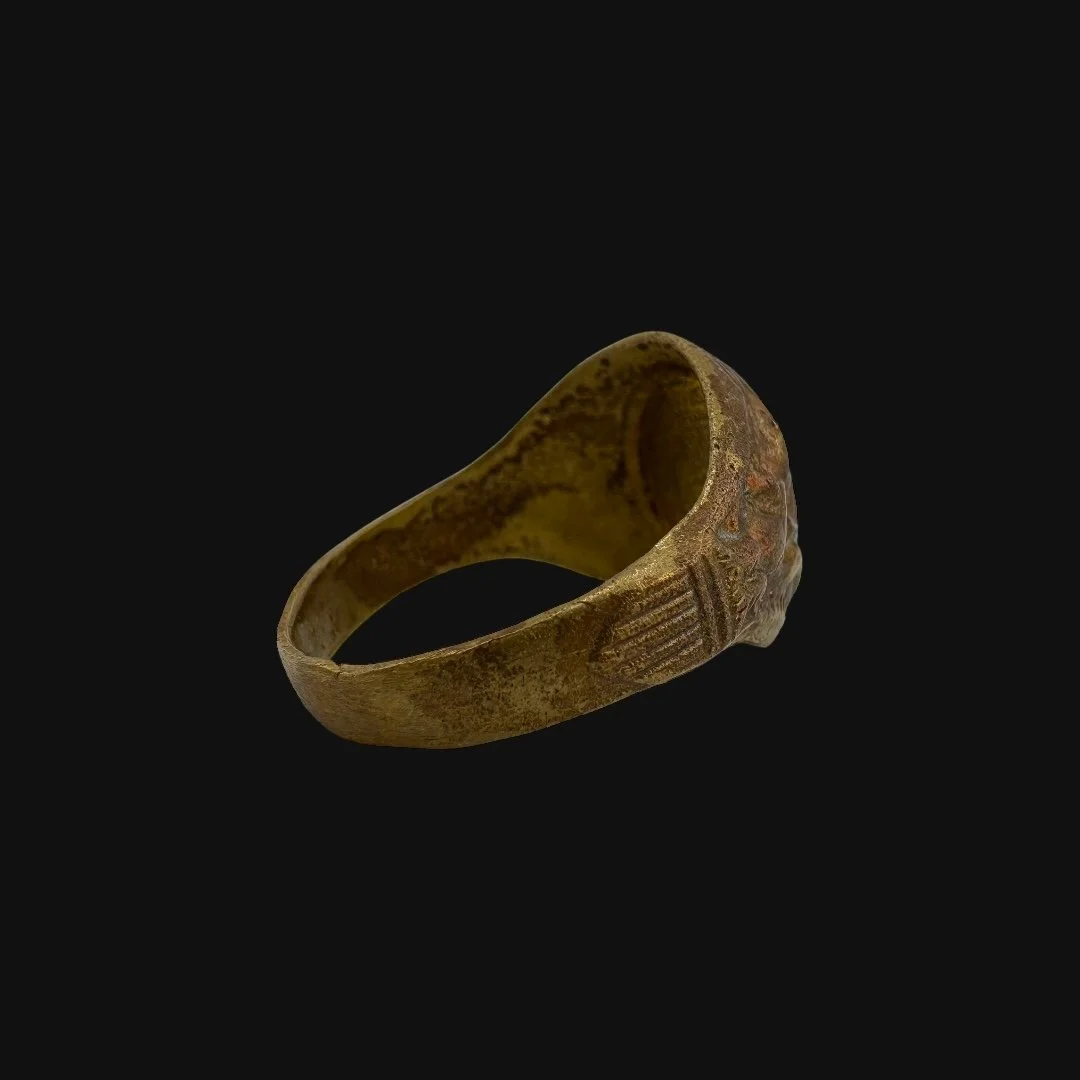 Image 5 of 13
Image 5 of 13

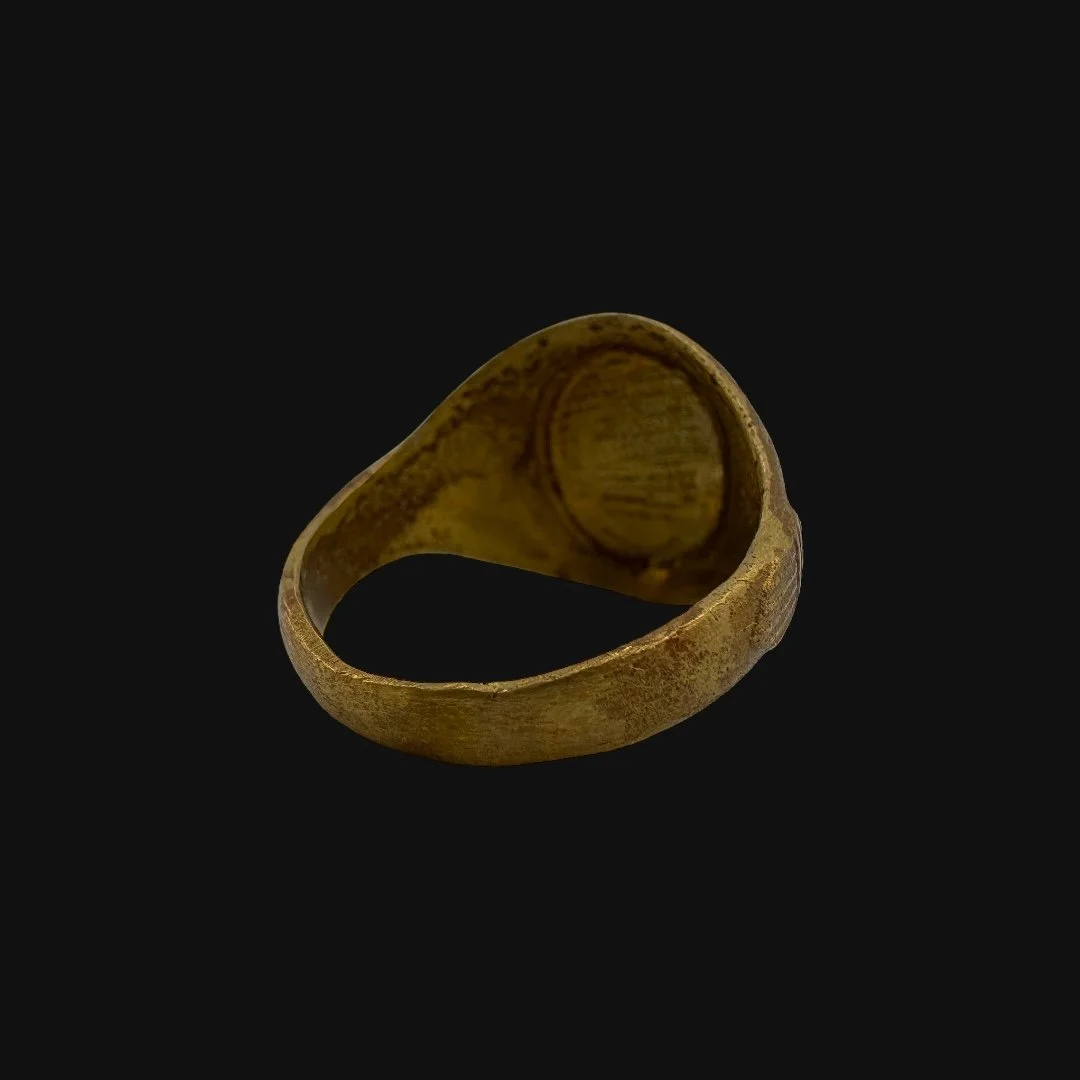 Image 6 of 13
Image 6 of 13

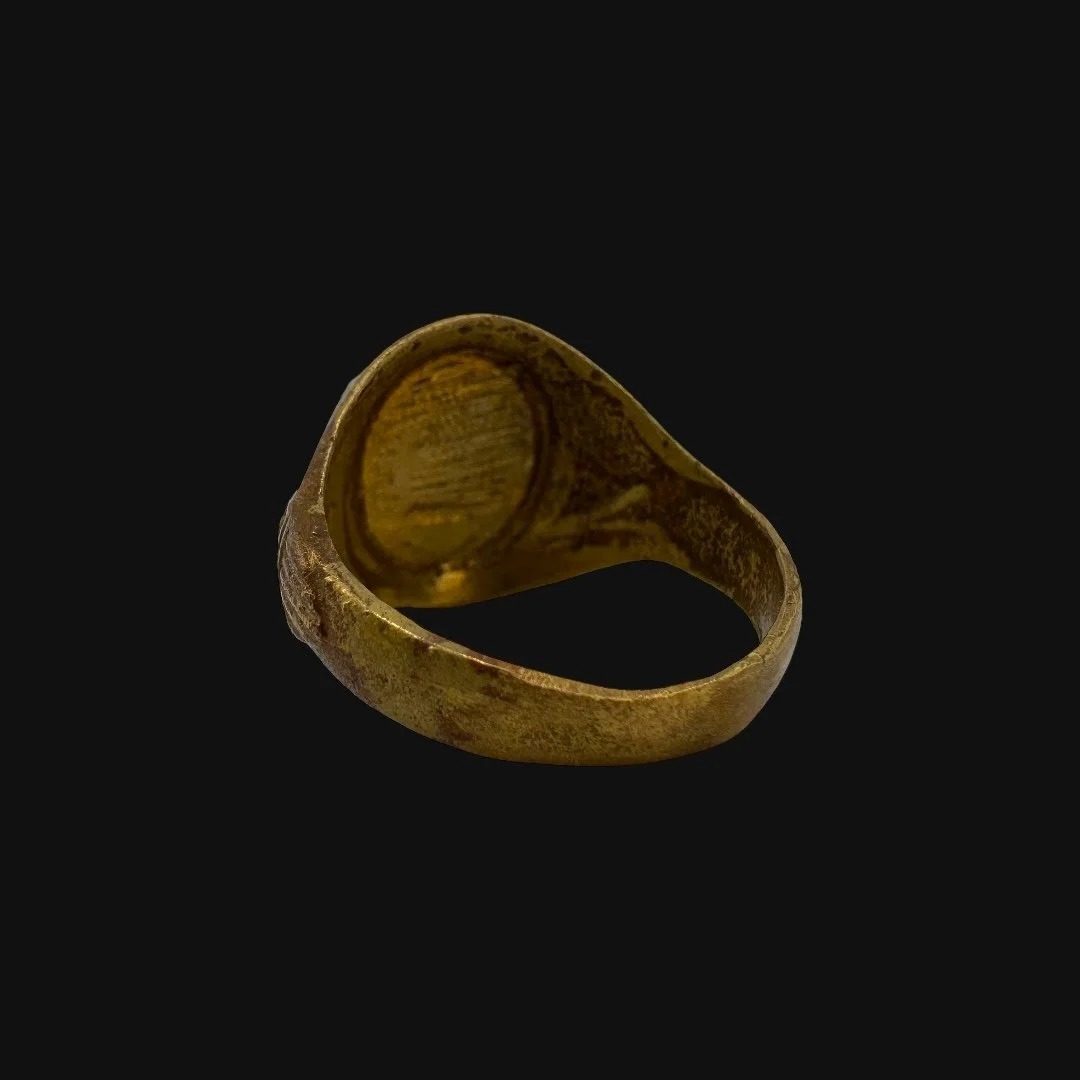 Image 7 of 13
Image 7 of 13

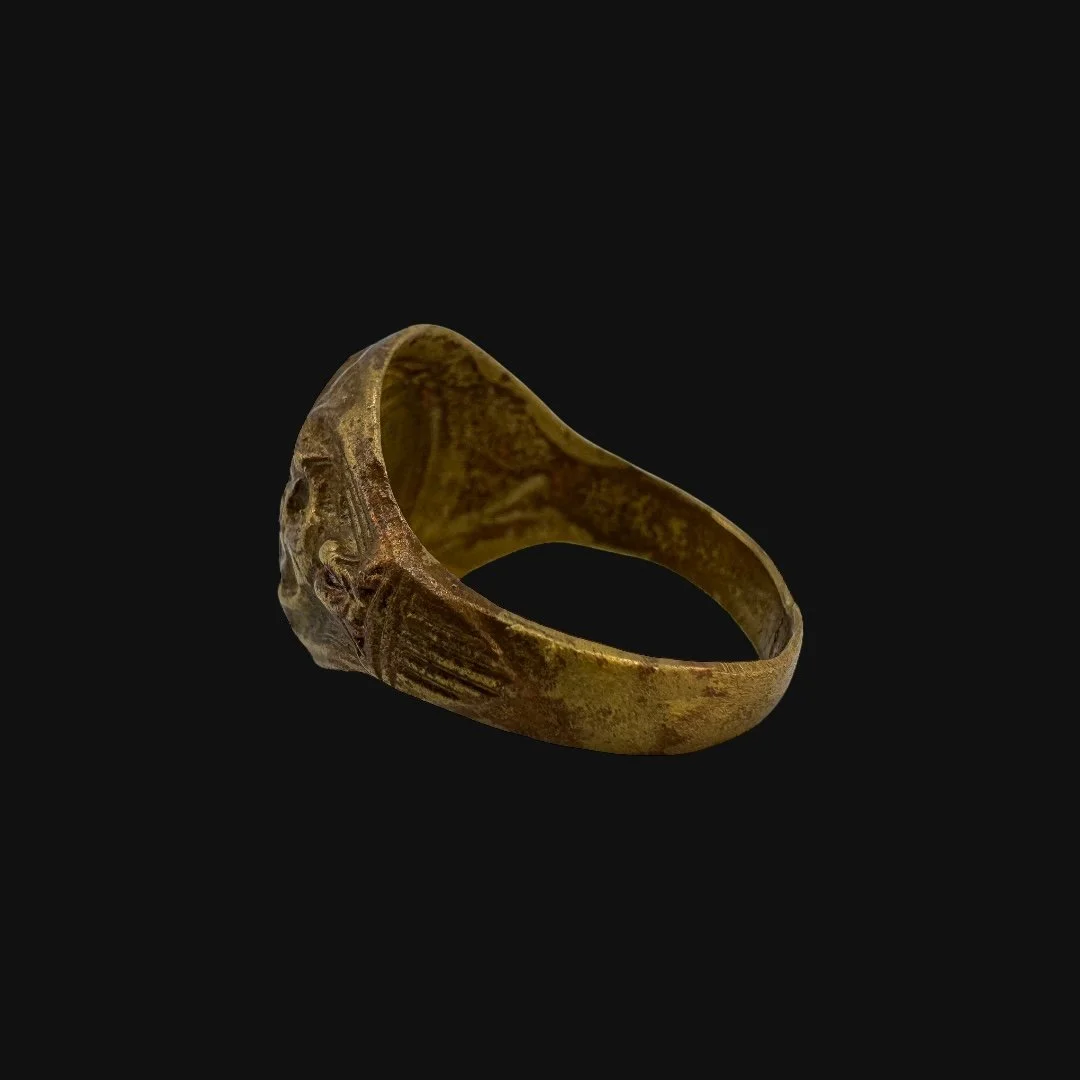 Image 8 of 13
Image 8 of 13

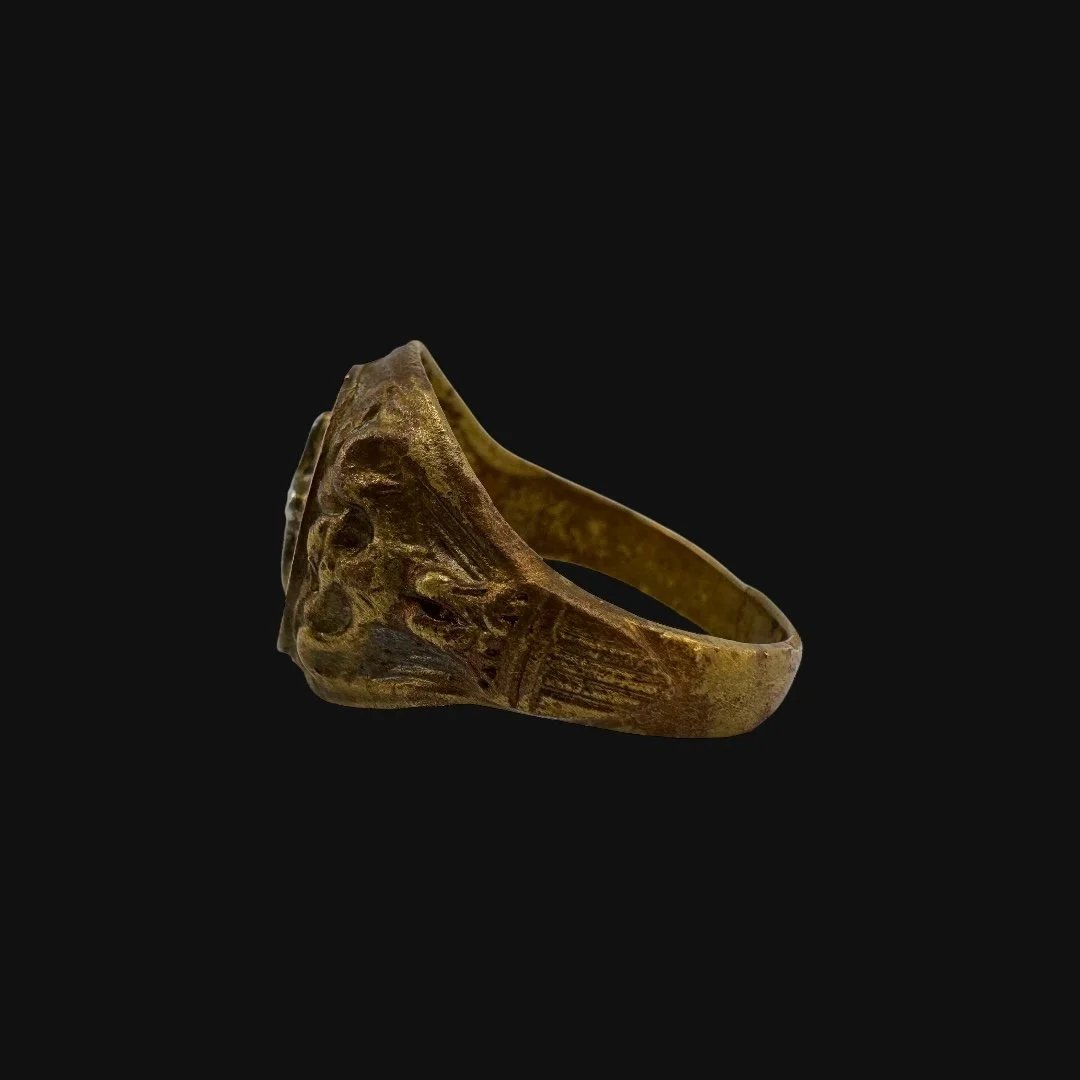 Image 9 of 13
Image 9 of 13

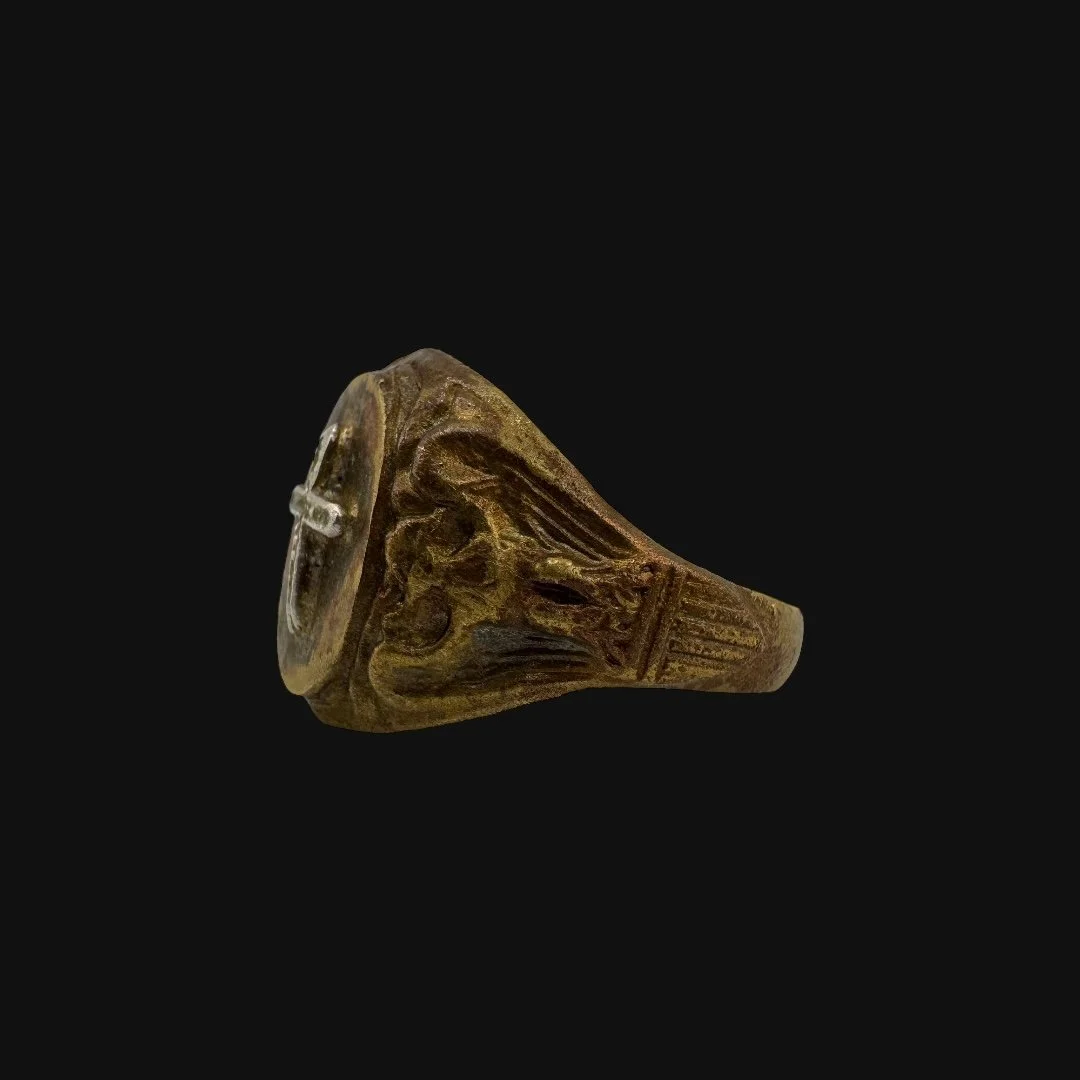 Image 10 of 13
Image 10 of 13

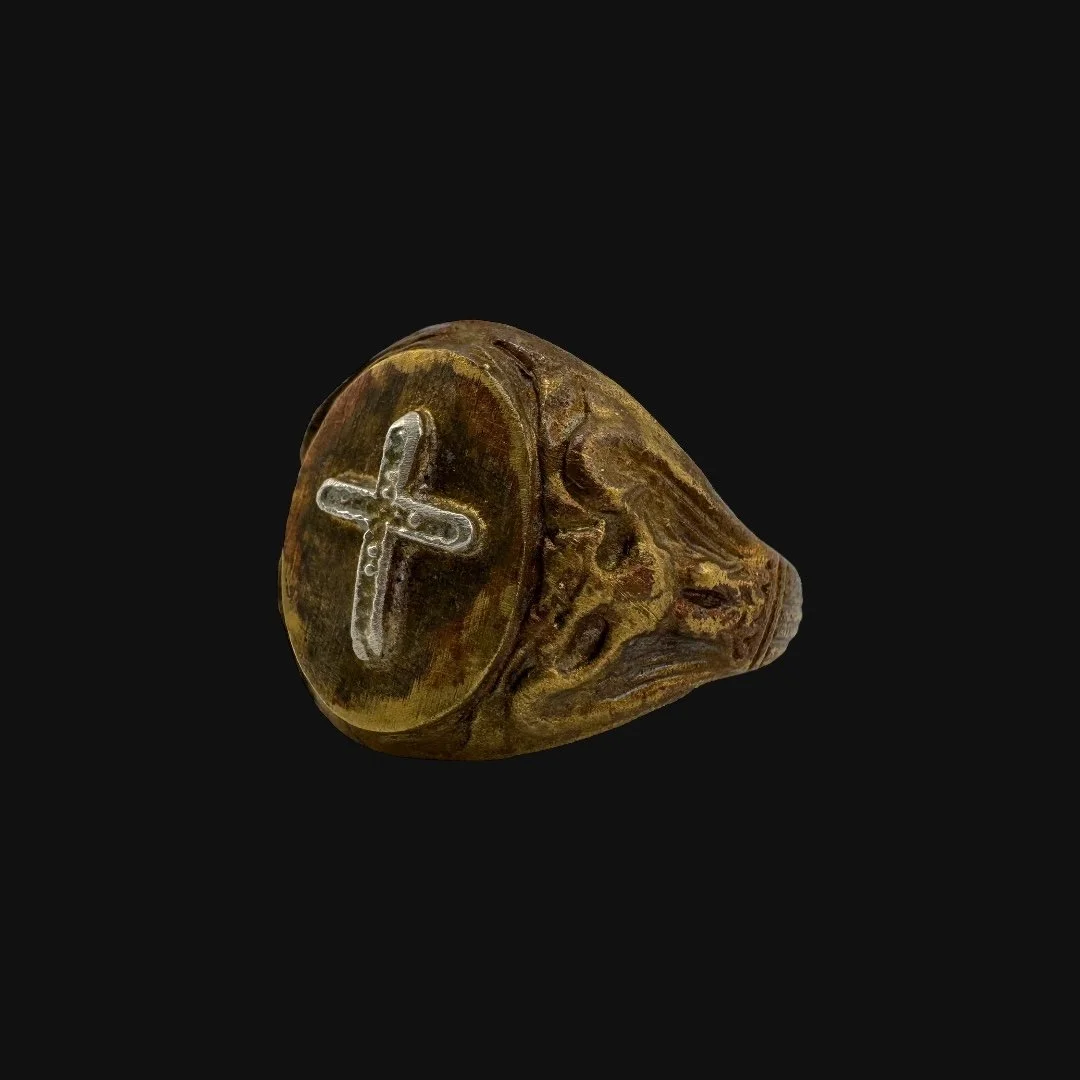 Image 11 of 13
Image 11 of 13

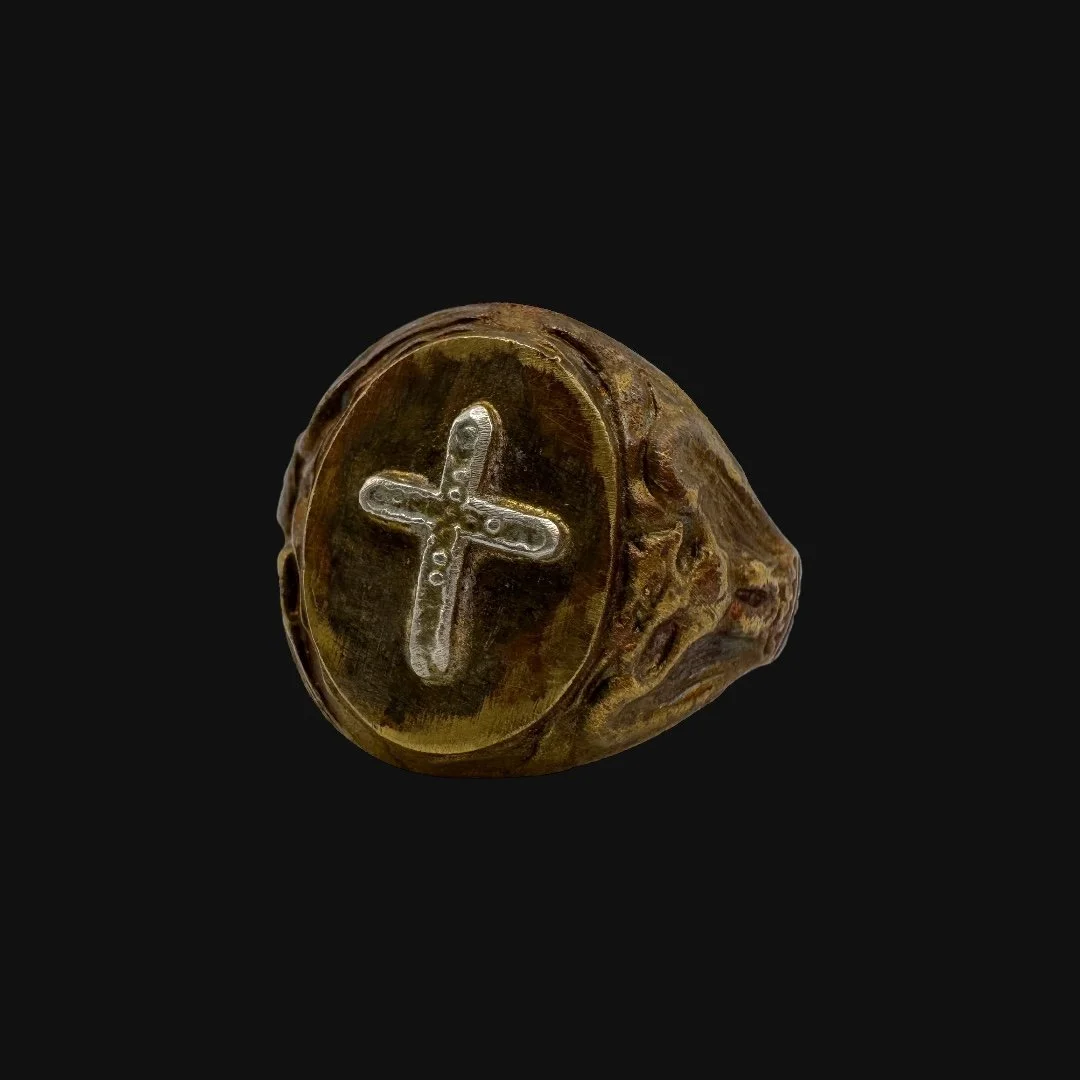 Image 12 of 13
Image 12 of 13

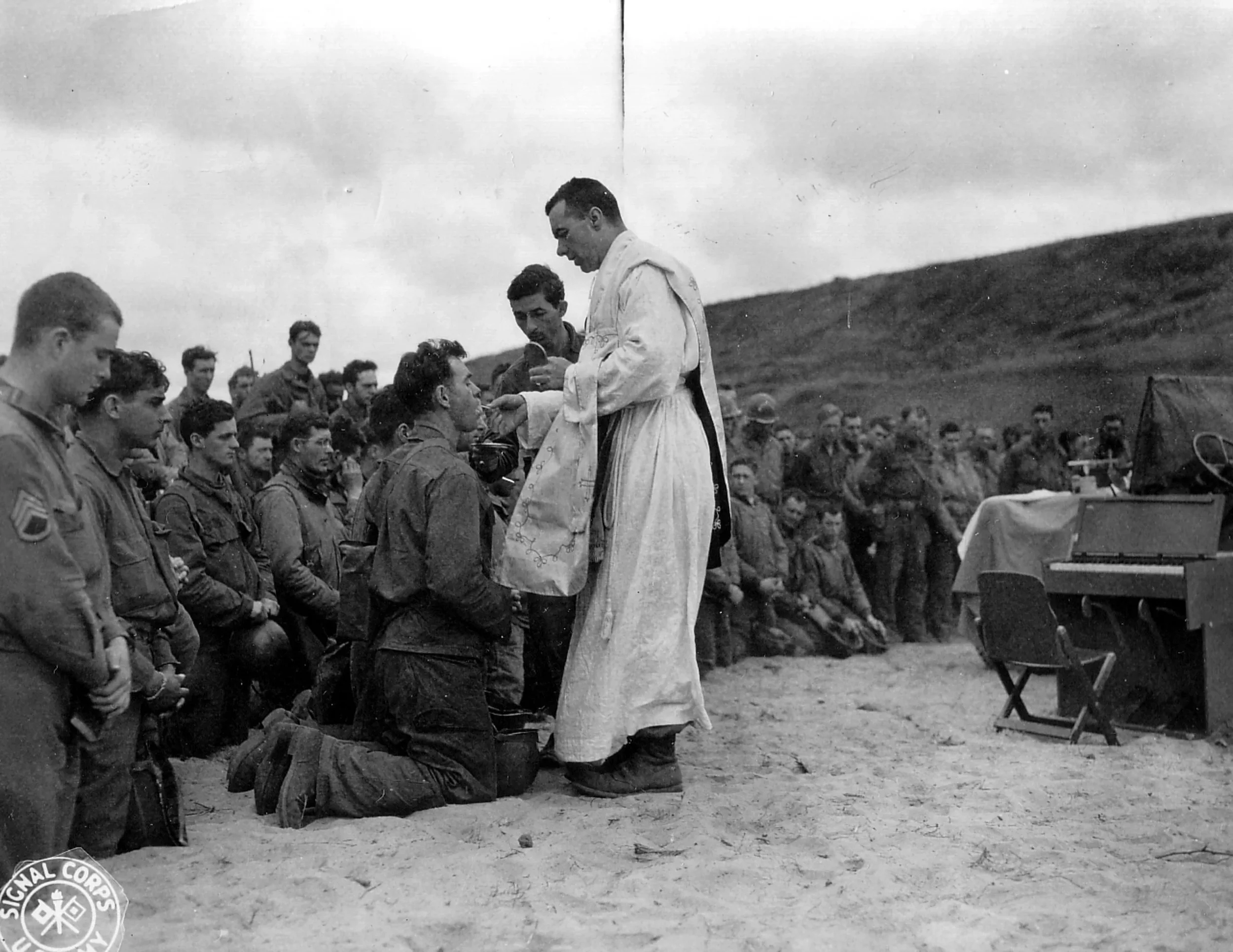 Image 13 of 13
Image 13 of 13














Original WWII 1943-1945 U.S. Army “Chaplain Corps” Religious Cross Military Ring (Size 11)
Comes with a hand-signed C.O.A. and a full historical research write-up
From: World War II
Branch: U.S. Army (Chaplain Corps)
Dated: 1943-1945
Ring Size: 11 (US)
Material: Bronze & Sterling Silver
Wearable History Collection:
This authentic 1943-1945 WWII-era ring, preserved in its original and unaltered condition, combines exceptional craftsmanship with lasting durability, making it fully suitable for modern wear today. As part of our exclusive World War II “Wearable History Ring Collection,” it offers the rare opportunity to own and wear a genuine piece of World War II. Both a timeless accessory and a tangible link to the past, this truly one-of-a-kind ring stands as a wearable tribute to the courage and sacrifice of a generation.
Historical Significance to the U.S. Army Chaplain Corps During WWII:
The U.S. Army Chaplain Corps played a vital yet often understated role in World War II, ministering to the spiritual, emotional, and moral needs of millions of soldiers across every theater of war. Chaplains provided worship services, sacraments, counseling, and comfort, often in the very heart of battle. They were present in North Africa, Italy, Normandy, the Pacific, and beyond, holding services in bombed-out churches, open fields, and jungles while artillery thundered or bullets flew overhead. For many soldiers, chaplains represented a bridge to home and faith, and their presence often gave men the courage to face the horrors of combat.
Chaplains were not merely religious figures; they were combat companions who shared danger and sacrifice. In North Africa and Italy, they cleared the dust of desert roads and prayed at Monte Cassino or Anzio while shells fell around them. On D-Day, chaplains landed with the first waves, offering last rites and prayers for the wounded and dying amid the carnage of Omaha and Utah Beaches. In the Pacific, chaplains endured the brutality of island warfare, conducting burials on Iwo Jima, comforting the wounded on Saipan, or baptizing men in shell holes filled with rainwater. Some even continued secret ministries in POW camps. Their bravery was exemplified by countless individuals, including the Four Chaplains aboard the USATDorchester, who gave up their life jackets and prayed together as their ship sank—a moment that became an enduring symbol of interfaith sacrifice and unity.
By war’s end, more than 8,900 chaplains had served, representing numerous faiths and traditions. Many earned medals for valor, and some gave their lives while ministering under fire. Their contributions extended beyond the battlefield, offering counsel for soldiers suffering from “combat fatigue,” long before PTSD was formally recognized, and restoring men’s morale when exhaustion and despair threatened to break them.
The historical significance of the Chaplain Corps rests not in battlefield maneuvers but in the human spirit they sustained. They reminded soldiers of higher values and deeper meaning amidst destruction, reinforcing unity, courage, and hope. In doing so, they helped soldiers endure the physical and psychological trials of war, leaving a legacy of compassion and sacrifice that endures as one of the most profound contributions of World War II.
The Legacy Within This Ring:
This original World War II U.S. Army Chaplain Corps ring is a rare and profoundly meaningful artifact, privately commissioned by a wartime chaplain who served on the front lines of the world’s deadliest conflict. Bearing a cross on its face, the ring allowed its owner to carry the emblem of his sacred calling not only on his uniform but also as a personal symbol worn daily on his hand. For chaplains who marched beside infantrymen, prayed over the wounded, and comforted the dying under fire, such rings became more than jewelry. They were reminders of faith, sacrifice, and the unwavering duty to bring light into the darkest places of war.
Every engraved detail reflects the quiet strength of these men, who gave soldiers courage before battle, laid to rest those who fell, and offered hope where despair seemed overwhelming. This ring stands today as a wearable relic of the Chaplain Corps’ legacy. It represents not only the chaplains’ devotion to God and country but also the unity and solace they provided to soldiers of every faith. More than a collectible, it endures as a tribute to those who carried the cross into the chaos of World War II, ensuring that even amid destruction, the spirit of compassion and faith was never lost.
Comes with a hand-signed C.O.A. and a full historical research write-up
From: World War II
Branch: U.S. Army (Chaplain Corps)
Dated: 1943-1945
Ring Size: 11 (US)
Material: Bronze & Sterling Silver
Wearable History Collection:
This authentic 1943-1945 WWII-era ring, preserved in its original and unaltered condition, combines exceptional craftsmanship with lasting durability, making it fully suitable for modern wear today. As part of our exclusive World War II “Wearable History Ring Collection,” it offers the rare opportunity to own and wear a genuine piece of World War II. Both a timeless accessory and a tangible link to the past, this truly one-of-a-kind ring stands as a wearable tribute to the courage and sacrifice of a generation.
Historical Significance to the U.S. Army Chaplain Corps During WWII:
The U.S. Army Chaplain Corps played a vital yet often understated role in World War II, ministering to the spiritual, emotional, and moral needs of millions of soldiers across every theater of war. Chaplains provided worship services, sacraments, counseling, and comfort, often in the very heart of battle. They were present in North Africa, Italy, Normandy, the Pacific, and beyond, holding services in bombed-out churches, open fields, and jungles while artillery thundered or bullets flew overhead. For many soldiers, chaplains represented a bridge to home and faith, and their presence often gave men the courage to face the horrors of combat.
Chaplains were not merely religious figures; they were combat companions who shared danger and sacrifice. In North Africa and Italy, they cleared the dust of desert roads and prayed at Monte Cassino or Anzio while shells fell around them. On D-Day, chaplains landed with the first waves, offering last rites and prayers for the wounded and dying amid the carnage of Omaha and Utah Beaches. In the Pacific, chaplains endured the brutality of island warfare, conducting burials on Iwo Jima, comforting the wounded on Saipan, or baptizing men in shell holes filled with rainwater. Some even continued secret ministries in POW camps. Their bravery was exemplified by countless individuals, including the Four Chaplains aboard the USATDorchester, who gave up their life jackets and prayed together as their ship sank—a moment that became an enduring symbol of interfaith sacrifice and unity.
By war’s end, more than 8,900 chaplains had served, representing numerous faiths and traditions. Many earned medals for valor, and some gave their lives while ministering under fire. Their contributions extended beyond the battlefield, offering counsel for soldiers suffering from “combat fatigue,” long before PTSD was formally recognized, and restoring men’s morale when exhaustion and despair threatened to break them.
The historical significance of the Chaplain Corps rests not in battlefield maneuvers but in the human spirit they sustained. They reminded soldiers of higher values and deeper meaning amidst destruction, reinforcing unity, courage, and hope. In doing so, they helped soldiers endure the physical and psychological trials of war, leaving a legacy of compassion and sacrifice that endures as one of the most profound contributions of World War II.
The Legacy Within This Ring:
This original World War II U.S. Army Chaplain Corps ring is a rare and profoundly meaningful artifact, privately commissioned by a wartime chaplain who served on the front lines of the world’s deadliest conflict. Bearing a cross on its face, the ring allowed its owner to carry the emblem of his sacred calling not only on his uniform but also as a personal symbol worn daily on his hand. For chaplains who marched beside infantrymen, prayed over the wounded, and comforted the dying under fire, such rings became more than jewelry. They were reminders of faith, sacrifice, and the unwavering duty to bring light into the darkest places of war.
Every engraved detail reflects the quiet strength of these men, who gave soldiers courage before battle, laid to rest those who fell, and offered hope where despair seemed overwhelming. This ring stands today as a wearable relic of the Chaplain Corps’ legacy. It represents not only the chaplains’ devotion to God and country but also the unity and solace they provided to soldiers of every faith. More than a collectible, it endures as a tribute to those who carried the cross into the chaos of World War II, ensuring that even amid destruction, the spirit of compassion and faith was never lost.
